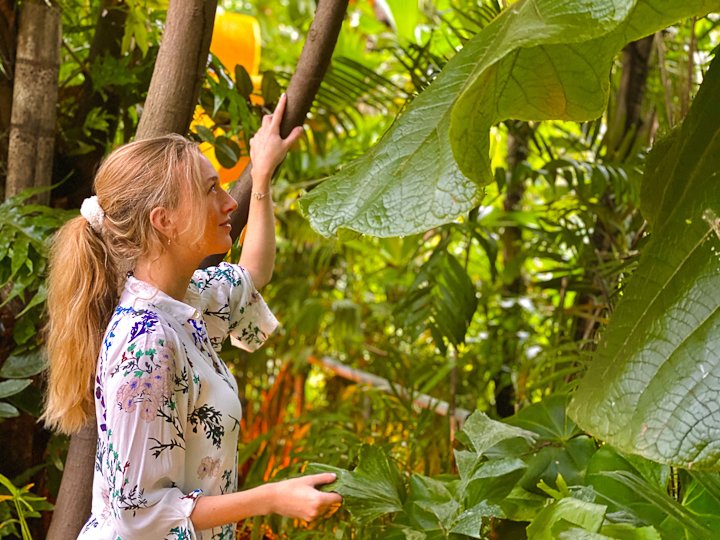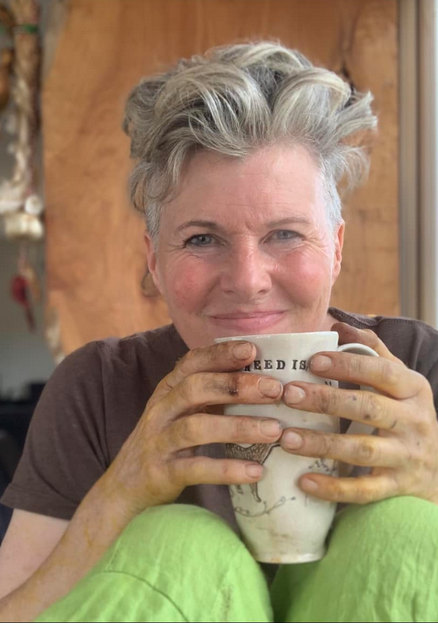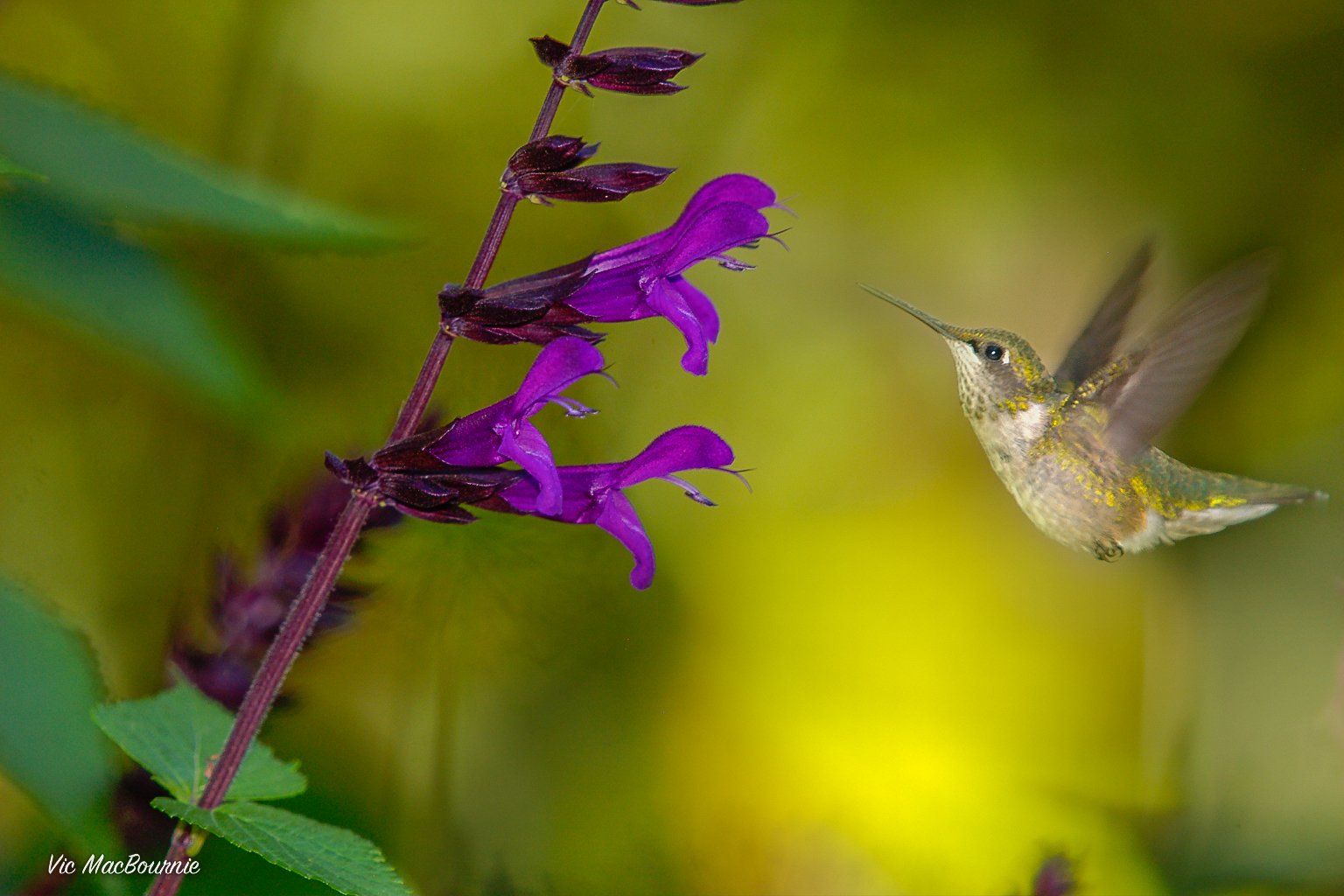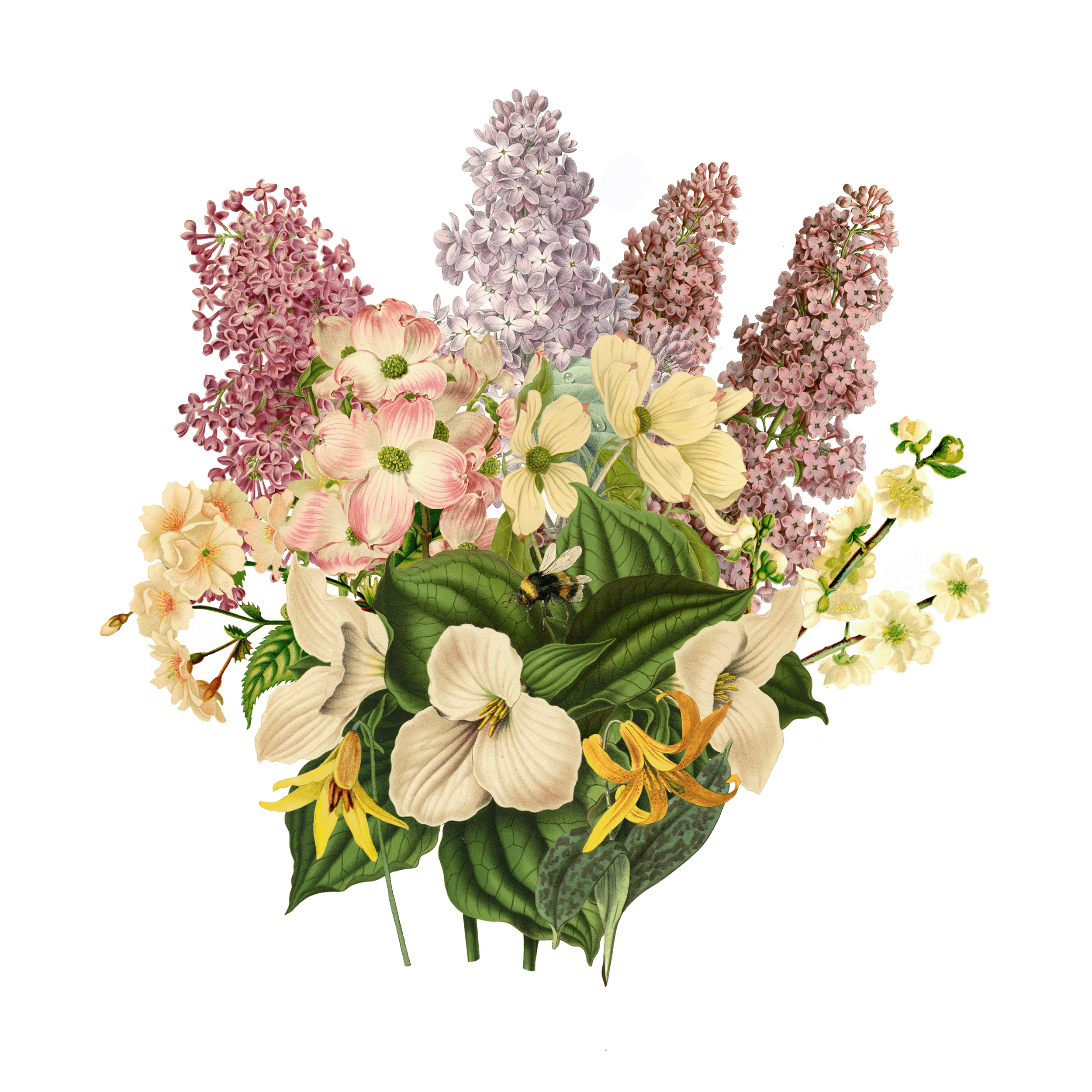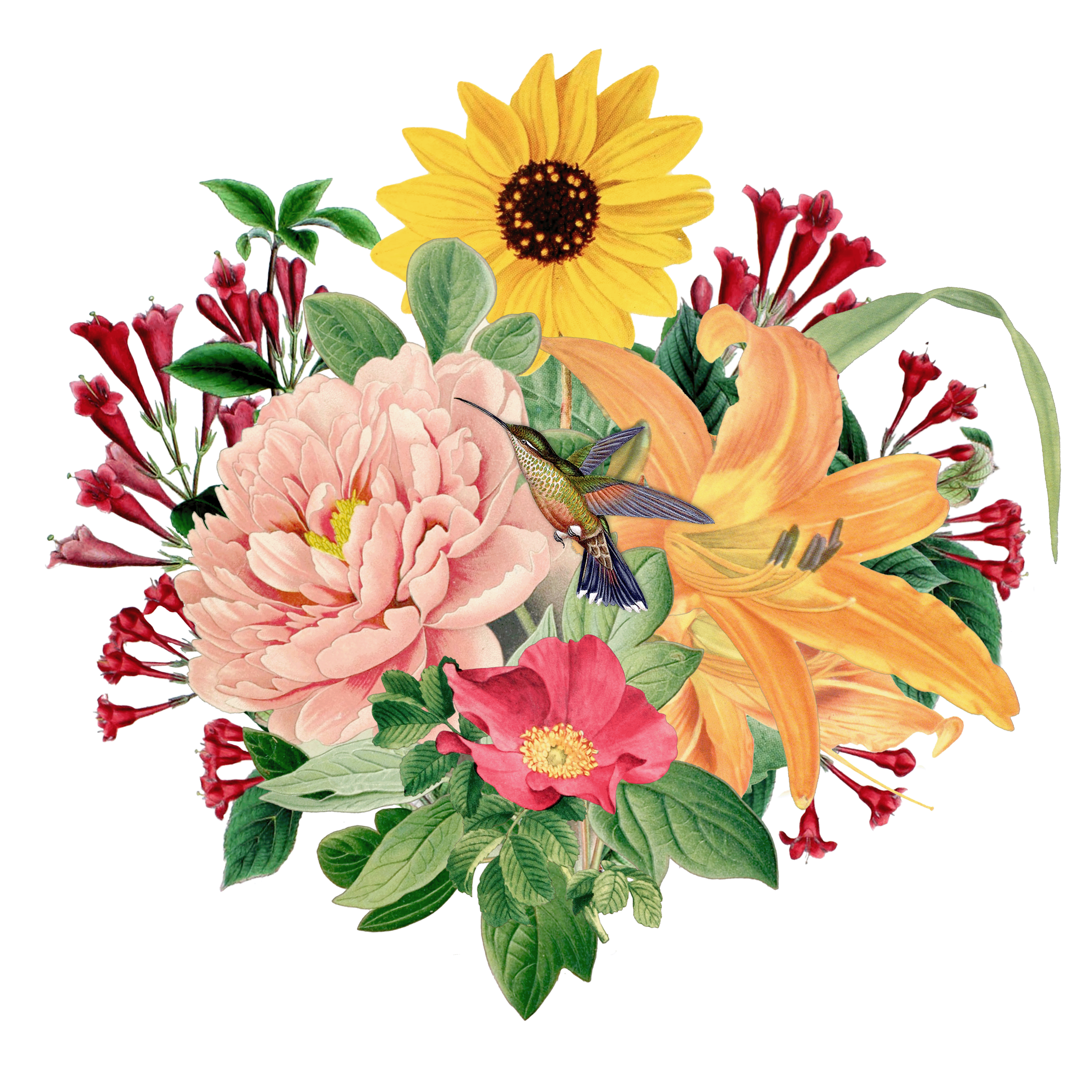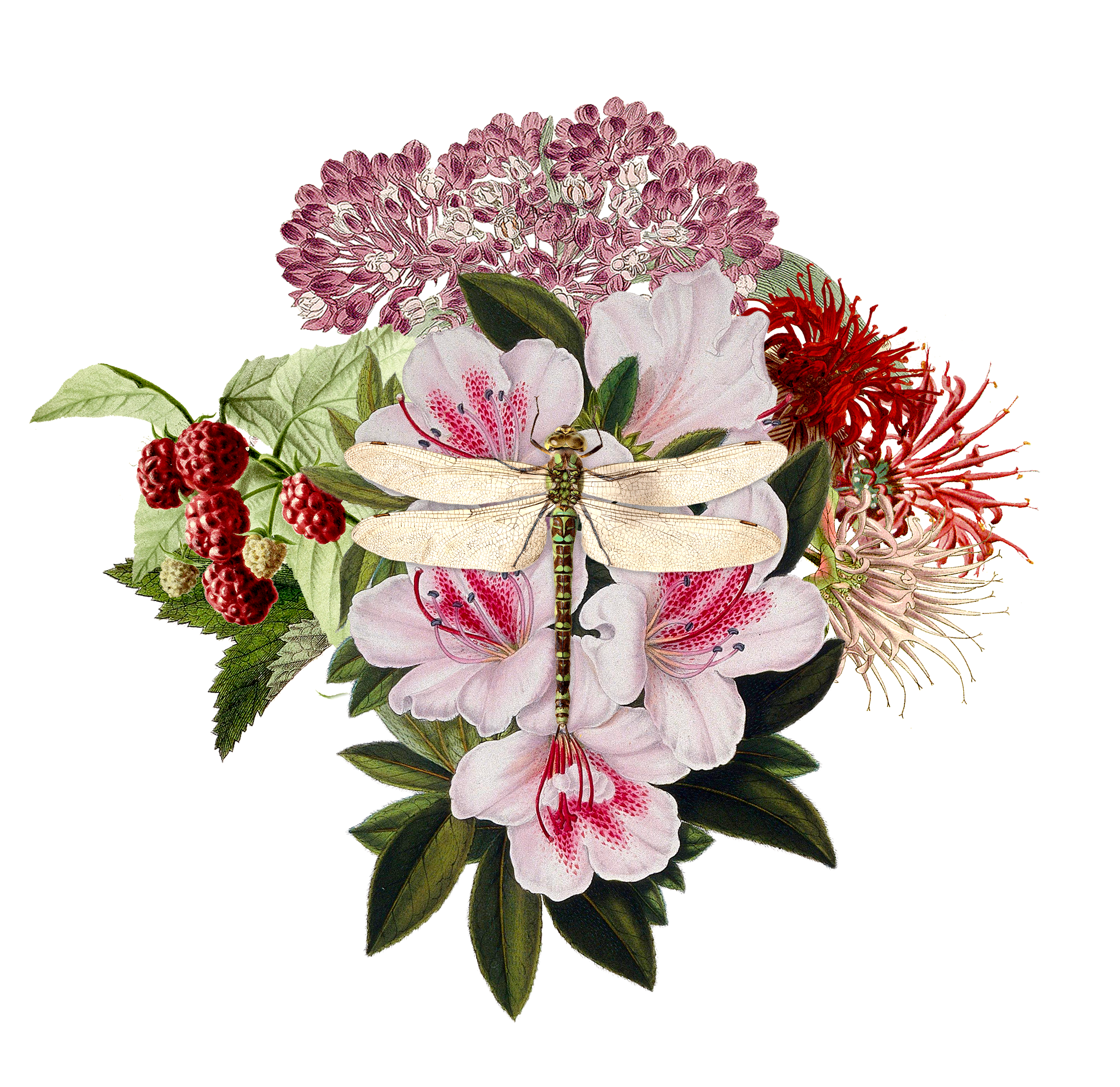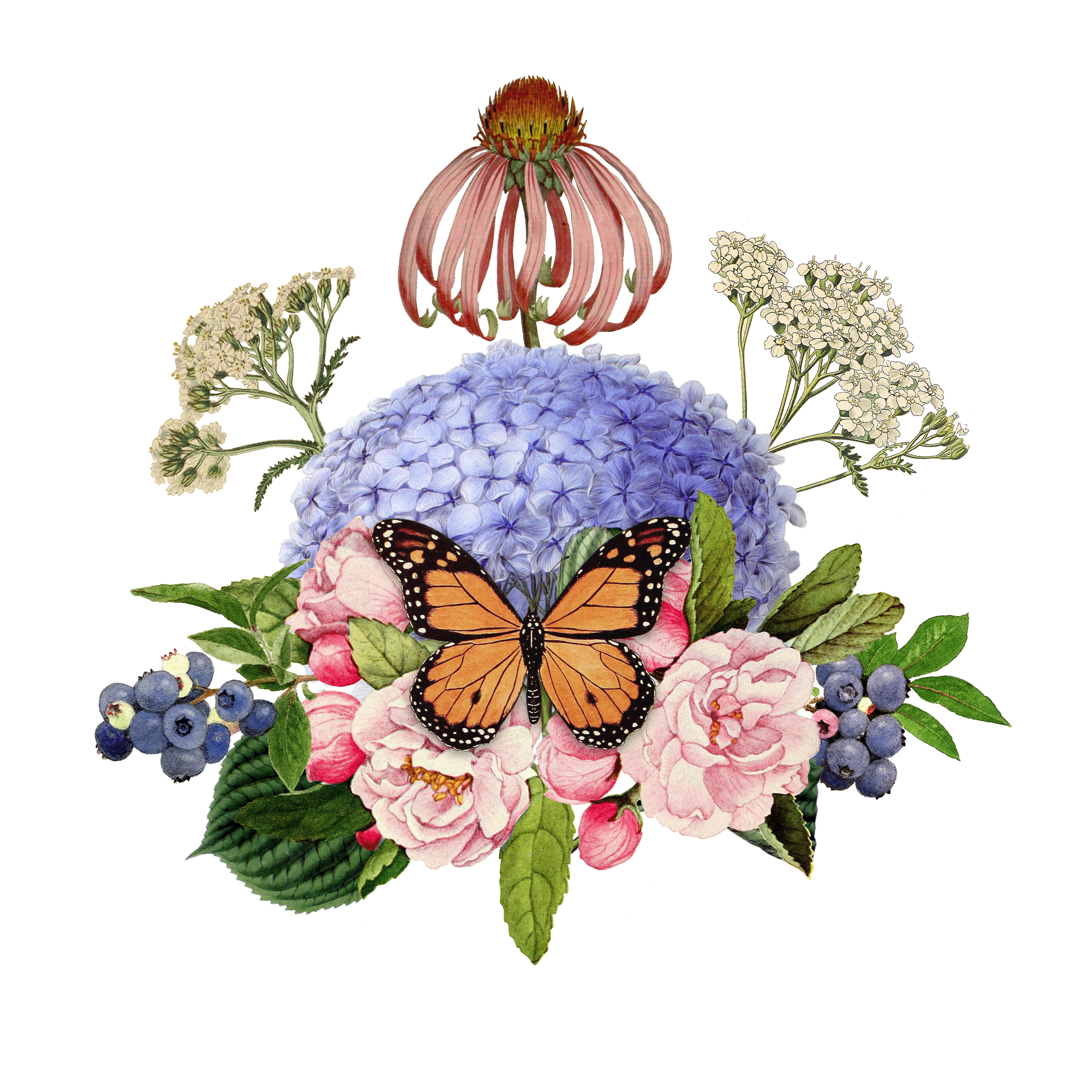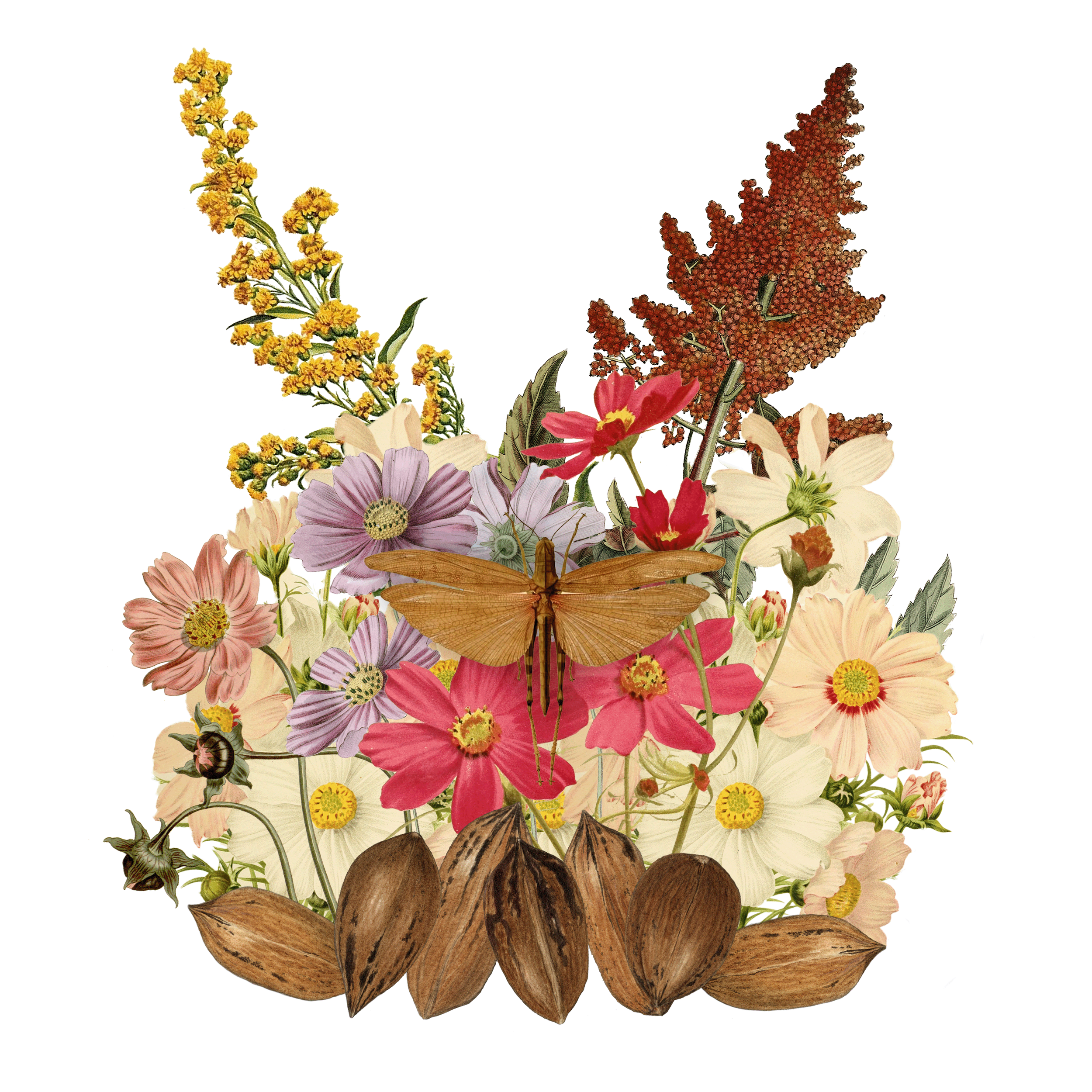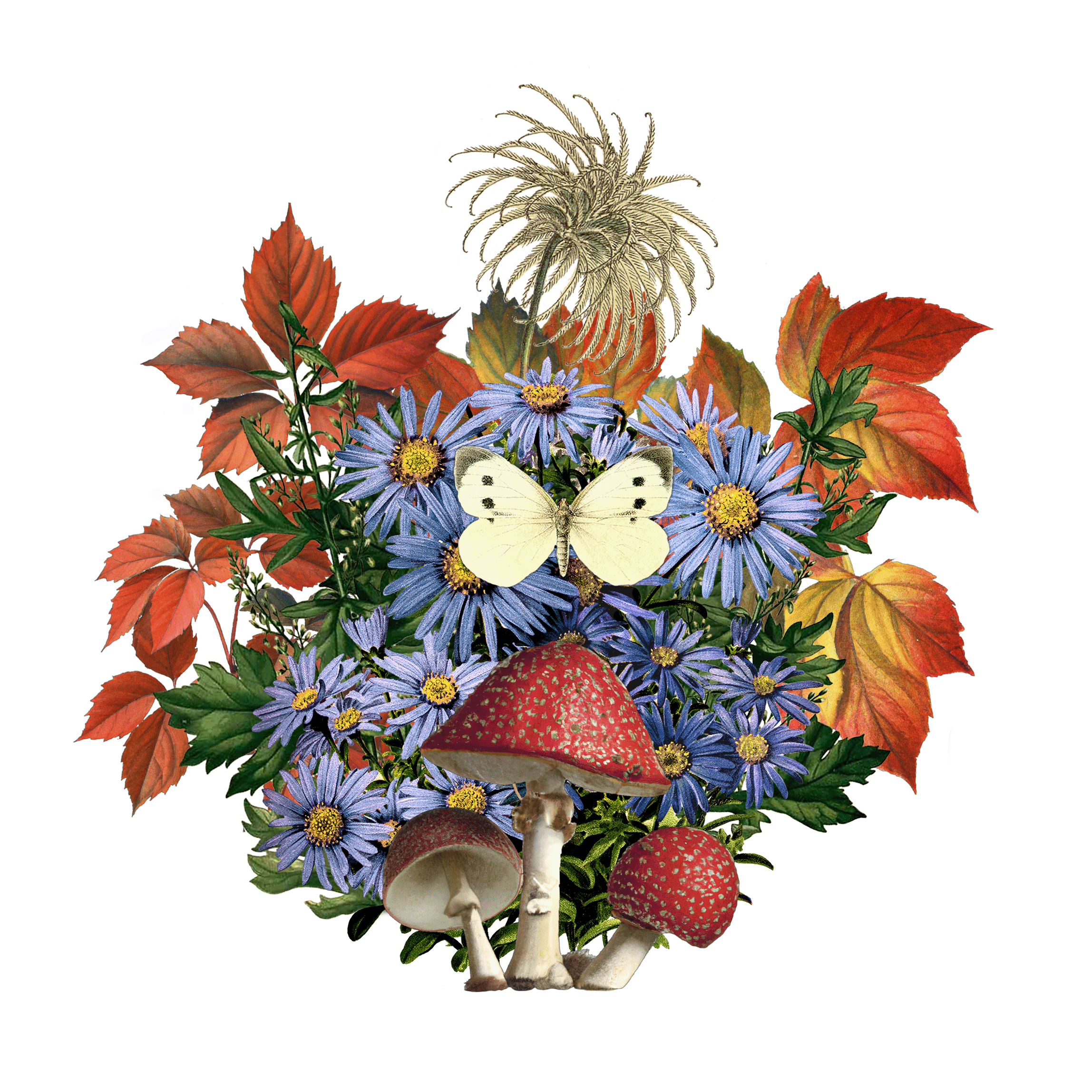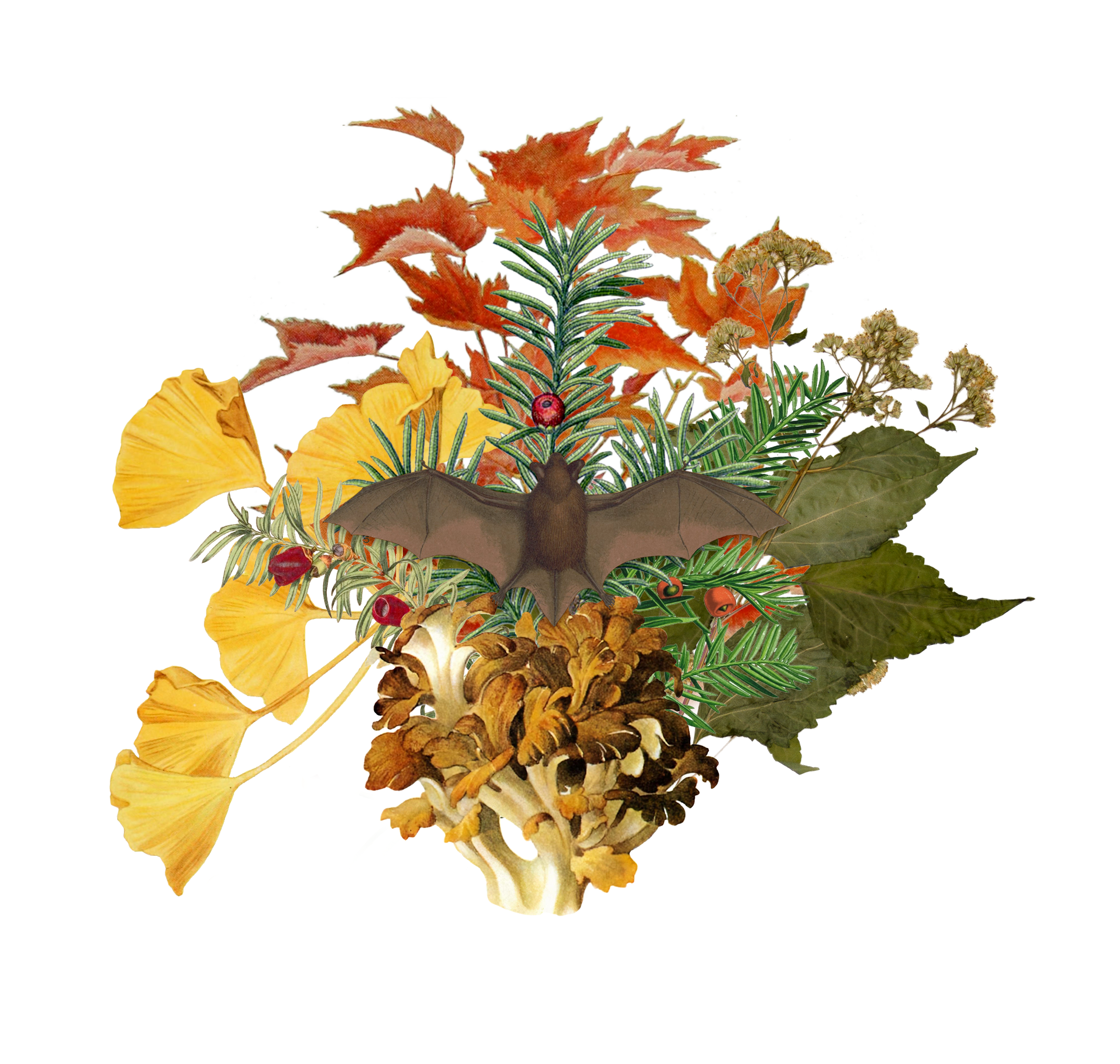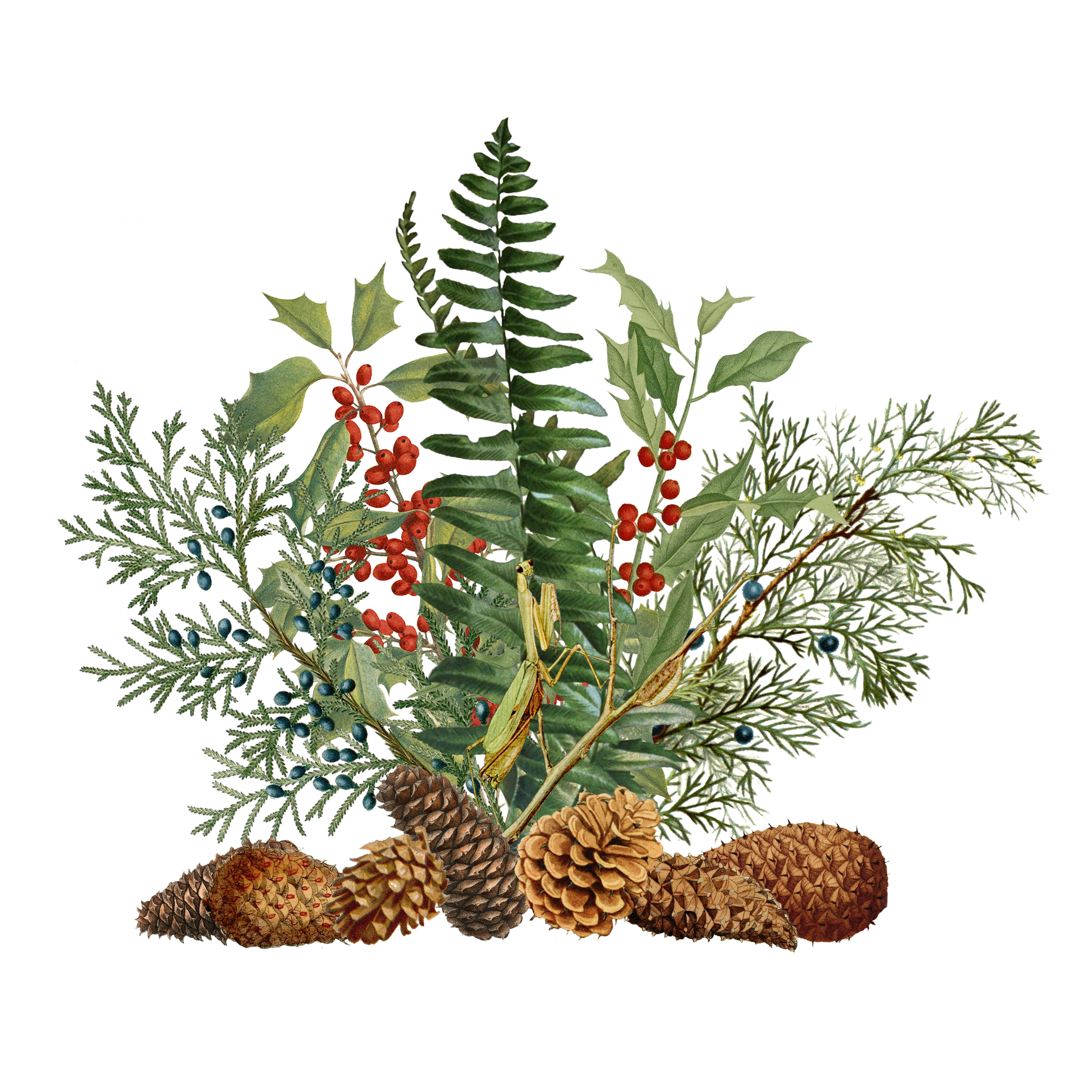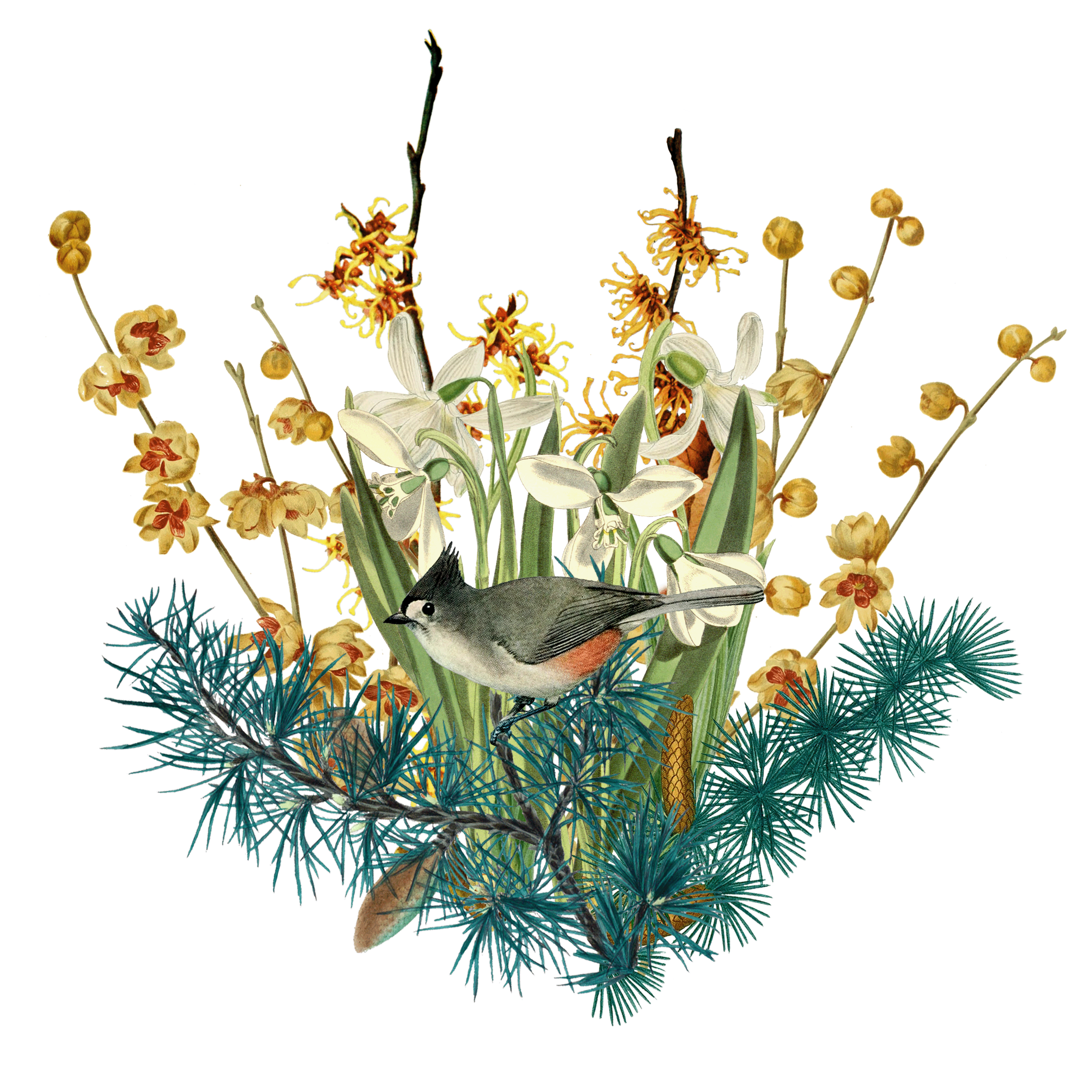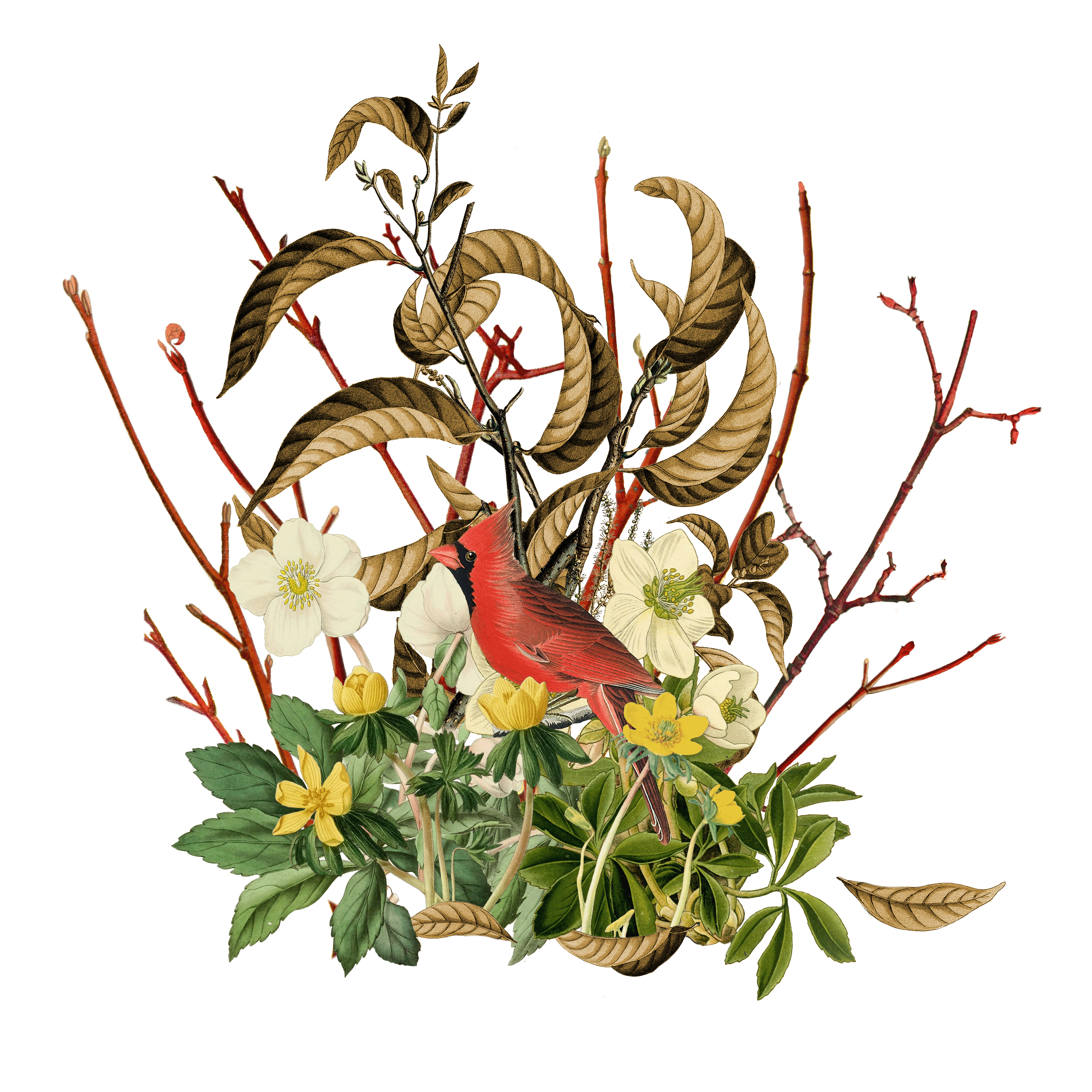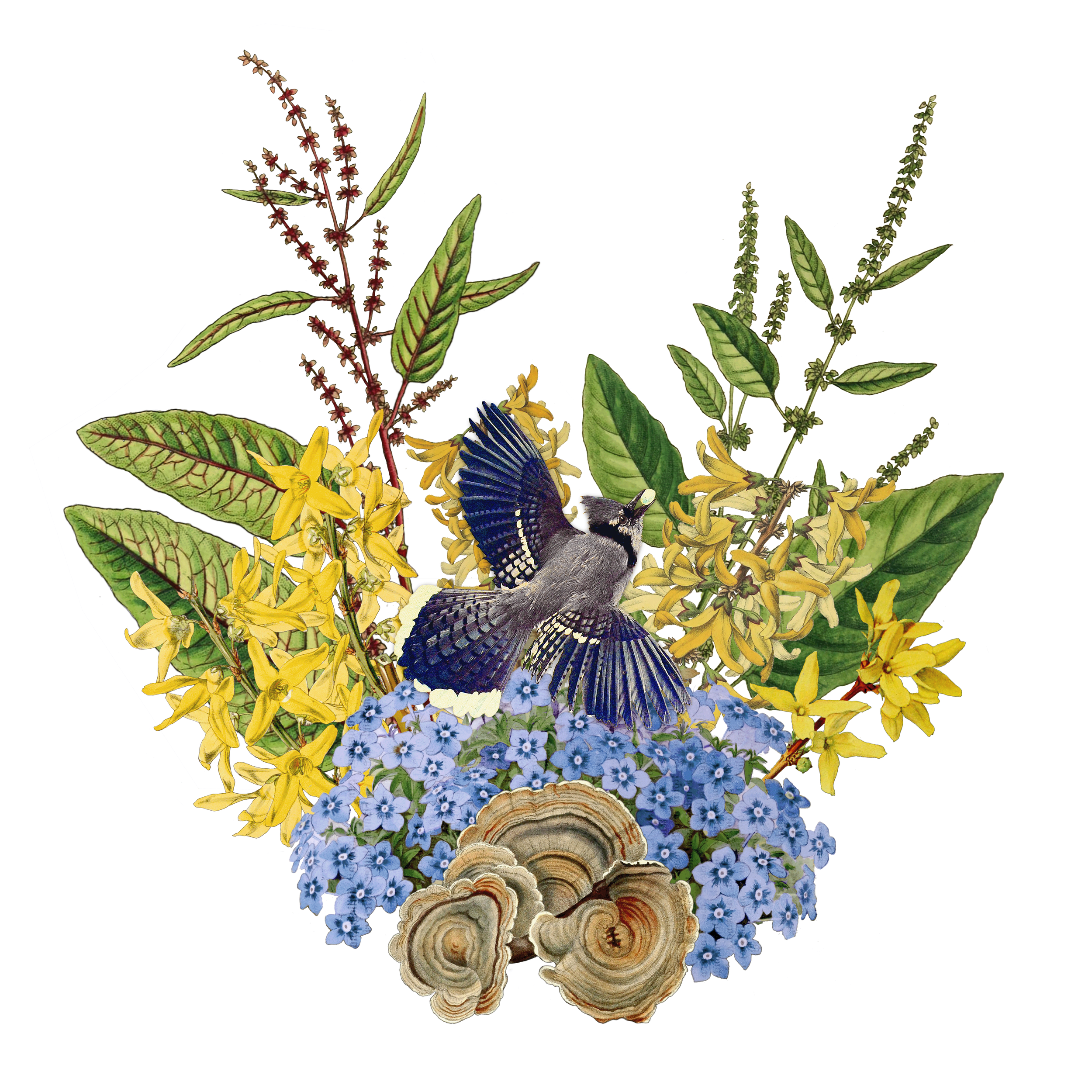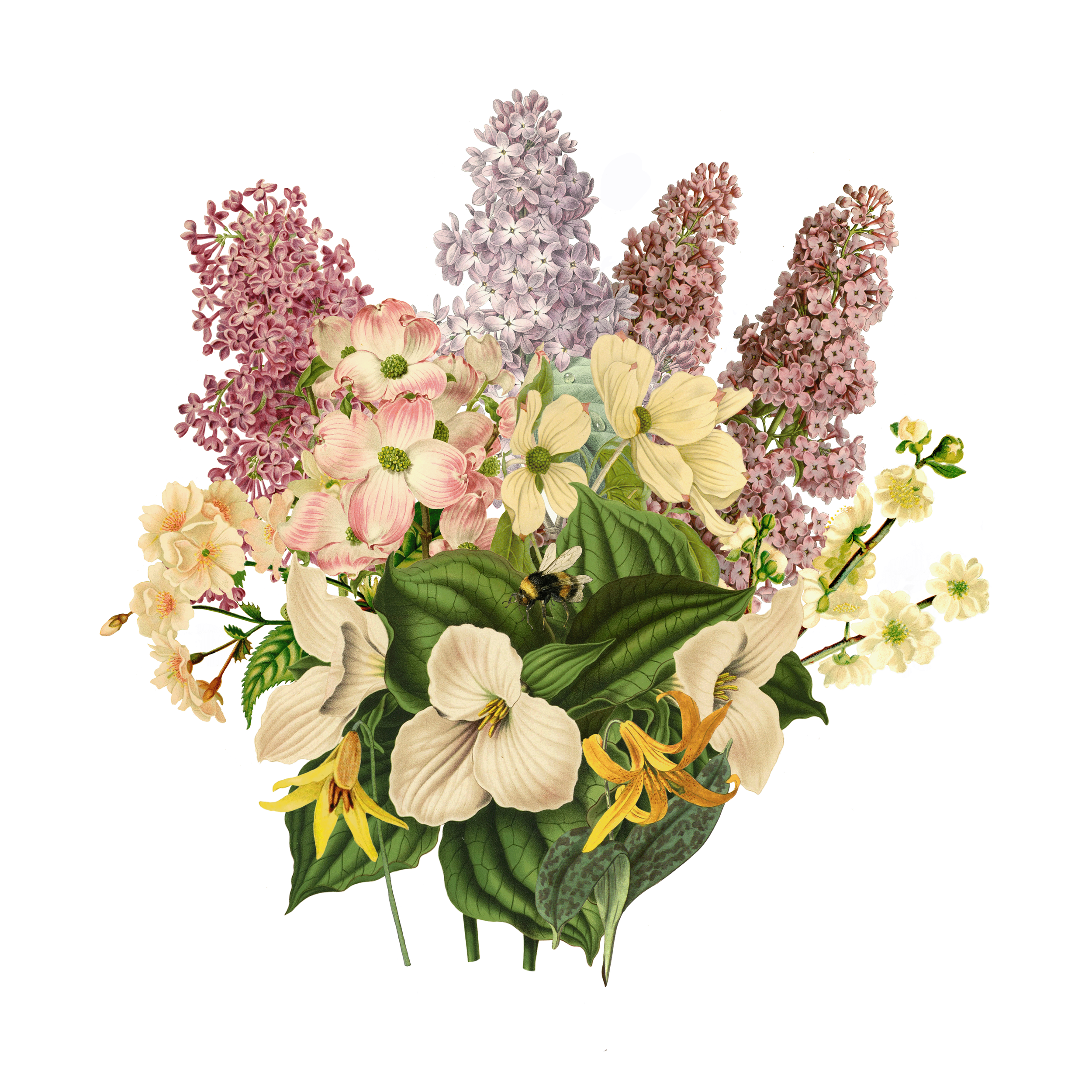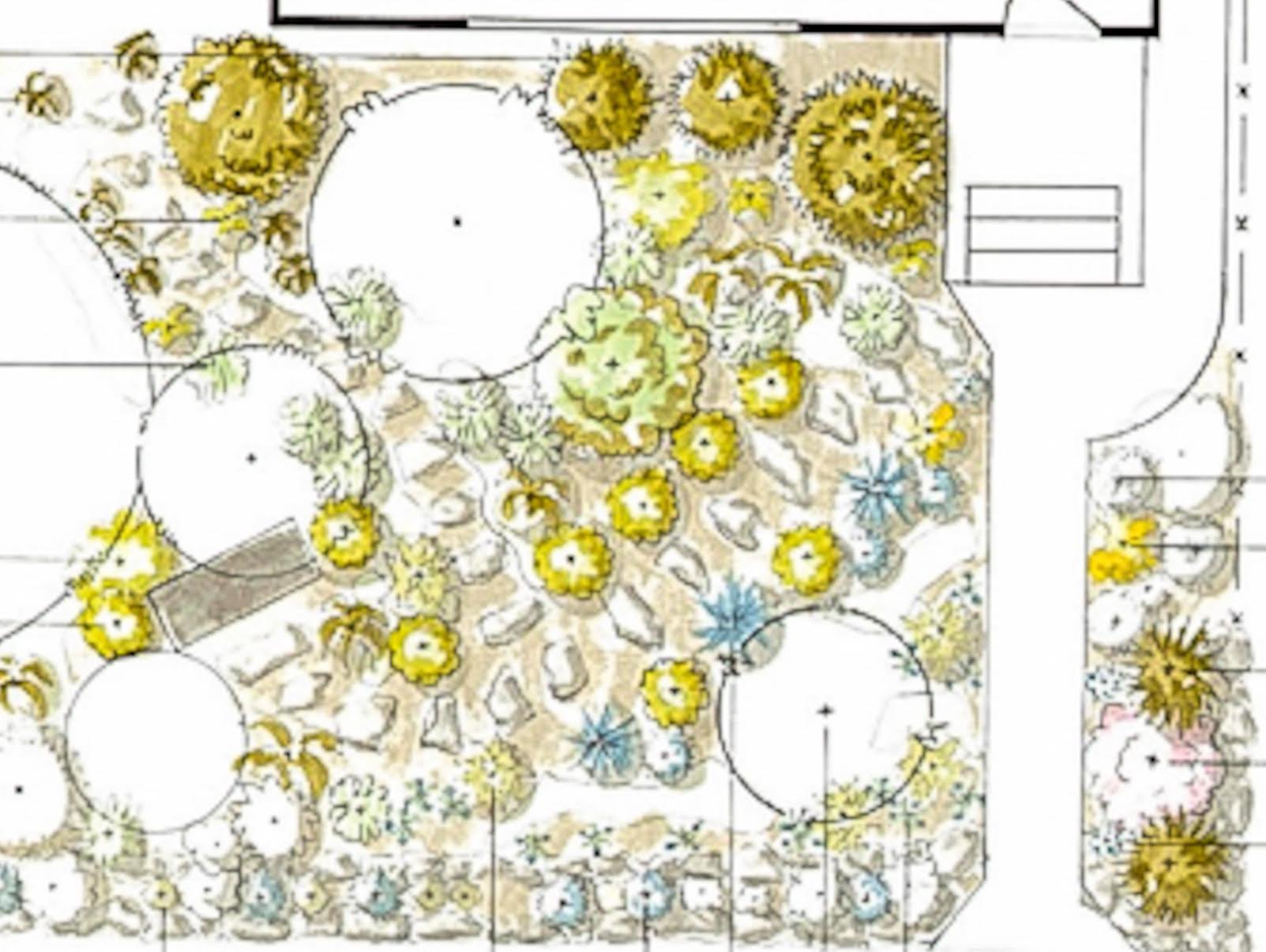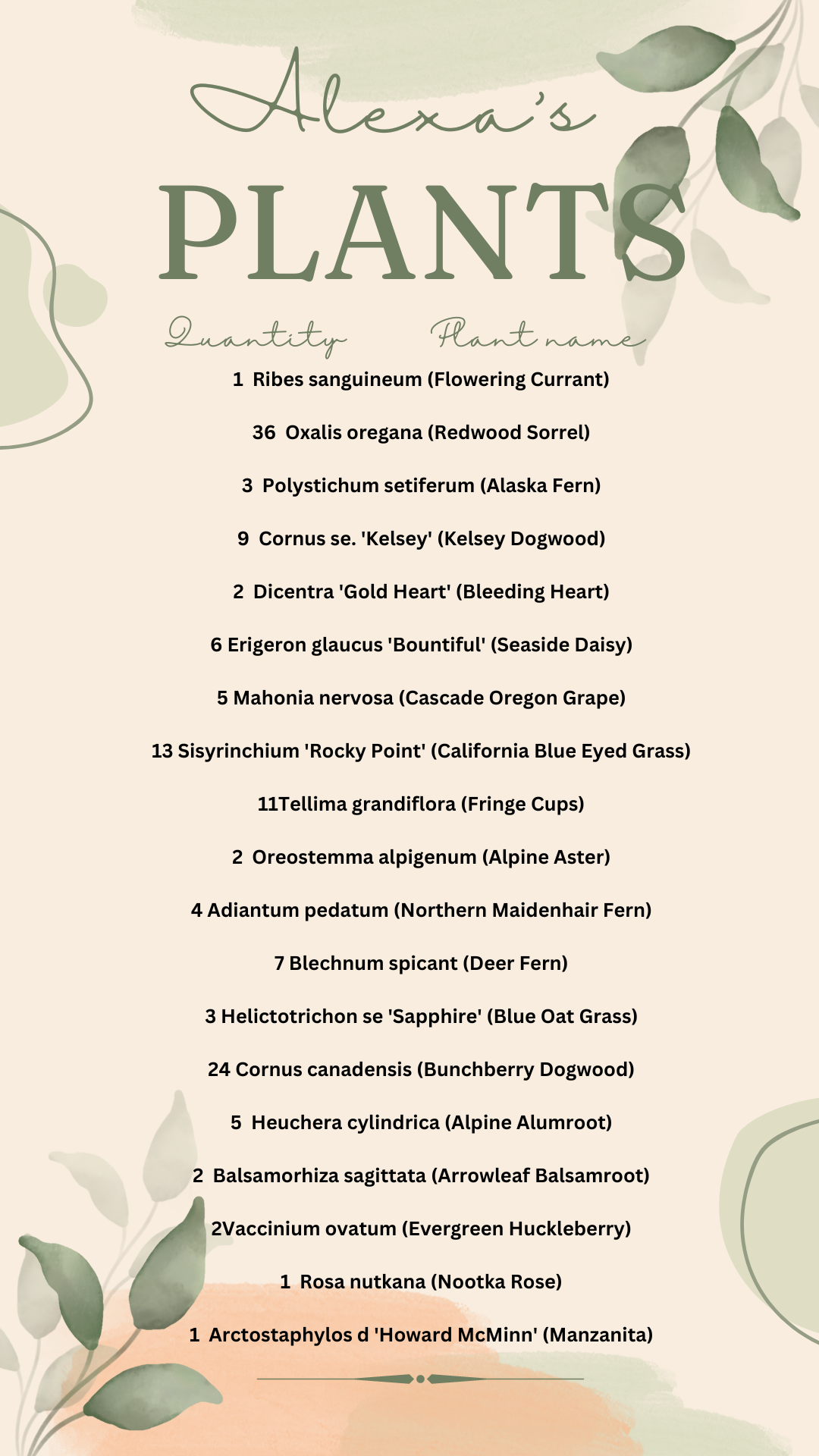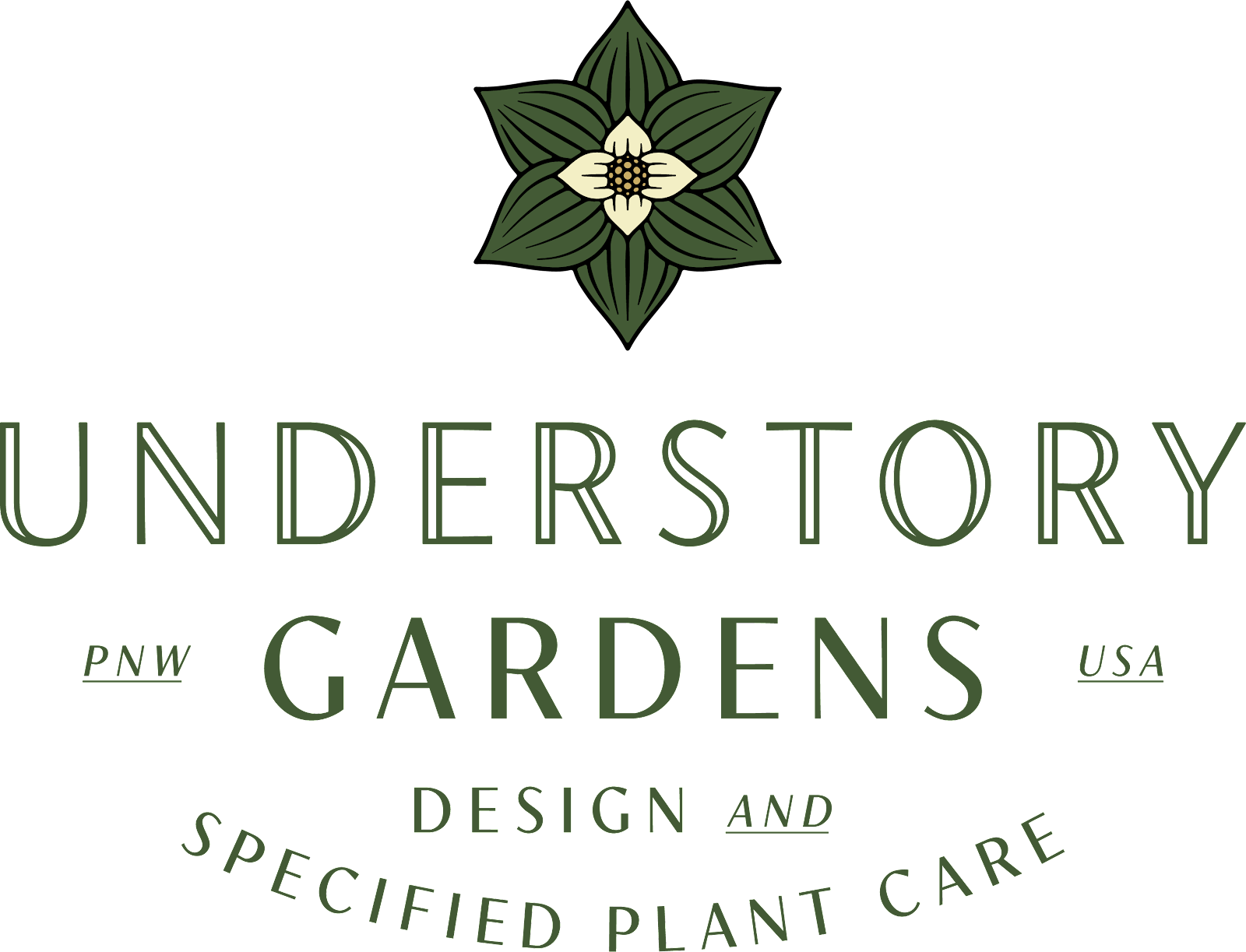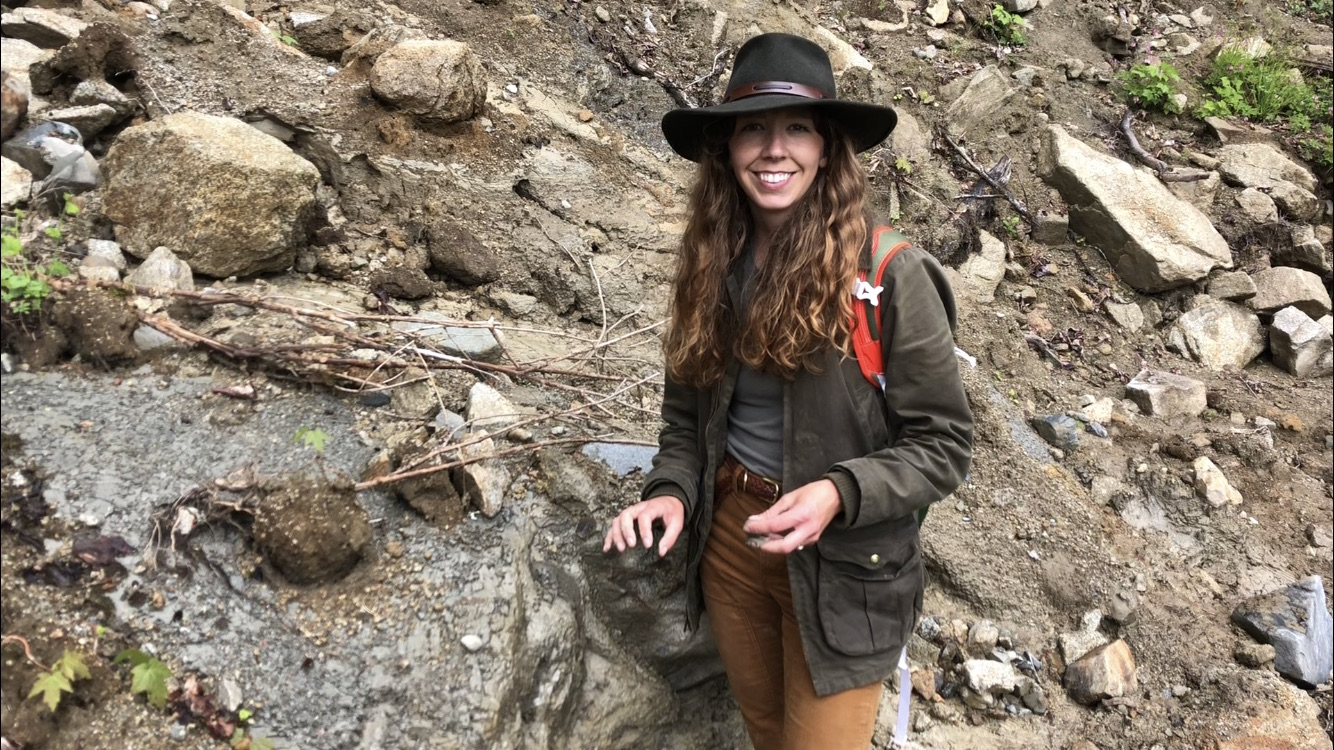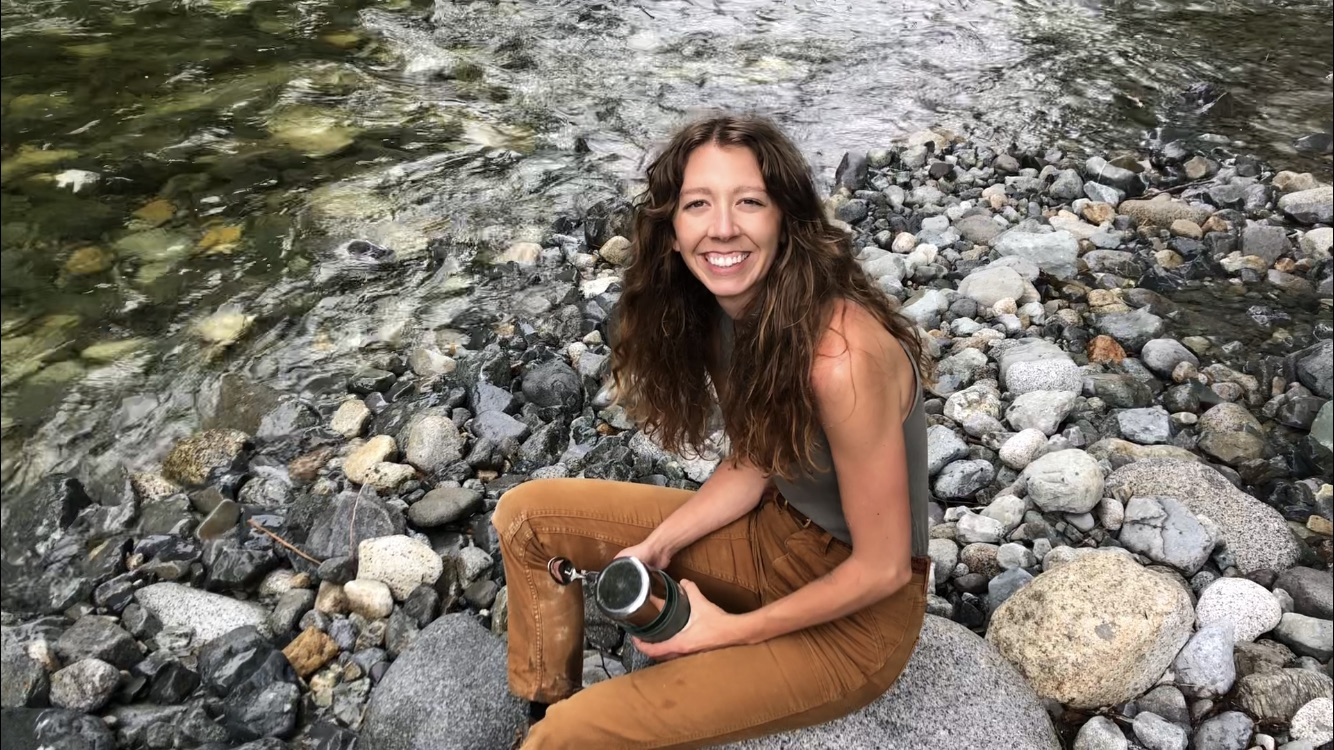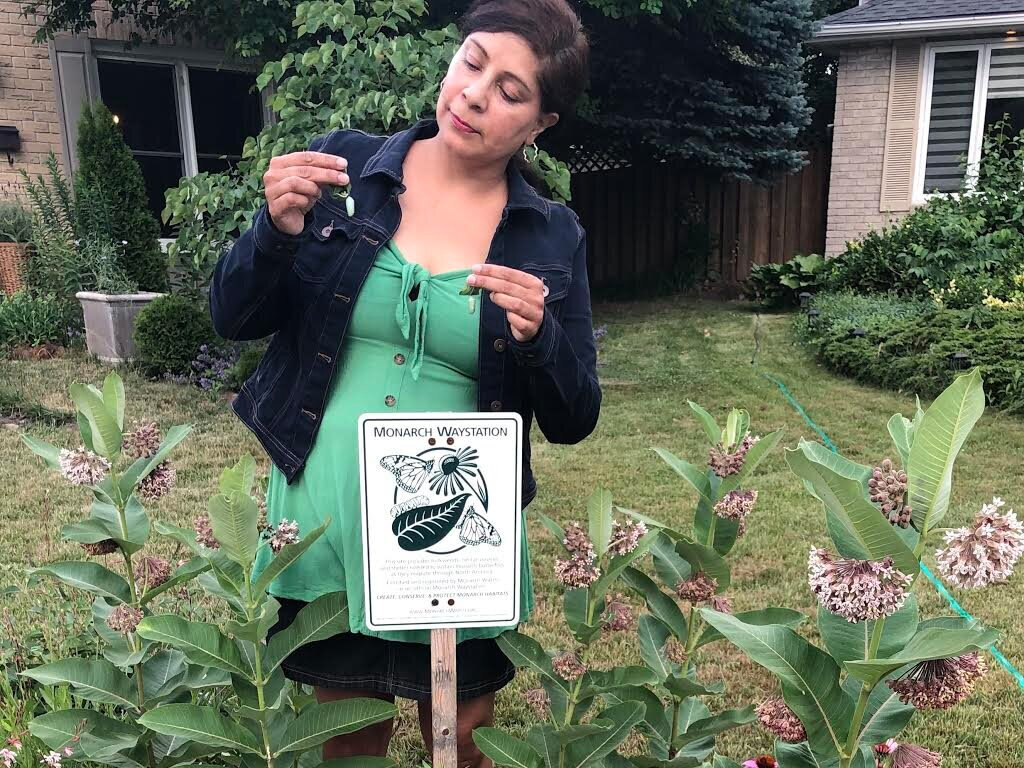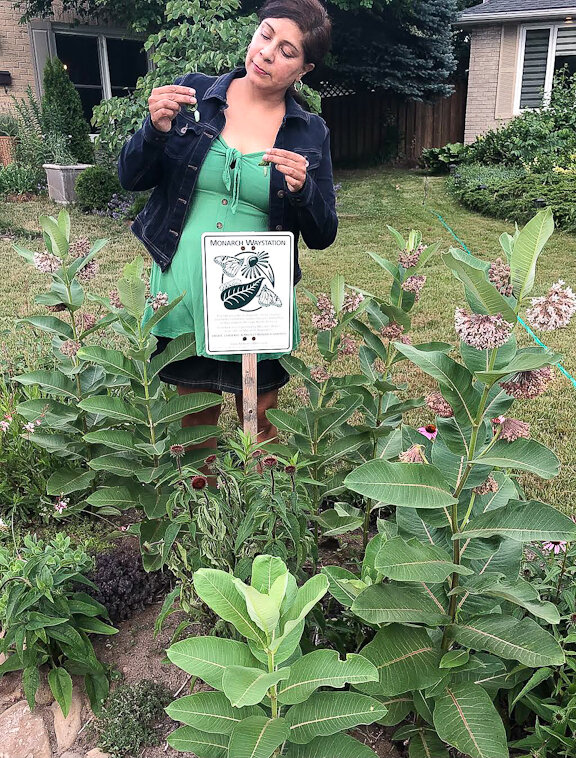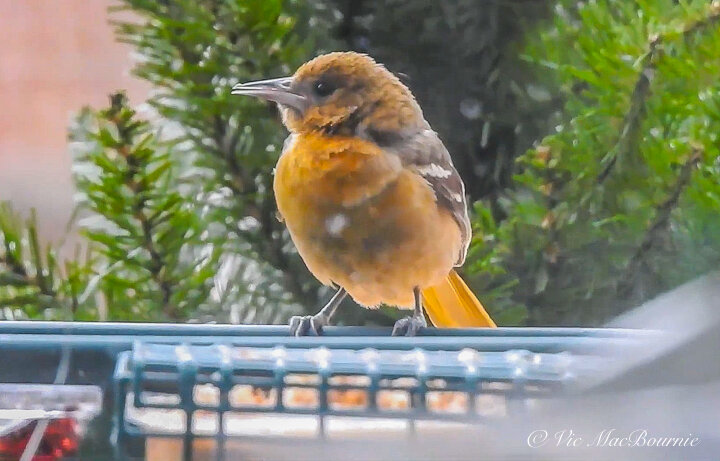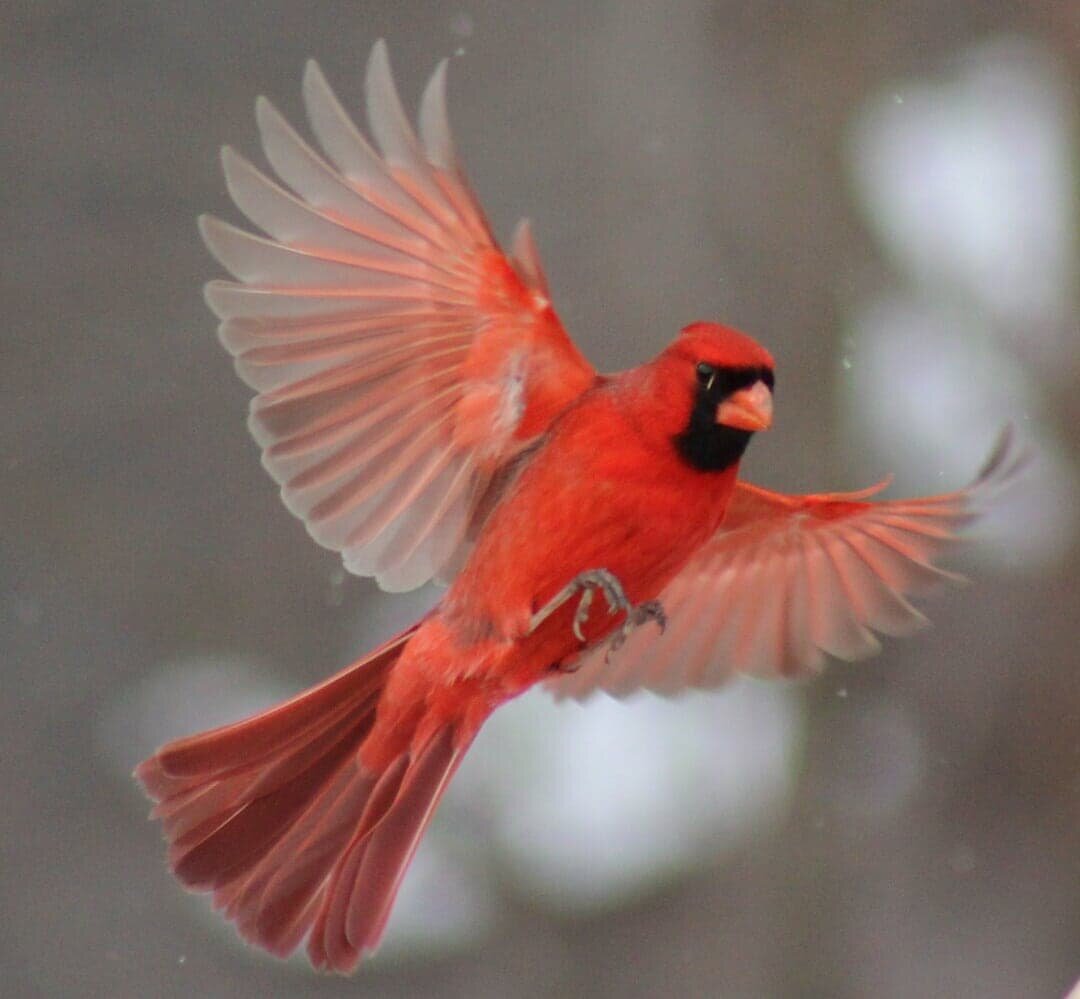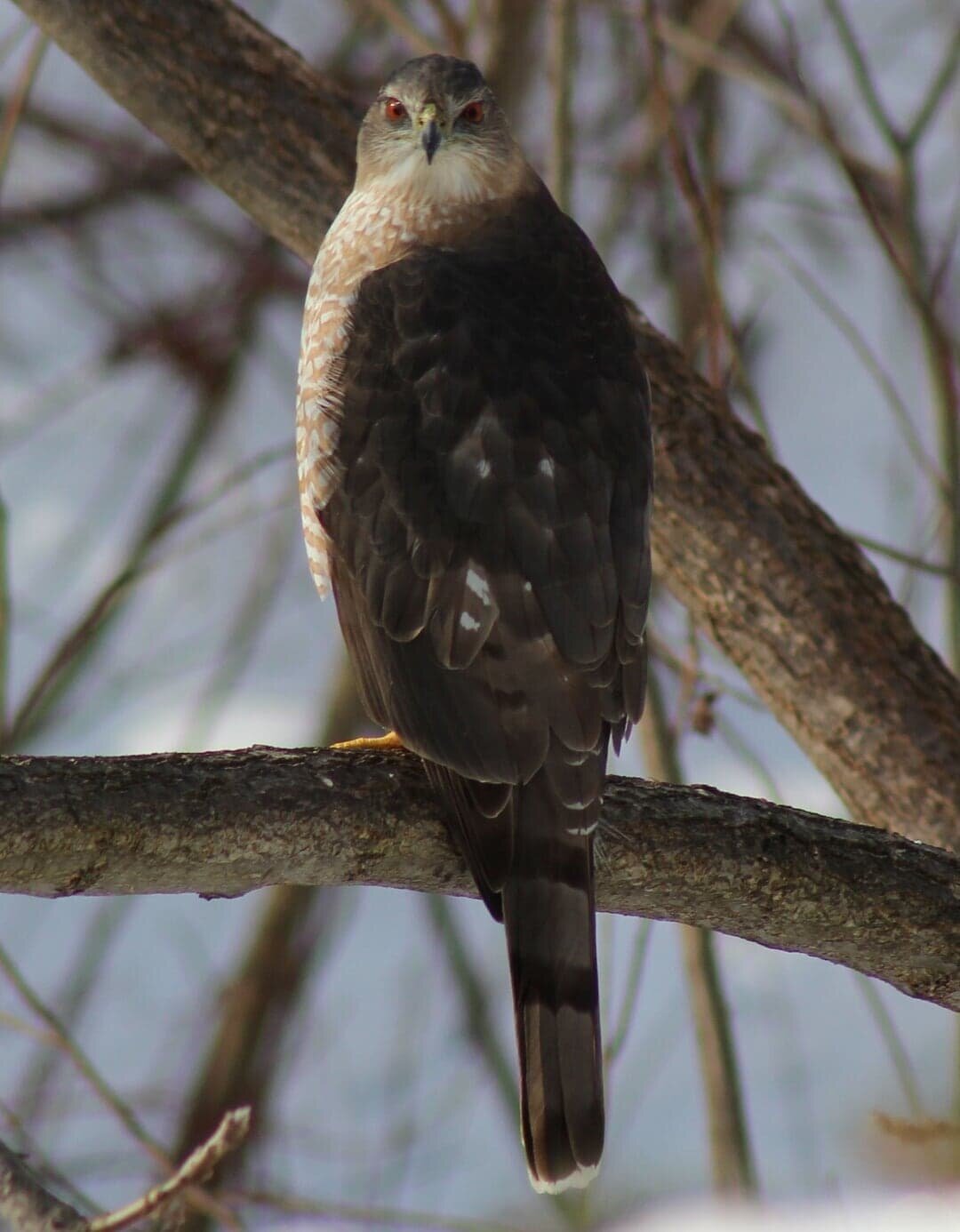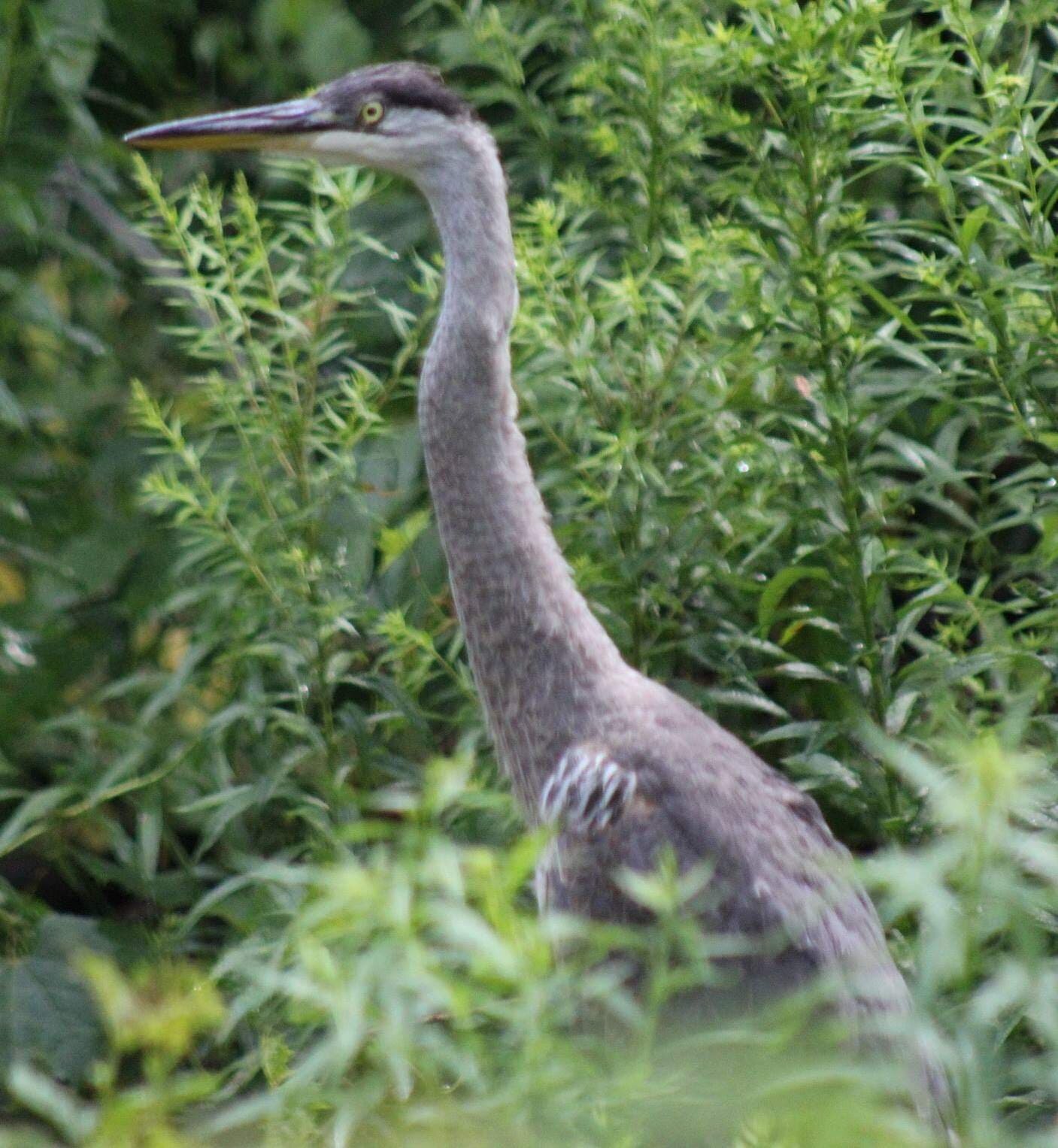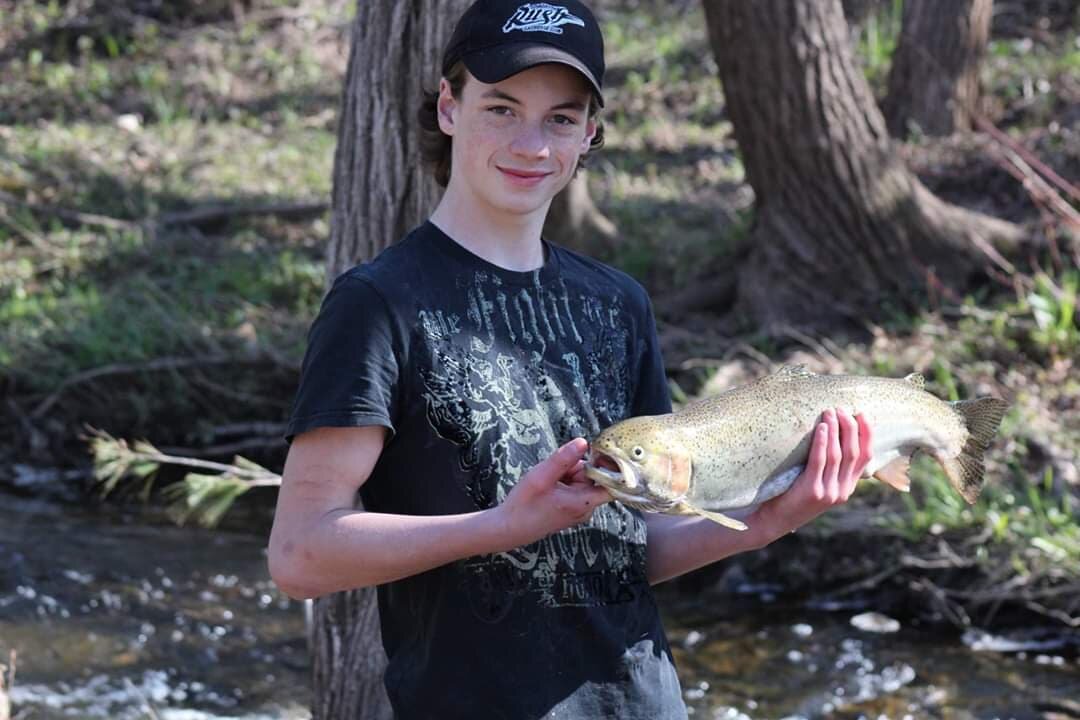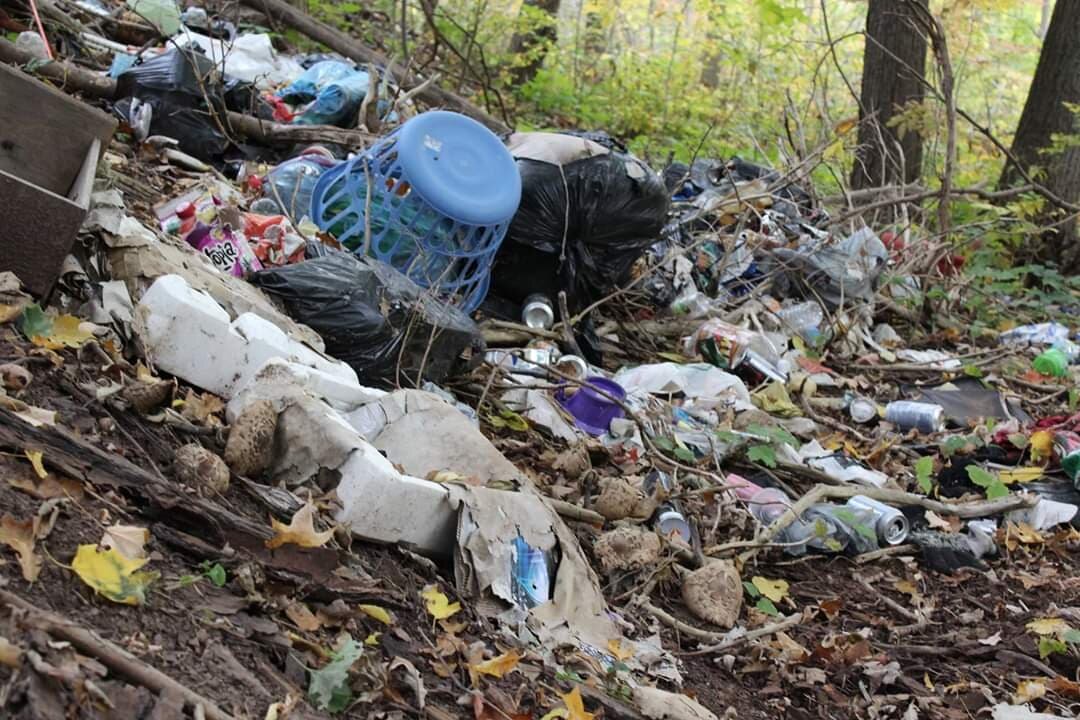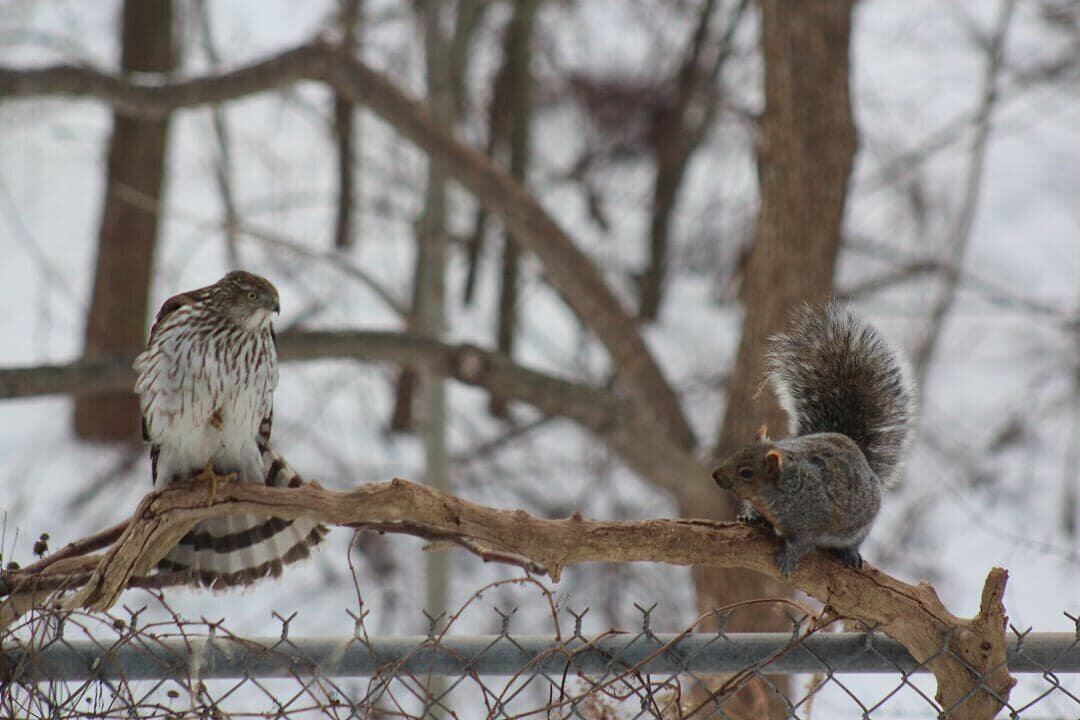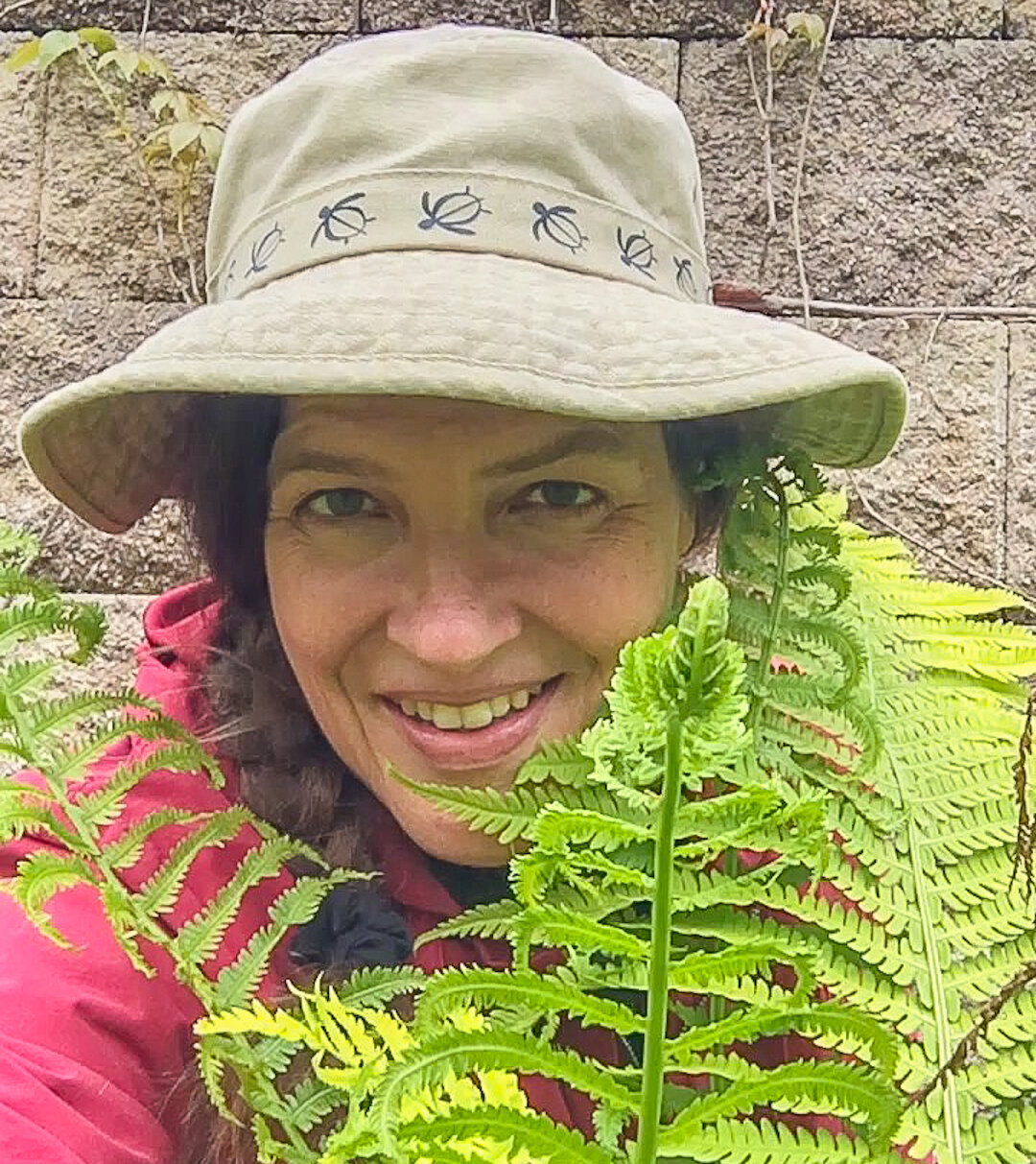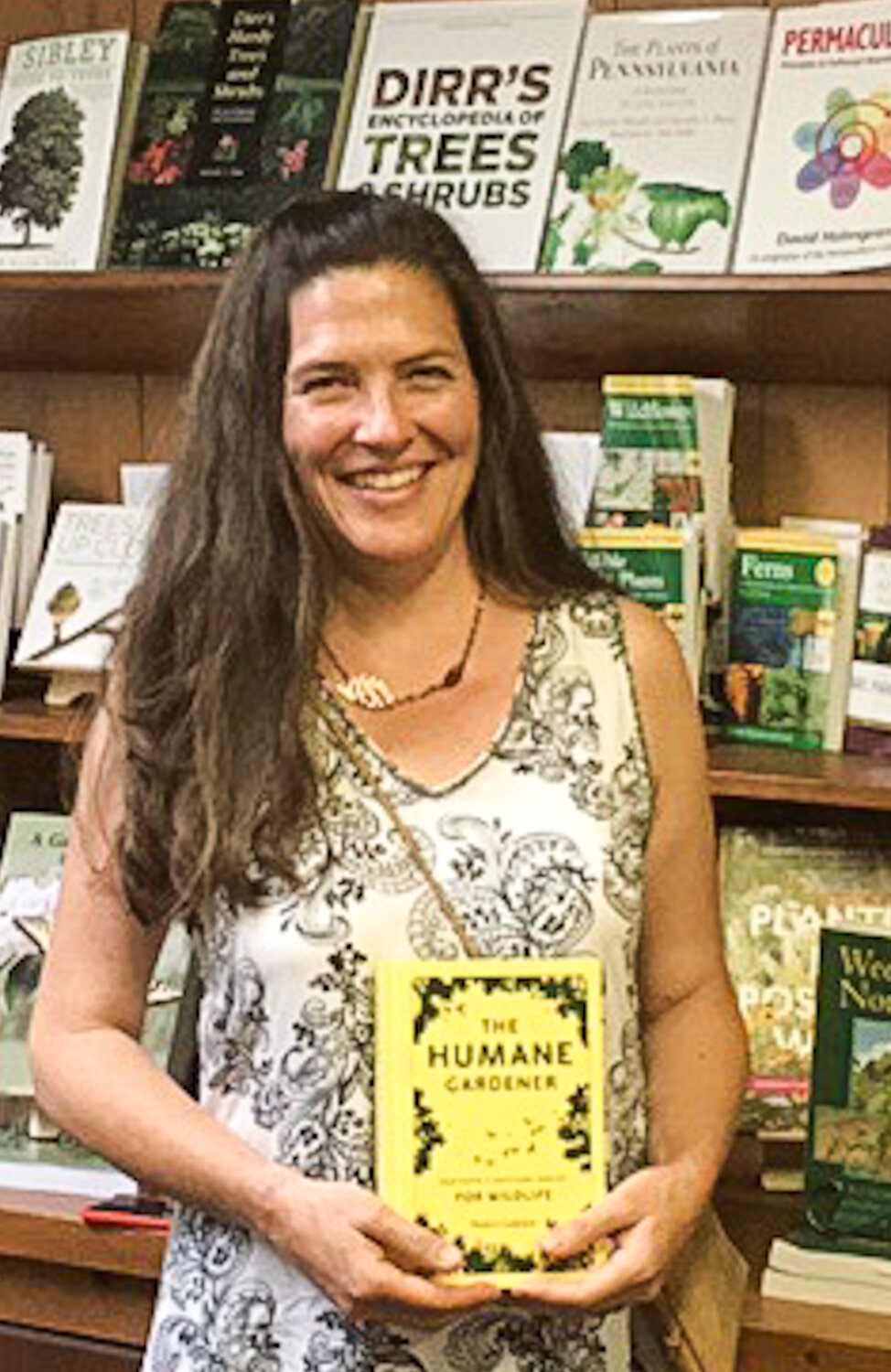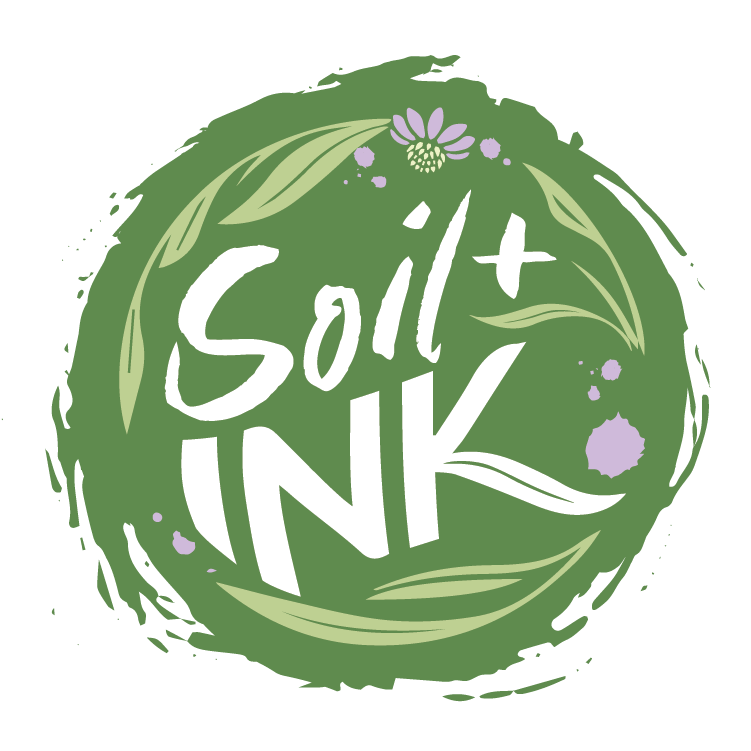The Internet of Nature: How technology could shape our urban forests of the future
Dr. Nadina Galle and her work with the Internet of Nature uses technology to shape the future of the urban forest. The Canadian born former Fulbright scholar and MIT researcher now at the University of Amsterdam uses ground sensors and satellite imagery among other technologies to help cities monitor, care for and protect the urban forest to provide a better place for people to live in future.
New book, Nature of Our Cities, celebrates optimism in the midst of a changing planet
Dr. Nadina Galle may have got her “eureka moment” at the age of 12, but it took the release of her first book, The Nature of Our Cities, in June, 2024 to bring the “moment” into focus.
Terrified, at age 12, after watching a Canadian documentary called The End of Suburbia, she worried that the lifestyle she enjoyed growing up in a Canadian suburb in Waterloo, Ont., would eventually lead to the “collapse of the society (she) was born into.”
She remembers a happy childhood playing with her friends in their big, grass-filled backyards. It was a lifestyle, however, that even at an early age, she realized had its flaws.
“At the age of 12, I decided it would become my life’s mission to build better places for people to live,” Dr. Galle explains in her highly entertaining and informative TEDx talk.
“Gardeners, more than anyone, understand the intimate relationship between people and nature. This book offers them new, exciting tools—from AI-powered sensors that water newly planted seedlings to intelligent water gardens that mitigate floods—that can help anyone get involved in transforming where they live into resilient, vibrant ecosystems”
“Born in the Netherlands and raised in Canada, I developed my love for the outdoors and my commitment to conserving nature from a young age. Reading works by Jane Jacobs and James Howard Kunstler as a teenager, I questioned the imbalance between nature and the encroaching urban sprawl I saw around me in suburban Canada,” explains the former Fulbright scholar and MIT researcher.
Dr. Nadina Galle is at the forefront of using smart technology to protect the urban forest.
Today, Dr. Galle is working at the forefront of smart nature-based solutions, exploring how technology can transform the way we care for our natural urban environment. Her website The Internet of Nature is a treasure trove of information about how technology can benefit the urban forest including links to her cutting-edge podcasts.
“At the age of 12. I decided it would become my life’s mission to build better places for people to live.”
On her quest to build better places for people to live, she studied ecology, evolutionary biology, earth sciences, and eventually went on to earn a PhD in Ecological Engineering. In her fascinating TEDx Talk, she defines Ecological Engineering as the “design of sustainable ecosystems that integrate human society with its natural environment for the benefit of both.”
Remember that inquisitive, yet terrified little 12-year-old girl’s promise to herself?
Well, her lifelong pursuit of learning eventually led her to her PhD in Ecological Engineering at MIT and University College Dublin and what has emerged is what she calls “Internet of Nature.”
If that is not enough, Dr. Galle has just released her first book: The Nature of our Cities, Harnessing the Power of The Natural World to Survive a Changing Planet.
The 304-page book explores how innovators from around the world are combining urban nature with emerging technologies, to protect the planet’s cities from the effects of climate change and safeguarding the health of their inhabitants.
Dr. Galle explains in the book’s promotional material: We live in an age when humanity spends 90% of its time indoors, yet the nature around us—especially in America’s cities—has never been more vital. This distancing from nature has sparked crises in mental health, longevity, and hope for the next generation, while also heightening the risks we face from historic floods, heatwaves, and wildfires. Indeed, embracing nature holds untapped potential to strengthen and fortify our cities, suburbs, and towns, providing solutions spanning flood preparation, wildfire management, and promoting longevity. As ecological engineer Dr. Galle argues, nature is our most critical infrastructure for tackling the climate crisis. It just needs a little help.
What does all this mean to us urban and rural woodland gardeners?
Dr. Galle says Ferns & Feathers readers will appreciate her book on a number of levels.
“Gardeners, more than anyone, understand the intimate relationship between people and nature. This book offers them new, exciting tools—from AI-powered sensors that water newly planted seedlings to intelligent water gardens that mitigate floods—that can help anyone get involved in transforming where they live into resilient, vibrant ecosystems,” Dr. Galle told me.
• To order a copy of Dr. Galle’s book from Amazon, go here.
How gardeners can help protect the urban forest?
What does all this mean to the average woodland/wildlife gardener, or simply the urban homeowner living with a typical yard?
It means that although we gardeners may think of our gardens as ours alone to enjoy and experience, they are actually part of a much larger environment that makes up the urban forest – a forest that in most urban areas around the globe is under severe threat from natural (climate change) and human intervention.
Irish garden designer and author Mary Reynolds promotes this approach to natural gardening in her book The Garden Awakening where she advocates for homeowners to consider their properties like “natural arks” that form smaller islands of nature that can join together to provide much larger islands of native plants, trees and natural environments. (You can explore her approach further in my article about her work here).
This approach to urban gardening also means that traditional thinking probably has to change to ensure that our urban forests provide us with the natural environment so many of us depend on for our future well being. If the Covid-19 pandemic has taught us anything, it has made us more aware of the importance of green spaces and the natural environment to our own well being.
Protecting the urban forest has never been more important
The very fact trees sequester carbon is reason enough to plant as many new trees as possible. However, it’s been proven that older, existing trees (and their soils!) are even more effective at sequestering carbon, so ensuring their protection and continued health in our urban areas is vitally important.
Every year the urban forest is under greater threat, Dr. Galle explains in her TEDx Talk. This is hammered home by the fact that every week approximately 3 million people move (or are forced to move) to cities around the globe.
“Everyone is talking about how many people are moving to cities, but no one is talking about what kind of life they will live once they move there,” she explains.
How we protect the urban forest in the future is what Dr. Galle wants to change, and she wants technology to be leading the way. (More on that later in the article. First it’s important to understand our role as gardeners and homeowners in the whole process.)
“Roughly 50-70 per cent of the urban forest in any given city is on private/homeowner land, which means only 30-50 per cent is actually in the maintenance area of the city,” Dr. Galle explains via email to Ferns & Feathers from her home in the Netherlands.
“This is crucial because it shows the massive role homeowners can have in the development and longevity of the urban forest.”
An important point author Peter Wohlleben makes in his NYT best selling book The Hidden Life of Trees, (link to an earlier article on the book) and one that Dr. Galle echoes in her writings and talks, is that a tree planted in the heart of an urban landscape has a typical lifespan of a mere 7-30 years. The same tree planted in a natural forest can easily live to 100 years and considerably more given the right conditions.
Dr. Galle has even identified Wohlleben and the UBC forest ecologist, Dr. Suzanne Simard, whom he covers extensively in his book, The Hidden Life of Trees, as a major influence in her work, particularly research on how trees communicate through underground fungi that can connect to the roots of other trees (and plants) to create what’s called a mycorrhizal network. A mycorrhizal network can influence the survival, growth, health, and behavior of the trees linked within its extensive network or community. Trees use their network to not only communicate, but to share resources, often stemming from the resources of the “Mother Tree”, the most connected tree in the network.
This underground network, Dr. Galle emphasizes, needs to not only be protected through proper watering, fertilization and care, but encouraged to branch out in urban environments whenever possible. Success will depend on a multitude of factors including the cooperation of individual homeowners to protect the trees on their properties.
How valuable is a single tree on your property?
In fact, in his follow-up book The Heartbeat of Trees, Wohlleben gives an example of how a study conducted by Chicago University researchers found that a single tree planted on the lawn of an urban property can increase the benefits to the homeowner by the equivalent of an annual pay increase of $10,000. The study, conducted with thousands of Toronto, Canada residents, also showed that two trees planted in the front could provide the health and well-being benefits equal to an annual income increase of $20,000.
If this doesn’t convince homeowners of the importance of maintaining their own trees in their front yards, it’s hard to imagine what will.
“Most homeowners don’t realize the trees on their land (may be) protected by a private tree ordinance, meaning you can only cut down trees (even when you own the land!) with a permit,” Dr. Galle explains. “Otherwise, you can be fined, or even jailed (though I doubt that’s ever happened).”
“Many cities, like Santa Monica, for example,currently don’t have private tree ordinances, but after remote sensing analysis revealed they’d lost 20-30 per cent canopy cover on private residences in just a few short years, they’re rapidly trying to instate a private tree ordinance. Otherwise, there will be no urban forest left!" says Dr. Galle. (Readers can learn more about Santa Monica’s urban forester and his struggles to maintain its urban forest in a S2E10 of the Internet of Nature Podcast here.)
How can homeowners preserve and protect their trees?
Dr. Galle recommends four ways homeowners can preserve their trees and do their part to ensure the longevity of the urban forest.
• Understand your trees: use a tree identification app to understand what grows around you and learn as much as you can about them and their history.
• Don’t cut down your trees unless absolutely necessary. If you must cut a tree down, replant smartly, meaning planting native trees that will thrive in that location.
• Water your trees when it’s hot and dry, and use a sensor to help you understand when and how much water you have provided the tree so you don’t over water, which can also be dangerous to the tree.
• Find and invest in a good local arborist for regular tree health inspections. Regular inspections of your trees will help to keep you, your property, and the tree safe.
How technology can help protect the urban forest
Protecting individual trees is certainly a step in the right direction, but Dr. Galle is more focused on protecting the entire urban forest.
It’s obviously a momentous task that, up until recently, was often the primary responsibility of city planners, work crews and arborists working tirelessly to provide what they thought the trees, plants and wildlife needed to prosper.
What Dr. Galle and her co-researchers found after talking to these critical workers at the frontlines of urban forest protection is that they really did not know what was needed to protect the urban forest in its entirety. Their expertise certainly guided them in the right direction, but specific day-to-day, week-to-week, season-to-season evidence was sorely missing.
The result: Protecting the urban forest was, at least to some extent, a guessing game and climate change is making guessing that much more difficult.
So, Dr. Galle began to ask: “What if technology could step in where Earth’s biological communications networks have been altered and disrupted?”
And so, the Internet of Nature (IoN) was born.
What is the Internet of Nature?
Working with scientists, researchers and companies around the world – including Canada, the U.S., Australia, China, and across Europe – Dr. Galle is developing a multifaceted approach to monitoring the health of our urban forests through technology: more specifically the internet.
“After seeing both the ‘Smart City’ and ‘Green City’ agendas gain popularity, irrespective of one another, I began to explore ways to integrate these precision methods to build greener and smarter cities, she explains in an interview with the Amsterdam International Water Web,.
Dr. Galle explains that “The Internet of Nature (IoN) makes use of emerging technologies, like sensors, satellite imagery, computer algorithms, and many more, to represent urban ecosystems and turn green spaces into data that helps us better understand how to manage them.”
She goes on to explain that: “It doesn’t only collect data to help monitor these important spaces, but also reconnect city dwellers to nature — and better understand how people feel about it.”
“In my research and work, I have experimented with sensors, satellite and drone images, online reviews, big data, plant ID apps, and many more, to find the best ways to measure and monitor urban nature. From that, the Internet of Nature arose, helping us monitor nature, but also reconnect people to the greenery at their doorstep.”
As part of her lifelong ambition to provide healthier and better places for people to live, Dr. Galle explains that IoN technologies have experimented with sentiment analysis to mine citizen opinion of green space by training a computer to ‘decipher’ online reviews, interaction and engagement rates. “This way we learn more about how people experience green spaces.”
Sentiment analysis algorithms would, for example, enable cities to help establish how people feel about certain urban green spaces including parks compared to more natural areas based on reviews left on sites like TripAdvisor, or on-line questionnaires.
Information gathered from underground sensors is sent to an ipad where moisture and other factors can be monitored to help protect the trees in the area. Photo courtesy of Soilmania.
How sensors play a role in protecting trees?
By using electronic IoT sensors designed and built in the Netherlands by SoilMania, scientists and arborists are able to monitor tree’s needs, stresses and environment at any time through a computer and even apps on a phone. This information can then be extrapolated to all the trees in a given area and solutions provided to protect them.
SoilMania, founded only four years ago, is already being used on crops, fields and greenhouses; on golf courses and sports fields; as well as in public and green areas including entire cities to monitor the needs of the urban forest.
It may be nothing more than providing information telling arborists when a tree needs deep watering. The in-ground sensor will also tell workers exactly how much water and or fertilizer the trees need and provide information about how much water has reached the trees’ roots.
Sensors are even able to monitor, for example, the salt in the soil around a tree’s roots that can build up as cities continue to spread salt on roads during winter months. If salt levels build to dangerous levels, the company even provides a solution to bind with the salt or other toxic elements to neutralize them before it can damage the tree. The method has already prevented hundreds of untimely tree deaths related to salt damage.
During her time at MIT’s Senseable City Lab, she was interested in seeing if there was microbial activity in the soil around inner-city “street trees” using sensors to detect the activity and therefore the health of the tree.
This research also led to the possibility of using remote sensing technology through satellite imagery. “I’m particularly interested in hyperspectral imagery” that can pick up on vegetation and the health of vegetation in minute detail from satellites that are able to orbit the earth twice in a single day. Although such imagery is already being used in agriculture and forestry, significantly improved resolution now enables scientists and arborists to actually “measure the health of individual trees.
Information is gathered by the tree sensors and sent via cloud computing to computers to monitor soil around a tree or group of trees roots. Provided courtesy of Soilmania
In conclusion
Dr. Galle’s childhood dream of creating a better place for people to live continues to be a work in progress. Her commitment and dedication to achieving this goal has led her down a path of knowledge and academic excellence that is sure to end in success – exactly what that success entails is still yet to be written.
However, there are many barriers standing in the way – not the least the acceptance needed of how technology can solve the problems large cities face when it comes to protecting urban forests.
Added to that is the continued damage inflicted on our urban forests by nature, climate change, and most importantly, homeowners who either don’t know, or worse, don’t respect the important part trees play in our lives.
The challenges are too many for any one person to tackle, but, with the power of the internet, maybe, just maybe Dr. Galle and her team can find those solutions.
Let’s hope so. Our lives may depend on it.
Author Profile: Vic MacBournie is a former journalist and author/owner of the award-winning website and newsletter Ferns & Feathers. He writes about his woodland wildlife garden that he has created over the past 25 years and enjoys sharing his garden photography with readers.
Creating your own “Ark” landscape design has never been easier
Here is your opportunity to have Chelsey Gold Medal winning landscape designer Mary Reynolds create a garden of your dreams based around her concept of creating Arks. A natural landscape or woodland garden based on native plants for wildlife.
Mary Reynolds’ gift makes it all possible
Chelsea award-winning Irish landscape designer, Mary Reynolds, has given the world too many gifts to count, but her latest gift might just be her most inspiring.
Especially if you are the one either giving it, or, even better, on the beneficiary end.
Mary, both an accomplished author and landscaper designer, has been working hard over the past several years to help homeowners and especially gardeners develop a new appreciation for a more “wild landscape” – one that respects native plants and the wildlife that either calls it home or would love to make it their home.
She has developed an entire movement and website (We Are The Ark) around creating “Arks” in the suburban and rural landscapes. These Arks act as stepping stones across the landscape, where pollinators, birds and even mammals can find refuge and habitat they can call home.
“Every thread of the web we remove through human expansion, destruction and pollution, could be the last thread holding it all together and we just dont know when it is all going to fall apart. If you want to save the planet, start with your own patch of it. ”
Why is it so important for homeowners to develop their Ark?
Mary explains, over email, to Ferns & Feathers that it is increasingly important for homeowners to consider creating an Ark.
“Because the web of life is collapsing. We have lost 70 per cent of all our earth’s wild creatures since 1970 when the ‘green’ revolution kicked in and the population exploded. With the collapse in insect populations and the 75 per cent loss of our topsoil, we are looking at a catastrophic collapse of the earth’s ability to provide us with clean air, water, food and shelter,” Mary explains.
“Every thread of the web we remove through human expansion, destruction and pollution, could be the last thread holding it all together and we just don’t know when it is all going to fall apart.”
Mary urges homeowners to recognize their role in saving the planet, even if it is just a small patch in an urban environment.
“If you want to save the planet, start with your own patch of it. Set your land free and support it to become a native plant ecosystem, removing the non natives and importing as many locally sourced native plant layers as possible. These are the plant communities that have evolved alongside their local insects and mammals who cannot survive without them. We have to make a patchwork quilt of hope for nature, for the seeds of restoration to spring forth when the time comes.”
Her website already tracks the number of people who have created their own Arks and marked them on her arkivist world map.
To date, there are more than 1,000 documented Arks, including about 320 in the United States and Canada. Mary hopes her individual and more personalized assistance will help boost that number.
Now, Mary wants to offer her services to help even more homeowners turn their properties into “Arks.”
And, for homeowners in the United States and Canada, she will provide the service all on line.
She tells Ferns & Feathers that she is ready for the onslaught of requests undoubtedly coming her way.
“I have been doing online consultations for a couple of years now across the world, the complexities are not too hard, most places have similar problems, and simple, if often different solutions,” Mary explains.
Why do we need an Ark?
Mary points out on the website that the earth is “losing 150 to 200 species to extinction every single day. Each species lost is lost FOREVER.
Biodiversity is short for “Biological diversity”.
Biodiversity is “the variety of all living things, and the systems which connect them.” This includes all the planet’s different plants, animals and micro- organisms, plus the genetic information they contain and the ecosystems of which they are a part.”
An incredible opportunity to build your Ark
It’s an incredible opportunity to have a Chelsea Gold-Medal winning landscape designer dig into your landscape and help transform it into a woodland/wildlife refuge.
Mary, of course, is not limited to “woodland” designs, but given that this website is dedicated to woodland/wildlife design and Mary has gone on record saying that most land wants to revert back to a woodland style, the odds are good that the design will lean in that direction.
In the announcement, Mary said she “wants you to give any land under your care back to nature, to re-wild, to be Arked.”
“The hour consultation is a zoom call where I have been supplied with photos and short videos of their land. Then we talk through each area discussing how to increase the sanctuary there for the local wildlife in all its forms,” explains Mary.
“Also we work out how to weave the guardians’ own needs in with these ideas. The sketch designs are more detailed and are to scale, mapping out a concept design for you to work with on your own land, though I need a proper land survey for that option, with all of the existing trees, plants, paths etc,” Mary says, adding that the on-line services will be an ongoing service for homeowners and businesses.
Anywhere in the world, Mary can work online with you, from an hour long consultation to a full ARK design.
In particular, Mary “can help you design a space that allows for the maximum amount of edges and ecotones, the most diverse range of habitats you can fit into your land. A magical place for your family to enjoy and protect, which will be hopping with life and beauty. A sanctuary for all of the native creatures that need it, places to rest and recover and finally thrive.”
“She will guide you to understand how to step in and provide the ecosystem services required to maintain that diversity going forward, to replace the missing parts of the web of life that we have broken. To become the wolf, the deer, the beaver.
To be a Guardian, not a gardener.
To be an Arkevist.”
There are several approaches homeowners can take to have Mary design their gardens.
Mary is asking readers to email her with the property’s size, and some photos to receive a quote for the work.
All of the details are available at her website (link.) Below are excerpts from her website to give readers a better understanding how the process may work.
• An online advice hour over Skype or Zoom: Send a number of comprehensive photos of your land, a google maps pin so we can look at it from above and even some very short videos (less than 1 minute if possible). Once I have all the information, I can talk through ideas with you over zoom. Please note that this is not a gardening advice service. It is for Ark development and design. €184.50 (€150 plus VAT @ 23%) (approximately $230 US, or $310 Cdn. to be paid before the appointment.)
An on-site consultancy including a design: This involves me coming to visit you, at your home, where we sit down and I sketch a design out over a pre-prepared landscape survey of the site (which you will have provided from a surveyor), creating spaces within the land for spending time, growing food, building a magical connection between your land and yourself and supporting wildlife to share the land with you. I draw up a scaled master plan before I leave. However, there will be no detailed construction details or detailed drawings, but you will be able to work with a contractor using the master plan or use it yourself to develop your Ark.
If I am working out of the country, I would be asking you to consider an online design consultation as I do not want to travel unless absolutely necessary.
The process usually takes 3 – 4 hours on site (I will need a dry warm space with a large table to work on). In order to give you a definite price I need you to email me some photographs of the land so I can see how big it is, as size is everything in terms of the amount of design involved. But I usually manage most gardens in the one day, if the areas I am designing are not too complicated and under an acre in size.
Online Design Consultation: This is a good way to get the Mary design experience if you are a distance away.
“I will work on a survey pre-prepared and sent to me before the appointment date. I can get to talk to you by zoom in the morning to hear the design brief and feel into the situation. Then I will work on the design to get a good solution for both the client and the Ark’s requirements and call you back as required during the day, finally presenting it by zoom and scanning the drawings and emailing them to you day following completion.”
“You will end up with a good overall master plan to work towards yourself, or to use in conjunction with a contractor to manifest the design on the ground, or develop the Ark yourself.”
“However, there will be no detailed construction details or planting details. As I am not spending time travelling to the site, I get to spend more time at the design during the day and it is a good solution for people a distance away.”
In order to give you a definite price I would need you to send me photographs of the land so I can see how big it is, as size is everything in terms of the amount of design involved! But I usually manage most gardens in the one day, if the areas I am designing are not too complicated and under an acre in size.
However, there is also the cost of the survey, which needs to be emailed to me before I begin so that I can do some preparation drawings. The survey is a separate contract which doesn’t involve my input and best organized locally to your site.
The amount of information Mary will need will depend on how detailed a plan you are looking for her to design.
The Woodland comes to life in Evan Rosen’s exquisite artwork
It took the death of his father and a complete immersion into nature, the forest and woodlands to take Evan Rosens art from the darkness into the sunlight.
Hello darkness, my old friend
I've come to talk with you again
Because a vision softly creeping
Left its seeds while I was sleeping
And the vision that was planted in my brain
Still remains
Within the sound of silence
–Paul Simon
Darkness turns to light as the seeds of nature take root
The darkness in Evan Rosen’s art was clearly evident. It emerged from the skulls and knives, the snakes and the dark figures that are hard not to miss in his Instagram feed.
Today, that darkness has given way to light in the form of exquisite, woodland floral art.
A series of flower bouquets combining woodland flowers, dogwood bracts, berries and even emerging skunk cabbage are evidence that his artistic path has taken a dramatic change.
But it took the death of his father and the work of his wife to bring about that change.
His wife’s life-changing decision to leave a hectic corporate job in New York and take on a new career in the quiet of nature’s woodland, that had a pronounced influence on Evan’s work.
A project to create a series of images of forest bouquets to promote his wife’s Forest Bathing venture was the catalyst behind his new artistic path.
“This project started as a way to market Forest Baths. I’d made the logo and we were both happy with it, but we needed something visually interesting for the newsletter and flyers. I can’t recall exactly how we came up with the first one, but I’m sure we were walking in the woods when it happened.”
Not only was the series of images for his wife’s work the original impetus for creating the floral work, but Evan is quick to add that it is also “because going forest bathing and hiking with his wife, Fru, was where we found much of the inspiration.”
If you want to learn more about Fru’s forest bathing business, you might enjoy my comprehensive story on Fru’s business, here.
Evan also attributes his change in focus to the loss of his dad to cancer in November of 2020. His death and the enormous influence of his mother, an award-winning gardener in her own right.
“My Mom is a flower maniac. She’s very talented at creating flower arrangements and our house was always full of them. She has grown an incredible variety of flowers (especially roses), and has a small mountain of prize ribbons from the local garden show. Which, shell have you know, she won without the use of fertilizers or pesticides, just compost!
My father’s death led to “a big tonal shift in my work,” he adds.
Evan created a collage portrait of his father which was eventually used as a poster for his memorial.
“He was an avid gardener of fruit trees, and an attorney who specialized in cannabis law. I wanted to create an image of him exalted and enthroned by the plants that he loved and cultivated. It’s the way I wanted to remember him, surrounded by life. I think it’s a critical bridge between my older work and my newer stuff.
“I think before I experienced loss, I was much more drawn toward dark imagery, skulls, etc. After spending a year grieving and experiencing actual darkness, flowers started to be really appealing! We also bought a house and I started growing flowers myself in addition to vegetable gardening.”
Evan’s path is quite extraordinary.
The self-taught artist grew up in California and attended University of California, Santa Cruz where he majored in Community Studies where he studied the theory and practice of activism. In high school and college he became interested in working on and designing web sites.
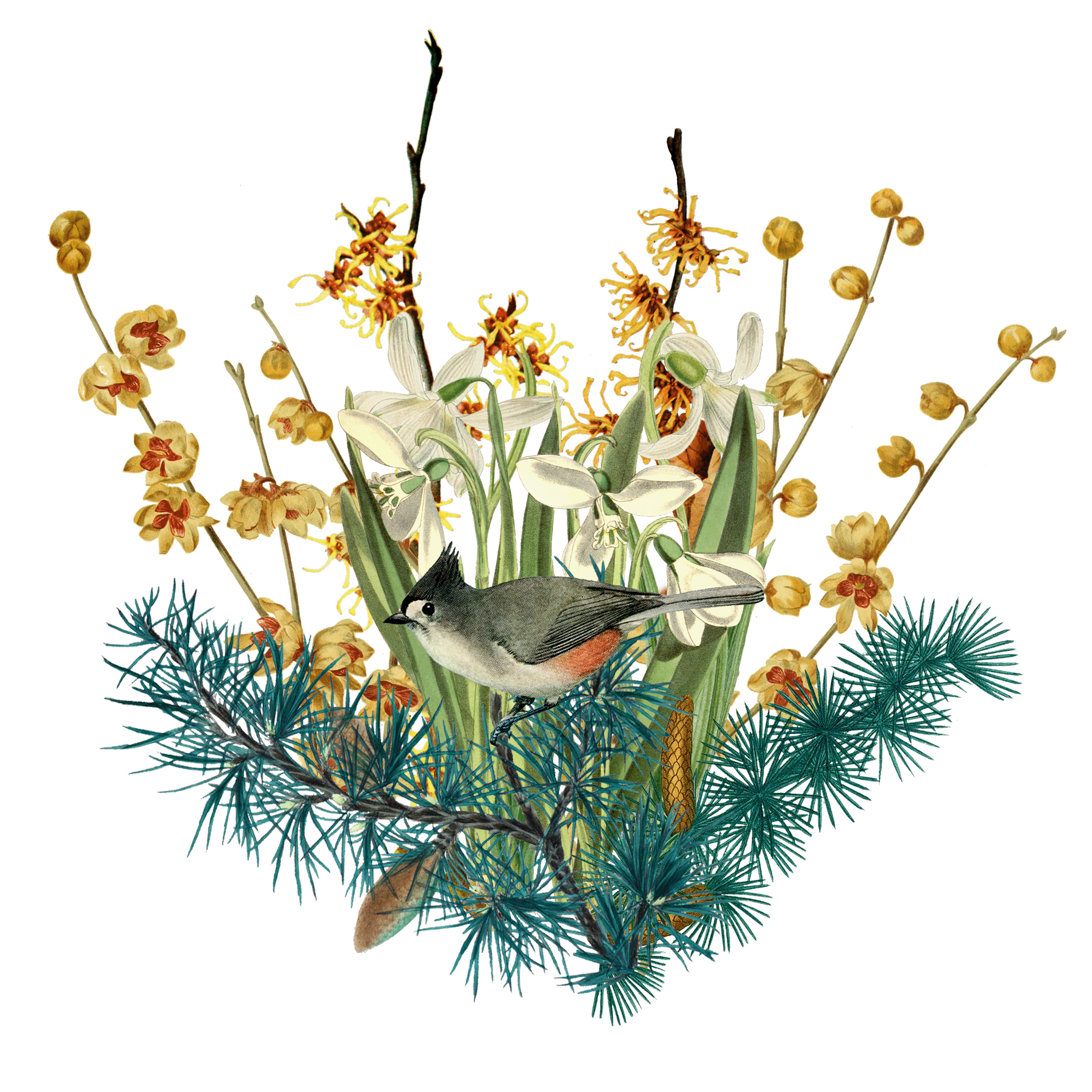
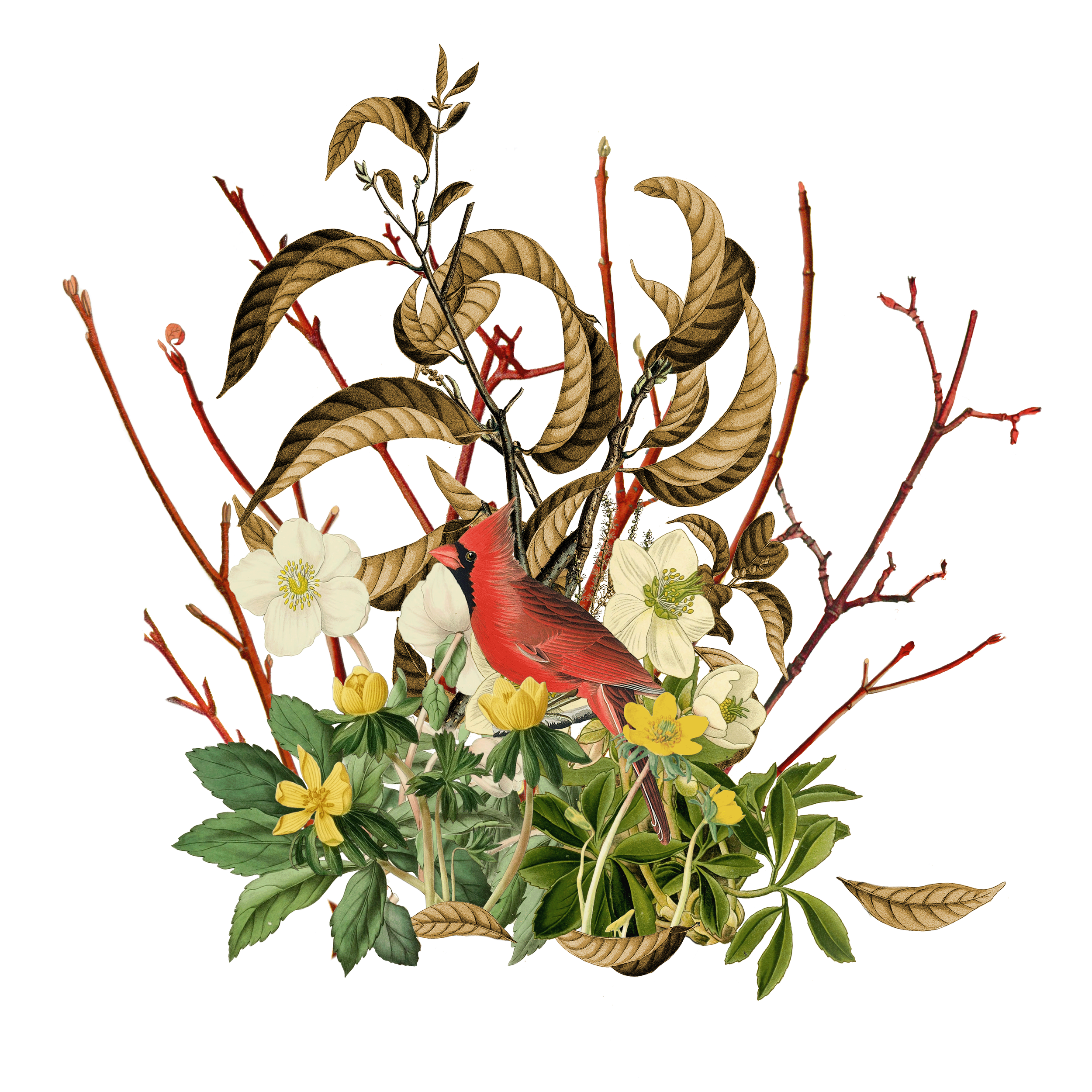
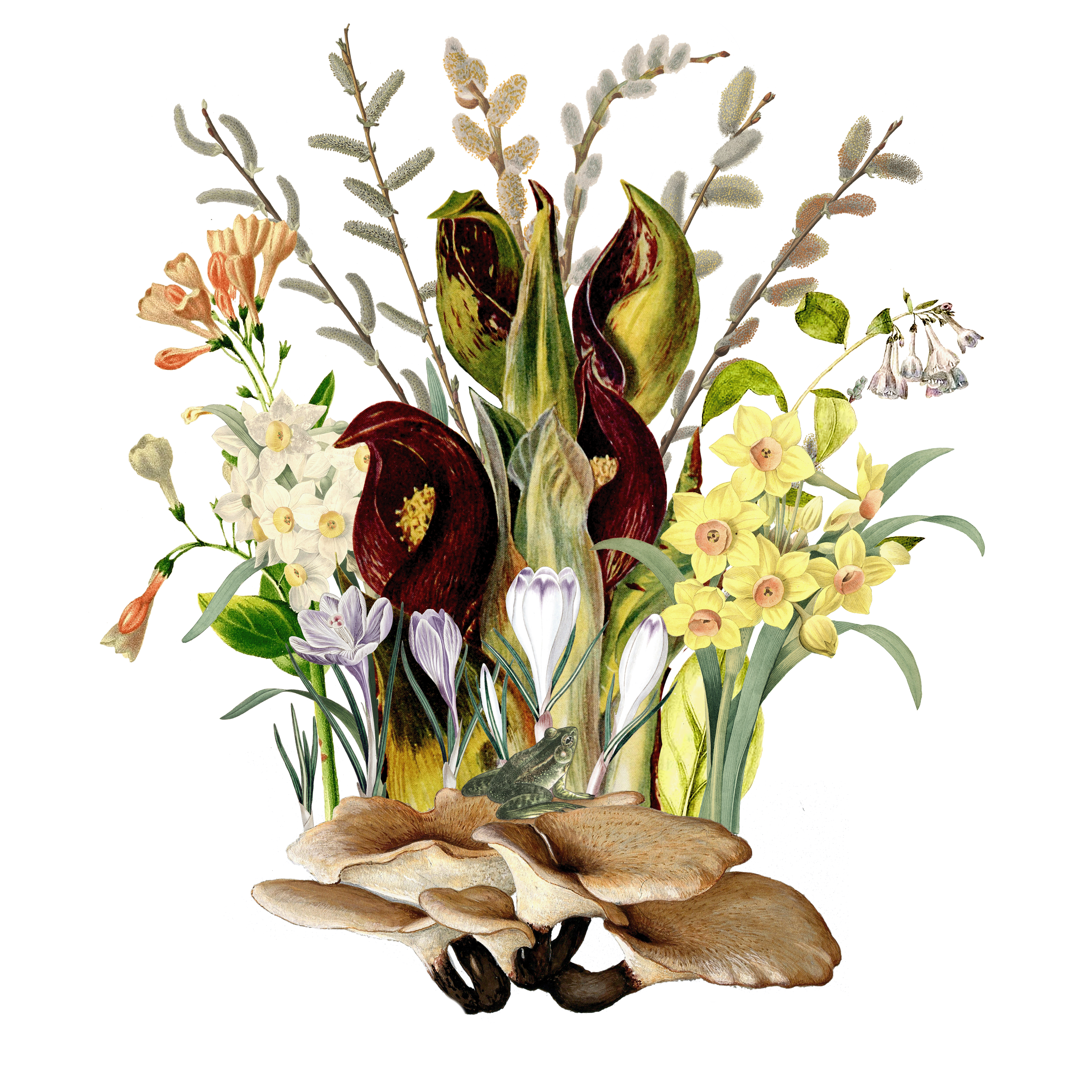
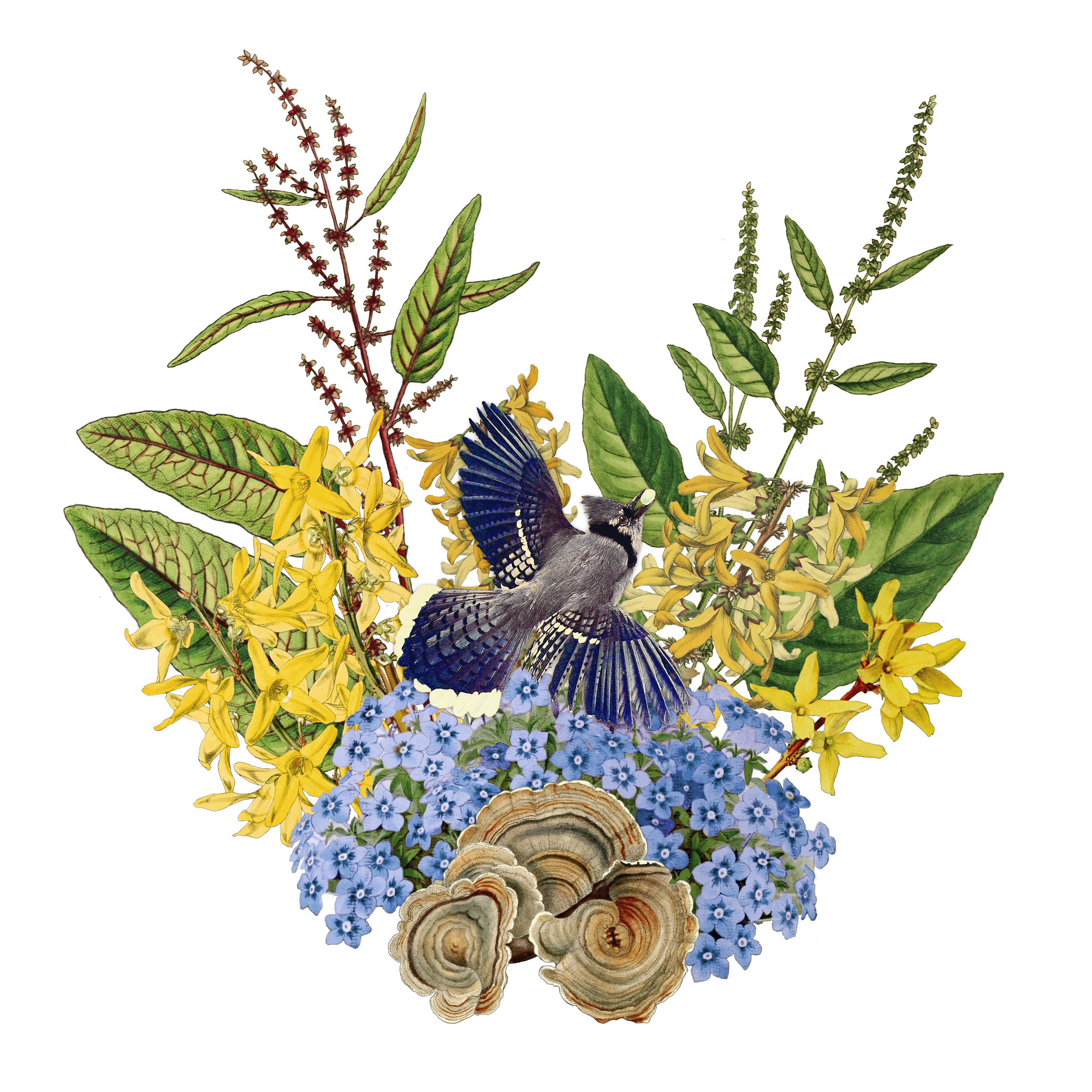
He eventually made his way to New York (Brooklyn in 2006) for a college internship, but he “liked it so much that I never went back to finish my degree. I continued doing freelance design and eventually transitioned to working desk jobs as a web, then UX (user experience) designer,” he explains.
In 2010 he met his wife through a dating website, and the rest was history.
But, let’s go back to the beginning again.
Evan traces the path back to 2014 in a small apartment in Brooklyn N.Y.
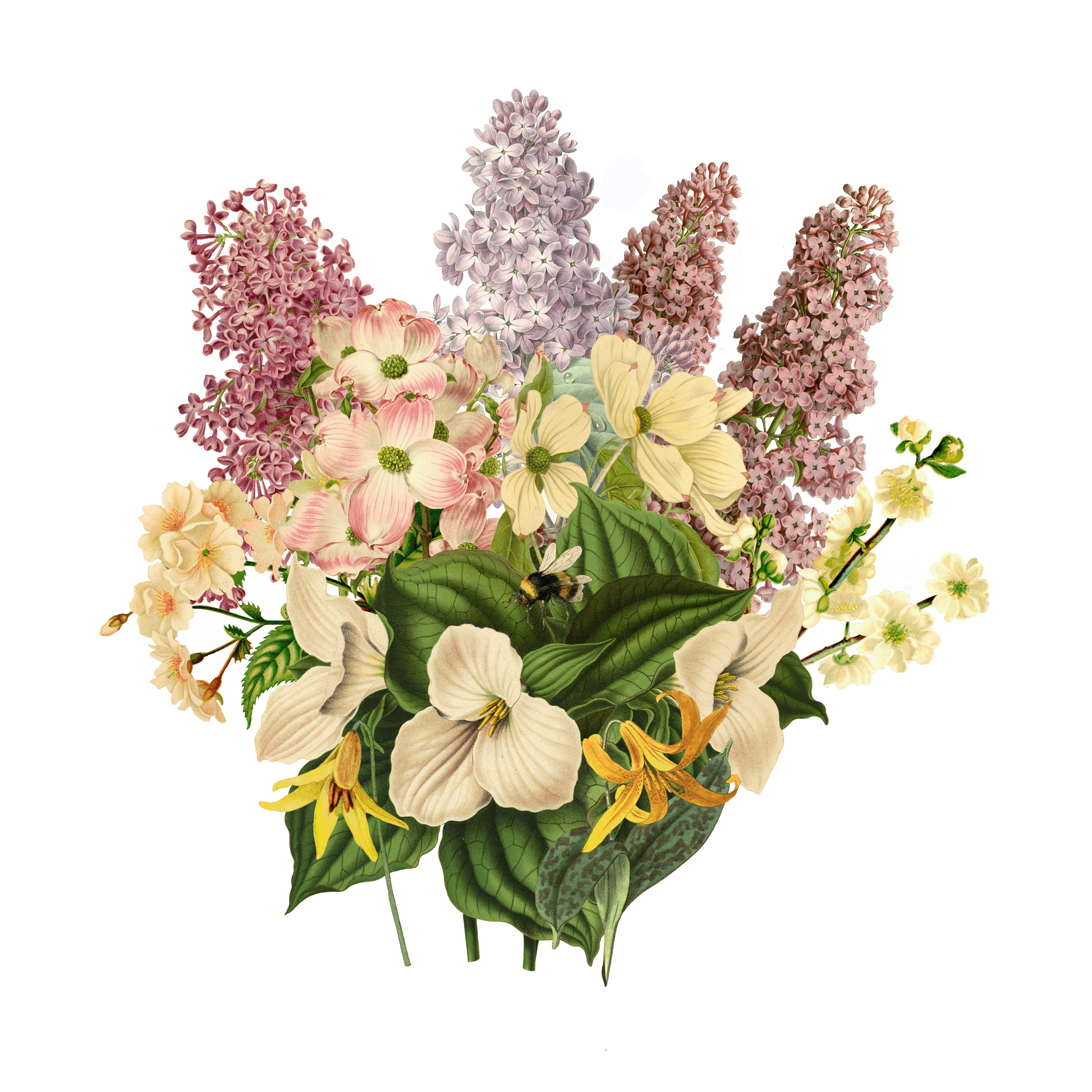


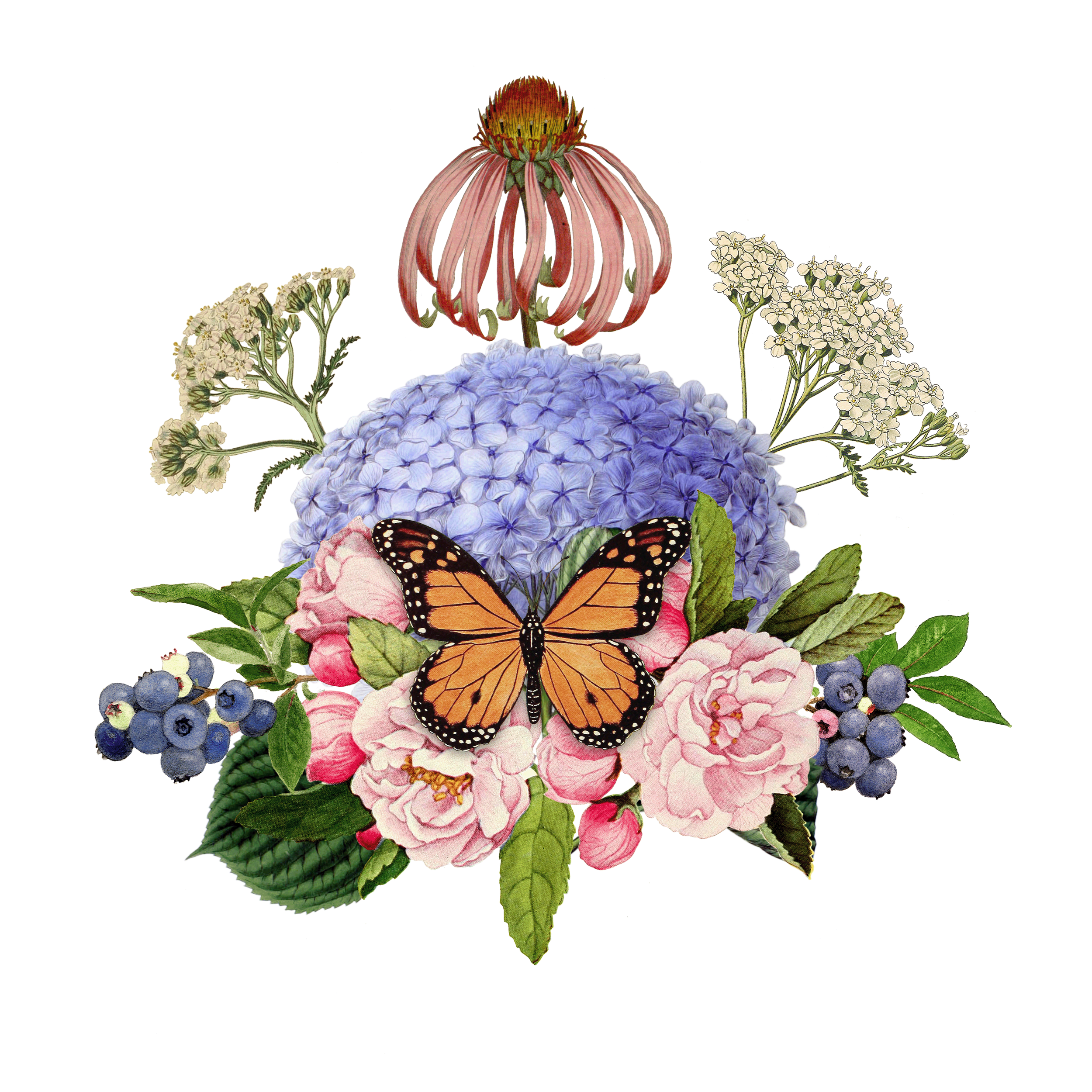
“I started making collage in earnest around 2014, while living in a small apartment in Brooklyn. I was exploring the medium in earnest, falling in love with the process, and didn’t have a particular statement I was trying to make. So a lot of the early things I made were derivative of, or direct homage, to the stuff I loved – weird scifi and dark fantasy, anime and comics and fiction.
Evan’s story certainly has a dark side, but it’s one he doesn’t mind sharing.
He remembers his artwork as a “reflection of my mental environment, which has not always been a friendly place. I was, for the first time, trying to treat my depression, anxiety and ADHD, with therapy, medication and meditation. This was not some program, I was just trying everything that seemed promising.
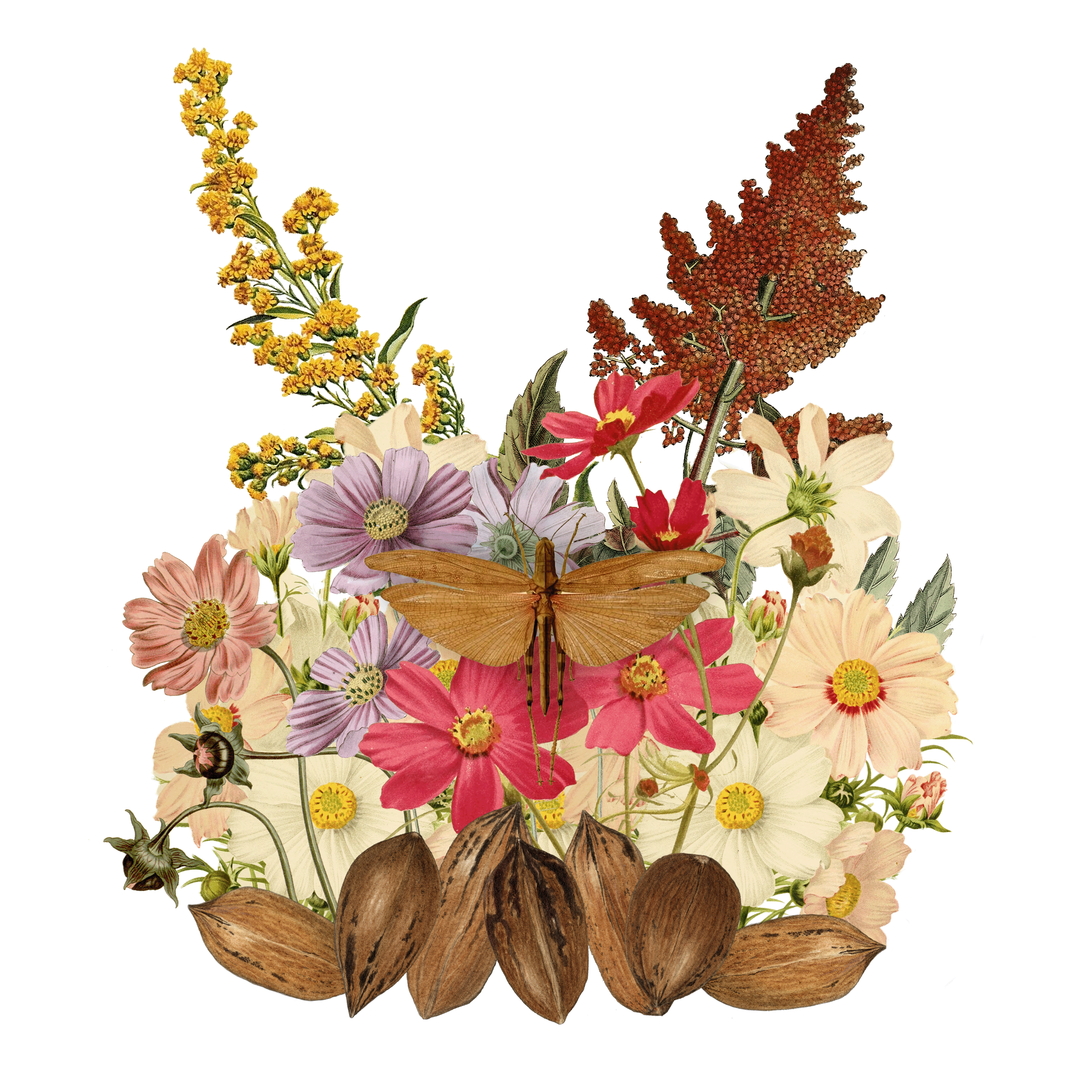

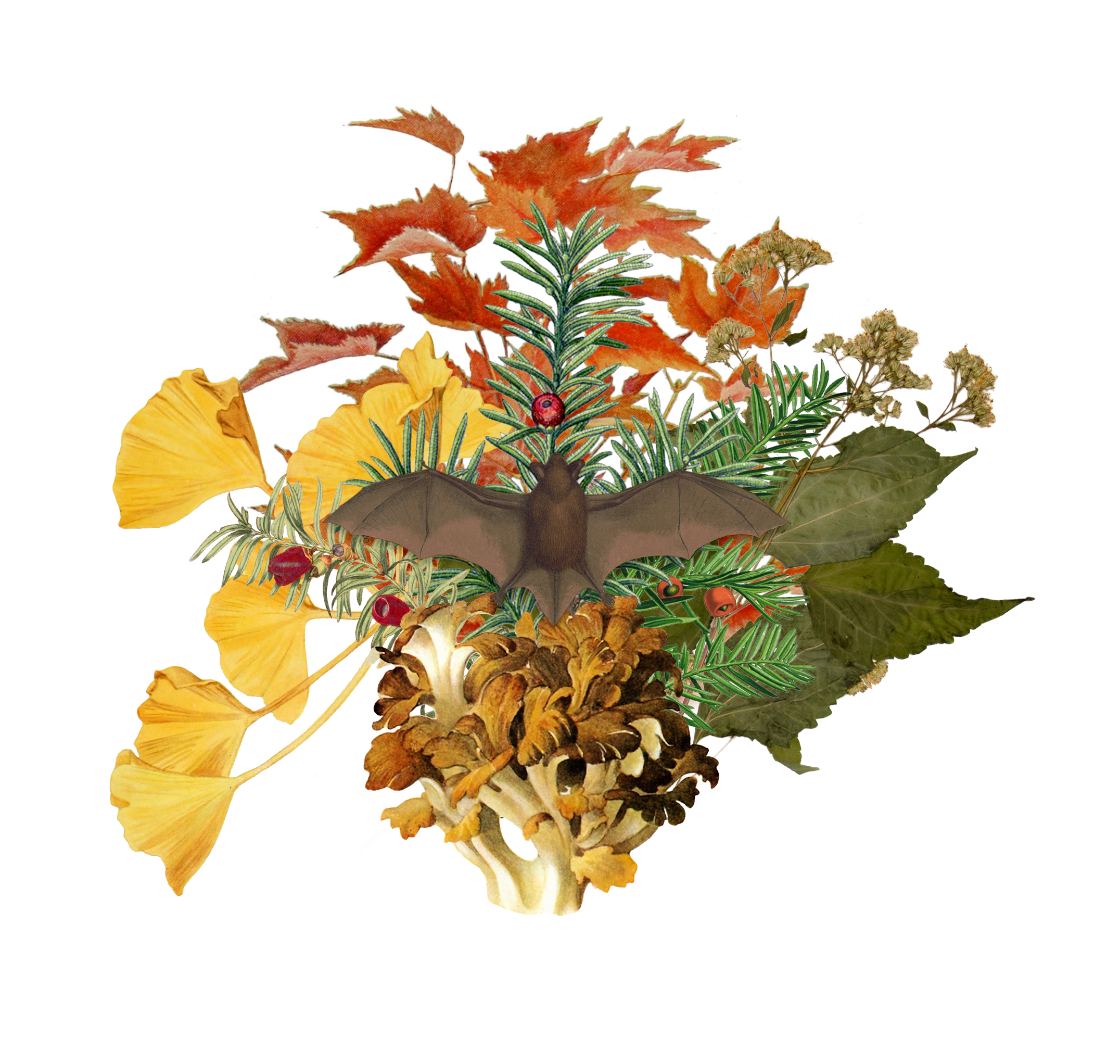
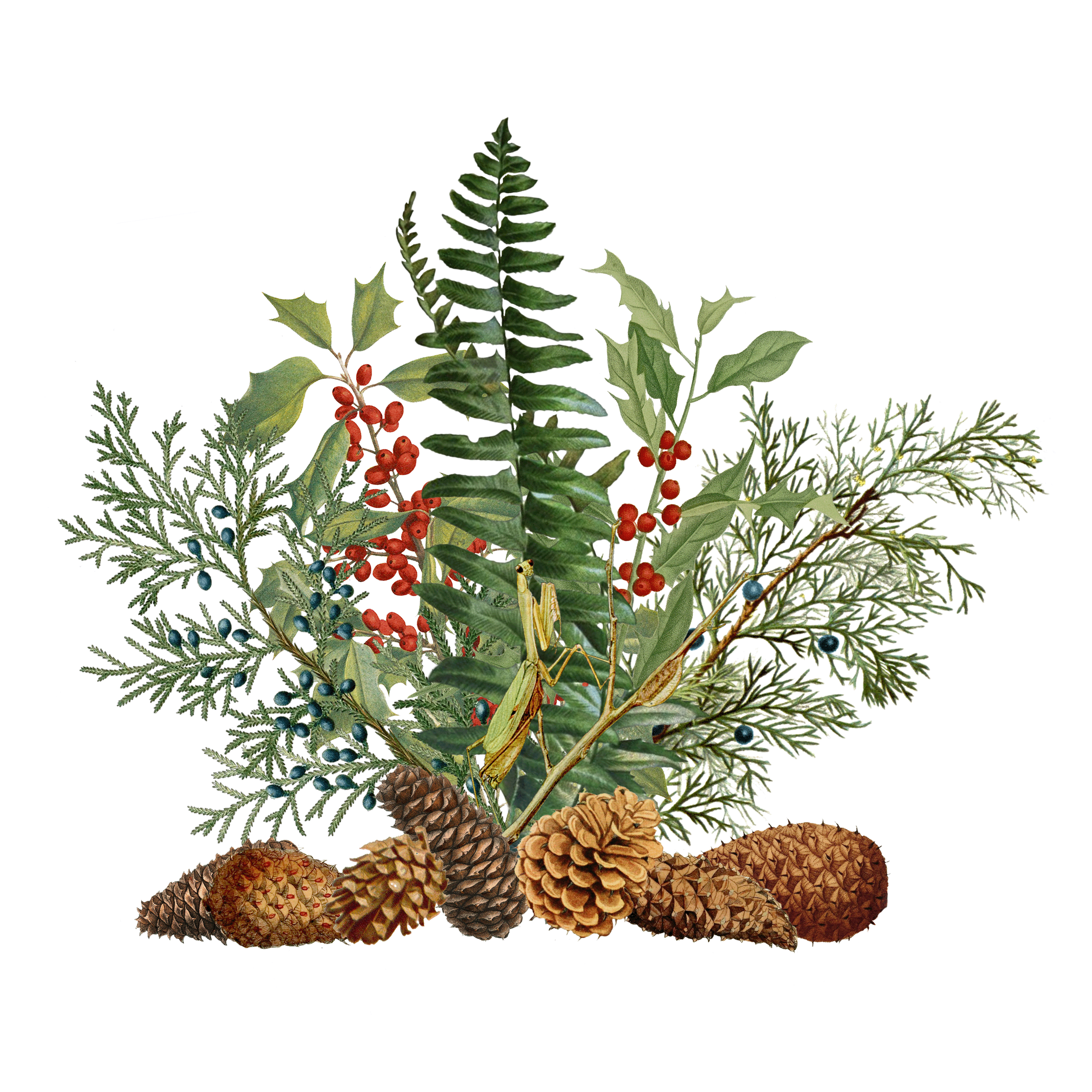
“It turns out making collage art was a key part of that healing process for me. By sifting through images and recombining them, I was able to let my subconscious process things that I wasn’t able to reckon with directly. So unsurprisingly, there are a lot of monsters,” he explains.
His outlook and creative vision continued to evolve and “in 2019 we left Brooklyn for Peekskill, NY, driven in large part by my wife’s passionate love of nature and my industry (web design) becoming increasingly friendly to remote-work. I started gardening and around the same time – the second half of 2019 – you start to see nature imagery creeping into my work.
That becomes clear in a series of biome environmental images he created that he calls the Islands series.
“I think it was also an expression of eco-anxiety – these tiny biomes floating in different voids symbolized a hopeful outcome for vanishing wild places,” Evan explains.
It was about that time that his wife needed artwork for her Forest Bathing business and Evan seemed like the logical choice to create it.
And the woodland floral bouquets were born.
But, it wasn’t quite that simple.
First, his outdoorsy wife, Fru, had to get this indoor recluse out in nature so he could experience what she was planning to dedicate her life doing.
“Well, I spend a LOT more time in the woods now. That’s always been a key part of our relationship, spending time in nature together. And for most of the time we’ve been together, she was always the one who would suggest we do outdoorsy things. And I’d half jokingly say ‘thanks for making sure I go outside sometimes.’ Because collage art is a pretty inherently indoor activity.”
Evan explains how getting outdoors changed his life.
“Learning the science has also been really eye opening. There are so many profound, and objectively measurable, health benefits to spending time in the woods. One of the most useful for me is the way it helps me regulate my nervous system. After I’ve been out in the woods for maybe 45 minutes or an hour, the sense of calm I feel in my body is tremendous, and lasts well past when we return to civilization.”
But, there was still the matter of creating these exquisite woodland bouquets. Again, that’s where his wife’s extensive knowledge of the woodland came to the rescue.
“I feel the bouquets are very much a collaboration, and never would have happened without her business as a client. They always start with a list of plants that we’re excited about seeing in the month ahead. Typically Fru would write most of that. So, she should get credit for a lot of the knowledge you’re seeing displayed!”
“From there, I’d learn the latin names and go find them on plantillustrations.org, an incredible archive of botanical imagery. Some species have hundreds of illustrations, while others might only have a few. But that site provides 90 per cent of my source material.
“Often I’ll combine elements from several different illustrations. The arranging itself is mostly my solo activity. But then I’ll always work with her to fine tune it, because she also has a great eye, especially for things like color balancing and getting the right mix of simple and complex.”
Evan also admits that it is his wife who does most of the planning.
“I do pretty well with my ADHD, but these take weeks to finish and if it were left up to me they’d all be two months late. She would make sure we start the process the month before which usually was enough time for me to finish a piece during the intended month.”
And so it was that the bouquets were born – one for each month of the year to promote Fru’s Forest Bathing business and, in turn, bring new life and focus to Evan’s art.
“I will definitely keep doing more floral arrangements,” he says. “I’d love to do commissions in this style, creating a custom piece based on the plants that are meaningful to someone.”
Where can you purchase Evan’s art?
Evan and his wife operate an Etsy shop where you can purchase his work as fine art prints, greeting cards and even a calendar displaying all the woodland images. Use this link to visit the Etsy site (or the one above.)
Evan has generously offered a 15 per cent discount to Ferns & Feathers readers by using the code “FERNSANDFLOWERS” at checkout. Evan points out that any order over $35 (which amounts to a calendar and two cards!) and there’s free shipping.
In addition, consider that 50 per cent of the Etsy shop profits are donated to an indigenous people’s arts and culture organization in New York.
“We donate 50 per cent of our profits to The Lenape Center, an arts and culture organization run by and for Lenape, the indigenous people of the Lower Hudson Valley,” explains Evan.
“As a white person, land acknowledgements are a good start, but pretty meaningless if they aren’t backed up with action, Evan explains. “So, we wanted to make sure that this project gave back to the land, by giving back to the people who have stewarded it.”
In their own words: “Since 2009, Lenape Center, based in Manhattan and led by Lenape elders, has created programs, exhibitions, workshops, performances, symposia, land acknowledgment, and ceremonies to continue our Lenape presence. We push back against our erasure and seed the ground with Lenape consciousness for the next generations.”
A front garden landscape design for the Pacific Northwest
Alexa DeBouef Brooks’ natural garden design complete with a plant list for this Seattle based front garden.
Acid-loving plants put to the test in small Seattle garden
This small Seattle front garden design plan by Alexa LeBouef Brooks puts native acid-loving plants to the test.
The Seattle area landscape designer first removed what was once a grass lawn and then had to deal with two very large and established cedar trees that were already on the property and had, over the years, turned the soil in the front garden acidic.
The design is installed in a neighborhood just outside of Seattle and very close to the University of Washington.
Alexa explains that the site is a small front lot with two very large and established cedar trees, one on either side of the garden.
Her goal was to create a natural, sustainable garden that both looks good year-round and is able to deal with changing environmental conditions associated with climate change in the future.
“You are limited in what you can plant underneath our Northwest conifers because they demand every drop of water available and make the soil very acidic.”
All the plants included in the design are acid loving plants and should establish well in the area. The House is East facing but gets adequate sunlight throughout the day.
The client wanted this garden to be an homage to a best friend who had recently died.
(Be sure to click on the link here for more on Alexa LeBouef Brooks and Understory Gardens.)
Also, if you are interested in native plants, be sure to check out my post on Gardening with Native Plants of the Pacific Northwest.
Alexa explains that for years the friends had planned on creating a native garden together.
“I feel honored to have been a part of this project, and help the clients vision come to life."
Below is a chart showing the plants Alexa used to create the garden. On the left are the number of plants and on the right is the name of the plants.
Above is a plant guide for the garden with the numbers listed to the left of the plant’s name.
Alexa LeBouef Brooks is a young landscape designer in the Seattle area who is using her passion for native plants along with her background in fine art to create exciting natural and woodland gardens.
She recently told Ferns & Feathers that the “development of my style of gardening grew from my desire to always be connected to the natural beauty I spent so much time in as a child. Although I embrace multiple garden aesthetics, the native and natural style of gardening keeps me rooted in the land I call home.”
Through the excellent work of the Seattle-based, non-profit organization called Plant Amnesty, many of Alexa’s clientele are already aware of the importance of protecting the ecology of the area.
The organization’s focus is to educate the greater Puget Sound area on proper pruning, responsible gardening and land preservation.
“I find that most clients who seek gardeners and designers through Plant Amnesty have a shared interest in maintaining the integrity of our delicate ecology and environment. Even outside of my Plant Amnesty clients, when a potential client sees my business name and website, they are anticipating a particular style of gardening from my work. Most are open to the suggestions I make when designing their gardens and plugging in additional plants to an existing design as well as garden maintenance methods,” Alexa explains.
Changing the way we garden is important to Alexa. Climate change is an ever increasing problem in the Pacific Northwest as well as elsewhere and Alexa is passionate about designing and installing gardens that will meet the future needs of her clients.
Issues around water conservation and installing plants that can not only deal with the increasingly hotter summers Seattle residents face, but the colder winters, are an important part of Alexa and Understory Gardens’ approach to the new challenges on gardening in the Pacific Northwest.
If you are on the lookout for high quality, non-GMO seed for the Pacific North West consider West Coast Seeds. The company, based in Vancouver BC says that “part of our mission to help repair the world, we place a high priority on education and community outreach. Our intent is to encourage sustainable, organic growing practices through knowledge and support. We believe in the principles of eating locally produced food whenever possible, sharing gardening wisdom, and teaching people how to grow from seed.”
Plant list for Seattle front garden design plan
Below is a list of the plants used in the garden in case the chart is difficult to read
1 Ribes sanguineum (Flowering Currant)36Oxalis oregana (Redwood Sorrel)
3 Polystichum setiferum (Alaska Fern)
9 Cornus se. 'Kelsey' (Kelsey Dogwood)
2 Dicentra 'Gold Heart' (Bleeding Heart)
6 Erigeron glaucus 'Bountiful' (Seaside Daisy)
5 Mahonia nervosa (Cascade Oregon Grape)
13 Sisyrinchium 'Rocky Point' (California Blue Eyed Grass)
11 Tellima grandiflora (Fringe Cups)
2 Oreostemma alpigenum (Alpine Aster)
4 Adiantum pedatum (Northern Maidenhair Fern)
7 Blechnum spicant (Deer Fern)
3 Helictotrichon se 'Sapphire' (Blue Oat Grass)
24 Cornus canadensis (Bunchberry Dogwood)
5 Heuchera cylindrica (Alpine Alumroot)
2 Balsamorhiza sagittata (Arrowleaf Balsamroot)
2 Vaccinium ovatum (Evergreen Huckleberry)
1 Rosa nutkana (Nootka Rose)1Arctostaphylos d 'Howard McMinn' (Manzanita)
Understory Gardens: Focus on sustainable west-coast landscapes
Alexa LeBouef Brooks is a west coast garden designer looking to convince people that we need a more sustainable approach to garden design in the face of climate change.
Garden designer’s favourite plants for the natural garden
Alexa LeBouef Brooks is changing the world around her, and she’s not alone.
Like so many other people her age working to protect the earth, Alexa recognizes that the environment is at a critical juncture – either something is done soon or we risk losing much of what we have in the not-too-distant future.
The 33-year-old landscape designer is fully aware of the environmental challenges that lay ahead for future generations and the precarious path humans could be facing in the future.
Alexa is part of a new breed of progressive landscape designers taking it upon themselves to reject traditional garden designs and embrace a new, more sustainable garden style – at least in the town she calls home. Her Pacific West-Coast designs specialize in developing a more sustainable, woodland or naturalized gardening approach – hence the name Understory Gardens.
(For more on West Coast garden designs and native plants, be sure to check out my post on Vancouver-Island-based Satinflower Nurseries, Native plants find a home on Vancouver Island.)
Also, if you are interested in native plants, be sure to check out my post on Gardening with Native Plants of the Pacific Northwest.
That love of woodland and natural garden designs has its roots in her childhood.
“Growing up in the Pacific Northwest my parents often brought me to the mountains or the river and seasides to go camping and exploring. From a young age I found myself in awe of our natural beauty,” Alexa explains.
“I think the development of my style of gardening grew from my desire to always be connected to the natural beauty I spent so much time in as a child. Although I embrace multiple garden aesthetics, the native and natural style of gardening keeps me rooted in the land I call home.”
Inspired by the work of Irish landscaper, author Mary Reynolds
Although her love for natural gardens has its roots in her childhood, Alexa owes much of her garden design approach to the work of famed Irish landscape designer and author Mary Reynolds who, rejected the traditional landscape design methods to focus mainly on restoring the land and habitats. She is founder of the environmental movement wearetheark.org, that encourages gardeners around the world to create more natural, sustainable gardens through the use of native plants.
If you are interested in getting more on the work of Mary Reynolds and her book Garden Awakening, you might be interested in my article Garden Awakening will change the way you garden.
Another landscape designer that has shaped Alexa’s work are the more classic designs of Miranda Brooks.
Although her passion is landscape design, Alexa’s real challenge is about combining beautiful, but ecologically sustainable landscapes for her clients.
Her long list of achievements has helped lead her to starting landscape design in 2018.
Vice chair and landscape designer for the Edmonds Architectural Design Board
Completed Edmonds Community College courses in specialty pruning and design
Member of the Plant Amnesty Gardener Referral List
9 years experience with organic Agriculture and animal husbandry
8 years experience with ornamental Horticulture
Plant Amnesty: Focus on maintaining ecology and environment
Through the excellent work of the Seattle-based, non-profit organization called Plant Amnesty, many of Alexa’s clientele are already aware of the importance of protecting the ecology of the area.
The organization’s focus is to educate the greater Puget Sound area on proper pruning, responsible gardening and land preservation.
“I find that most clients who seek gardeners and designers through Plant Amnesty have a shared interest in maintaining the integrity of our delicate ecology and environment. Even outside of my Plant Amnesty clients, when a potential client sees my business name and website, they are anticipating a particular style of gardening from my work. Most are open to the suggestions I make when designing their gardens and plugging in additional plants to an existing design as well as garden maintenance methods.
“The more I learn about the benefits of using strictly native plants, the more I turn to them,” Alexa LeBouef Brooks.
Designer is turning gardens into works of art
Alexa’s background in fine art certainly helped prepare her for the challenge
“In 2012 I received my bachelor’s degree of Fine Arts and Art History and pursued the art world in my twenties. I have always had my hands in the soil for as long as my memory serves me. I think that is why I enjoy art and art making so much, is because there is a tactile element that requires the use of hands and creativity, while getting a little messy along the way,” she explains.
“Somewhere along the journey I started getting interested in the design element of landscaping. I could use my creative skills on paper to transform beautiful outdoor living spaces. Landscape design has become the perfect marriage of all my interests in the art and landscaping world.”
Along the journey, she is playing a vital role in saving the natural environment and landscapes in her home town of Edmonds, Washington just outside Seattle, where she is the vice-chair for the Edmonds Architectural Design Board.
“I believe all homeowners should be stewards of their land, to preserve and maintain the diverse ecology of surrounding plants and species,” she explains.
Alexa is doing her part to help guide her clients along this path. Education plays an important role in her relationship both with her clients and the environment she creates for them.
“My design process includes an educational element in which I teach my clients about individual plant and seasonal needs. I like involving my clients in the design process because it inspires them to learn more about maintaining our natural environment, and their personal garden is the perfect tool to achieve this.”
I believe the natural landscape of the Pacific Northwest stirs inspiration in people of all ages to maintain its beauty.
She is quick to point out that, “responsible stewardship can also be achieved by creating designs for clients that integrate native and drought tolerant plants as well as plants that attract our resident pollinators.”
Alexa uses her extensive knowledge of the environment and use of native plants to guide her clients.
“I believe the natural landscape of the Pacific Northwest stirs inspiration in people of all ages to maintain its beauty,” she explains.
“It could be as simple as leaving most of the fallen leaves and using it as an attractive mulch for garden beds. Destructive methods include stripping the top layer of mulch and soil using powerful gas blowers and excessive raking. Not only does this negatively impact butterfly larvae populations as well as leave little nesting materials and berries for birds, but you are left with bare soil that does not retain moisture and nutrients for our increasing summer temperatures in the Pacific Northwest.”
Climate change: Awakening a new style of gardening
Alexa is the first to admit that climate change is awakening homeowners, who may have once dreamed for a certain style of garden, into realizing that a new, more sustainable approach to gardening is now needed.
“In the midst of our climate crisis and environmental destruction, Washington’s winters are bringing in more rain and colder temperatures while our summers are bringing in more drought and higher temperatures. What was a temperate climate is slowly becoming more extreme,” she explains.
“One of the biggest challenges we now face are forest and brush fires. Because of our increasing temperatures in the summer, many landscapers are implementing more California natives. The drawback is not all California natives thrive in our decreasing winter temperatures. So, instead of trying to control a shift in our plant hardiness zones, we must adapt and allow our plants to adapt. This, of course, comes with trial and often error. More and more clients are requesting drought tolerant plants in their gardens, and I am happy to oblige.”
(Be sure to check out the full story of Alexa’s Seattle-area garden design, including a list of native plants used in the design.)
Alexa’s favourite Understory trees for Pacific Northwest gardens
Acer circinatum (native Vine Maple) for its spectacular fall color and interesting structure.
Cornus nuttallii (native Pacific Dogwood) for its cascading branching and delicate flowers.
Cornus controversa 'Variegata' (giant Dogwood or Wedding Cake tree) for its gorgeous cake-like layers of branches and delicate variegated color.
Cercidiphyllum japonicum (Katsura) for its fall color and fragrance of leaves that smell like burnt sugar.
Magnolia macrophylla (Bigleaf Magnolia) for its broad leaves that provide a tropical feel.
Alexa’s favourite ground covers for Pacific Northwest gardens
Cornus canadensis (native Bunchberry dogwood) for its seasonal interest from flowers, to berries, to multi color leaves. (For more information on our native bunchberry be sure to check out my story here.)
Frageria chiloensis (native Beach Strawberry) for its fruit, flowers and evergreen interest.
Ophiopogon 'Nana' (Dwarf Mondo) for its hardy evergreen blades that can withstand heavy traffic.
Erigeron glaucus (native Seaside Fleabane) for its spring through fall blooms.
Erigeron karvinskianus 'Profusion' (Fleabane) for its delicate white and pink flowers.
Alexa’s favourite Shrubs for Pacific Northwest gardens
Vaccinium ovatum (native Evergreen Huckleberry) for its edible berries and sculptural element.
Ribes sanguinium (native Flowering Currant) for its vibrant flowers.
Arctostaphylos 'Howard McMinn' (California native Manzanita) for its red bark, bell shaped flowers and silver leaves.
Picea abies 'Pusch' (Norway Spruce) for its hot pink cones and pin cushion shape.
Rosa nutkana (native Nootka Rose), for its rose hips and just to add a bonus, Corylopsis spicata (Winter Hazel) for its winter flowers.
Incorporating natives and non-natives in the landscape
While Alexa strives to incorporate more and more native plants in her landscapes, clients needs often dictate the use of non-natives. In many cases, non-natives are already well established in the gardens.
“My designs meet the clients where they are, and I incorporate many different aesthetics that cater to the clients needs and desires. That being said, I will always see myself as a student in anything I pursue. The more I learn about the benefits of using strictly native plants, the more I turn to them, explains Alexa.
(If you are looking for more information on the importance of using native plants in our gardens, check out my comprehensive post: Why we need native plants in our gardens.
“There is a list of plants that I strictly avoid in our area. These include invasive species that drive out beneficial pollinators, degrade habitat, cause disturbance in the food web, and even chemically alter soil biology. This doesn't even cover genetically engineered plants which is an increasing technology being utilized that has known and unknown consequences. The most important act we can do as gardeners and landscapers is educate our clients on what is appropriate for our area and be cognizant of our watershed, soils and precious species.”
Alexa gives much of her success and knowledge of plants to her friend Bre Moravec.
“My friend and fellow gardener Bre Moravec, owner of Gaia Gardens is the perfect example of this. She goes the extra mile to educate herself to educate others. Because of Bre’s passion she has mentored me and other gardeners, teaching specialty pruning methods and in depth plant species knowledge and identification.”
How Covid changed the way we garden
When asked how important she thought it is for homeowners’ physical and mental health to surround themselves in a landscape they love, and how rewarding it is for her when her clients fall in love with their new gardens, Alexa responded: “It has always been important, but ever since the Covid pandemic it is more important than ever.
“There have been studies that time spent outside, specifically in a more natural setting improves sleep, lowers overall inflammation, enhances blood flow, repairs cells and tissues, and improves electrical activity in the brain. How amazing would it be if we can access this from our backdoor! I love helping my clients transform what was once an uninviting space into a space in which they and their families can retreat to, where it is safe because they know chemicals aren't being used, and they can enjoy all the benefits and pleasures that our seasons bring.
(If you are looking for more information on the importance of being outdoors in nature and in our gardens, you will want to check out my post Why kids need more nature in their lives.
And what does Alexa love most about her job?
“My relationships with my clients and time outside bring me most joy. The most difficult hurdle about this job is probably Washington’s weather. We’re known to get a lot of rain here!
For more information, or to contact Alexa about landscaping, visit her website at Understory Gardens.
If you are looking for more inspiration, you may be interested in Gardens of the Pacific Northwest.
If you are on the lookout for high quality, non-GMO seed for the Pacific North West consider West Coast Seeds. The company, based in Vancouver BC says that “part of our mission to help repair the world, we place a high priority on education and community outreach. Our intent is to encourage sustainable, organic growing practices through knowledge and support. We believe in the principles of eating locally produced food whenever possible, sharing gardening wisdom, and teaching people how to grow from seed.”
Why kids need more nature in their lives
Educators, authors and experts agree about the importance of providing more nature in the lives of children. Nature Deficit Disorder has been linked to children's ability to focus among other things. Debra Toor of Burlington Ontario is doing her part to help children learn about monarch butterflies, vultures and native bees through on-line courses she uses to teach children around the world.
Benefits of outdoor education: Teachers, parents, experts speak out
How important is it to teach our children about birds, butterflies, pollinators and the natural world in their own backyard?
Extremely important, according to experts in the field from professors in Environmental Science to on-line educators, authors and millions of parents who want their children to grow up knowing as much or more about the environment and the natural world around them than they did when they were growing up.
The learning opportunities for young children in even a small garden are endless whether it’s watching the life cycle of a monarch, seeing a fawn feed from its mother, or becoming familiar with local bird species and how they survive throughout the seasons. Outdoor education has never been a more important component in a child’s physical and mental development whether its a few hours spent in a woodland garden or a walk in the woods.
“Children have a natural affinity for the living beings all around them,” says Nancy Lawson, author of The Humane Gardener. “Cultivating that sense of wonder is as easy as walking out the front door and encouraging them to explore things at their level – the shape of a fallen leaf, the sound of a bee buzzing on a flower, the busy ants carrying seeds to their nests,” she adds.
A child gets a close look at daisies in the garden.
What’s the value of Outdoor Education for young students
“Just a little bit of awareness during those early years will stay with them for a lifetime.” says Lawson, who also operates an informative website The Humane Gardener, Cultivating Compassion for all Creatures Big and Small.
“I find it amazing that almost everyone I talk to in this line of work has a vivid memory of some spark that was lit during a camping trip with their parents or while helping their grandma in the garden. It may subside for a while during the growing-pain teenage years but then somehow takes over again in adulthood. It’s like that early exposure to nature just gets in your bones,” she adds.
Julia Daly, who works at Saanich Native Plants in Victoria B.C. and has extensive experience in plant identification, species at risk management, ecological restoration, and native plant gardening, knows first hand how important early childhood learning and backyard environmental science is to young children.
Over the past year, her 4 and 6-year-old daughters helped turn a 2x5 meter section of barren lawn space outside their backyard fence into a diverse native plant pollinator meadow that is now teaming with life.
“My children have found that if they provide quality habitat, wildlife will come and benefit. They are coming to understand that if each of us does something, we can make a difference on a large scale. And this gives them a sense of power and hope,” she explains.
“Young people are faced with the overwhelming task of remediating environmental damages passed down by previous generations (e.g., climate change, habitat loss, pollution, and invasive species). Introducing children from a young age to outdoor play and the relationships found in nature, within their own backyards and neighbourhoods, provides them with the knowledge and confidence to better understand and care for their local and global environment.”
“Outdoor play holds a child’s interest because it is always changing (weather, seasons, etc). Children instinctively value nature,” Daly explains. “Outdoor learning is accessible and low cost. For families without a backyard, regular walks to a local natural area to observe seasonal changes, and learn about native plants, insects, and the diversity of wildlife that depend on them, can have a huge influence.
Dealing with Nature deficit disorder
In an article from the Child Mind Institute, author Danielle Cohen states: The national panic about kids spending too much time indoors has become so extreme that the crisis has a name: Nature deficit disorder.”
She explains that the shift is largely due to technology: “The average American child is said to spend 4 to 7 minutes a day in unstructured play outdoors and over 7 hours a day in front of a screen.”
Recent studies illustrate the importance of being outside. In fact, “most of the studies agree that kids who play outside are smarter, happier, more attentive, and less anxious than kids who spend more time indoors. While it’s unclear how exactly the cognitive functioning and mood improvements occur, there are a few things we do know about why nature is good for kid’s minds,” she writes.
These benefits include: increased confidence, creativity and imagination, and responsibility. Exposure to nature also provides a different stimulation activating more senses – such as hearing, smell and touch.
“As the young spend less and less of their lives in natural surroundings, their senses narrow,” explained Richard Louv, author of the book Last Child in the Woods: Saving Our Children From Nature-Deficit Disorder.
Giving children “experiential education” in the environmental sciences by getting out into our own backyard and local parks is critical, explains Jessica Slomka, a lecturer at the University of Toronto with a Phd. in Earth Sciences.
“The outdoors is a natural laboratory where students and children can experience nature first-hand in all of its complexity (something a textbook cannot accurately capture), she explains.
“Providing children with the opportunity to explore the natural world in their own backyard and neighbourhood green spaces allows them to observe interactions between species, such as a bees buzzing around the flowers, and processes in natural systems, such as sand rolling along a stream bed, ask questions about what they see (why? how?), and follow their curiosity and interests to seek out answers by continuing to observe and interact with these natural systems.
“As a result, children develop a personal connection to the natural world and their local environment, which may, in turn, foster a lifelong sense of responsibility, passion, and respect for nature,” Slomka explains.
Helping children discover nature
Debra Toor, an on-line educator, is doing her part to teach young children about everything from the life cycle of monarch butterflies to the importance of the Turkey vulture in the natural world.
And, although she works out of her home in Burlington Ontario, her message is carried around the world from Canada and the United States to Singapore, South Africa, Poland and Belarus. She’s also touched the minds of thousands of children in Ireland, England, India and even the United Arab Emirates.
Spreading the word to the world
In the United States she has taught on-line classes to students in Michigan, California, Georgia, Florida, North Carolina, New York, Tennessee and Texas. In Canada, her backyard wildlife courses have reached school children in British Columbia, Newfoundland, Ontario and Quebec.
Debra Toor in her backyard checking out a Monarch chrysalis in her milkweed patch.
And the list continues to grow as more educators and concerned parents discover the value of educating young students in the importance of the natural world and the steps that these students and future leaders can take to protect native flora and fauna.
The former communications director for Earth Day Canada, an environmental communications non-profit organization, has been involved in environmental communications for more than 10 years. So, it was only natural for her to start her own company, Conservation Scientists in Action.
“My mission is to educate about ecosystem services of wildlife and how scientists are using tools and methods to learn about declining wildlife populations,” she explains, adding that she also works to explain “how scientists use scientific data to advocate for wildlife recovery programs and to support legislation.”
What does all this mean to the students who take her courses?
“Each topic is designed to get students to think about the roles of wildlife, specifically, how do they help the earth? I place an emphasis on how wildlife benefits humans, not to be human-centric, but to drive the message home that we cannot survive without wildlife,” she explains.
In my 25+ years of being an environmental educator, I have learned that the way to get people to be more open to wildlife is to see the big picture of how we are all interconnected.”
Children get to experience nature up close
A tall order for sure, but one she tackles by focusing on school children primarily in Grades 1-7, but also high-school-aged students. Her presentations are far from dry. Children interact with her live and are entertained with videos showing nature in action.
“My classes are interactive expeditions that allow students to become Jr. Biologists as they investigate videos and images of wildlife interacting in habitats, and conservation scientists as they use scientific methods and tools.”
Based on feedback from parents and teachers, students love the videos clips, Toor explains.
“I make sure to include videos of incredible scenes that they have never witnessed before. Students also really enjoy using their voices in the expeditions to make observations and inferences, and to ask and answer questions.”
She tells a story about childrens reactions during a video of a bald eagle stealing carrion from a group of vultures.
“There is one vulture video I show where a bald eagle snatches a dead animal away from squabbling turkey vultures. The kids are always fascinated with the scene. We discuss why it is that the eagle, although a hunter, stole the vultures’ food. Answers range from “the eagle is lazy” to the eagle is hungry…” One day, a Grade 5 student answered “Bald eagles will also scavenge because it takes less energy to scavenge than it does to hunt.”
That’s one smart student.
Teaching the children is a logical extension from her earlier work in the field: “One of my roles was to collaborate with researchers and experts to create publications, including community guides for schools, employee groups and community groups,” she explains.
In love with the Turkey Vulture
Her expertise and quest for knowledge led her to a fascination with one of nature’s – shall we say less-loved birds – the Turkey Vulture. That eventually led to a book publishing in 2015 entitled Survival Secrets of Turkey Vultures. That publication eventually led to her beginning to make presentations as a Microsoft Educator to advance literacy of wildlife ecosystem services with a focus on vultures. The Microsoft program folded during the pandemic, but Toor had already began using the experience and knowledge gained in the program to start her own business. So, when the program ended, she was able to spend more time working on her own on-line business.
A focus on Monarch butterflies
Much of her focus has been on the fascinating story behind the adventures of Monarch butterflies. But Toor doesn’t just talk about the incredible story behind the Monarch – she lives with it everyday in her backyard.
“My yard is monarch waystation. It’s a challenge because I live in a neighbourhood where manicured lawns are the norm,” she says, explaining that she shares a front yard with a neighbour so is unable to tear out the grass.
“My yard, as far as I know, is the only one in the entire neighbourhood with a front yard milkweed patch,” she explains."
The sign on Toor’s front lawn supporting monarchs has proven to be a great way to meet her neighbours and pass along her enthusiasm for monarchs.
“I love the sign because it educates people. In the spring, a father and his young daughter approached me to say they love my butterfly garden.”
Toor encourages everyone who is interested to join the Monarch Way Station Program by going to https://www.monarchwatch.org/waystations/
The process is fairly simple, she explains:
Fill out a registration form, and agree to grow milkweed and mostly native nectar sources, refrain from using pesticides and herbicides, etc.
There is a fee for certification, and registrations get a certificate recognizing their property as a monarch waystation, and a yard sign.
There are downloadable resources for beginners.
Monarchs certainly take centre stage in her courses.
Toor’s Nature courses for students
In one of her courses, Monarch Butterfly Expedition, which is available year round, students get to see Monarchs in the fall fuelling up on goldenrod in Ontario as they begin their migration south to Mexico. Students get to see them arrive in Mexico after the long journey where they gather in massive numbers and “hug the branches and trunks of the oyamel trees” to keep warm. The students get to see monarch eggs hatching, forming a chrysalis and eventually emerging from that same chrysalis.
Along the way they learn about monarch habitats, adaptations, life cycle and great migration, how monarch butterflies help the earth (ecological niche), food webs, human impacts as well as conservation and citizen science.
It’s a learning experience not available in most schools.
In addition to the Monarch Butterfly Expedition, teachers and home-schooling parents can pick from a myriad of other educational courses including:
• Backyard Animal Expedition, where students are exposed to the often misunderstood Opossum, skunks and racoons and learn about their habitats, adaptations, how they help the earth as well as information on human-wildlife conflicts, wildlife rescue and rehabilitation, and conservation and citizen science.
• Monarch Butterfly Adventure, where the class is encouraged to find and hatch their own monarch butterfly.
• Vulture Expedition where students investigate vultures in their habitats and meet the conservation scientists who work with them.
• Pollinator Expedition where students meet the little things that run the earth from bees to butterflies, moths and bats. Students are able to watch video of bumble bees emerging from their ground nest, Cavity nesting bees emerge in the spring and a leaf-cutter bee build her nest.
There is also a course on the changing seasons and how animals adapt.
Toor operates a website www.conservaction.info where teachers, homeschooling parents and families can register for the courses or just gather information about what she has to offer.
To see her in action with students check out this YouTube video.
Toor is not alone in her attempt to spread her knowledge to students at home or in the classroom and the more than year-long stay-at-home orders has made on-line education just that much more important for now and into the future.
Acorn Naturalists offer expertise
Acorn Naturalists, a group based in the United States was founded more than three decades ago by teachers to create and distribute high quality, hands-on learning resources for use both inside and outside the classroom.
According to their website, they offer “school supplies, science and nature activity kits, as well as hand-on educational resources for parents, classroom teachers, naturalists, camp leaders, outdoor educators, homeschoolers, preschool and afterschool educators.”
The award winning group, based in California but also serving Canada, offer a fascinating array of nature products including everything from animal skull replicas to very realistic track and scat replicas. Not everything is replicas. Sanitized real owl pellets can also be purchased as well as educational displays and posters, innovative science kits and games, pine cone bird feeder kits, pocket plant presses and an animal tracking kit (ideal for Canadian winter tracking.)
You can check out their website at https://www.acornnaturalists.com/
• For more information on Nature Deficit Disorder among children, check out the Article Why Kids Need to Spend Time in Nature by going to Child Mind Institute
• For more information on Children and nature be sure to check out Children & Nature Network
As an affiliate marketer with Amazon or other marketing companies, I earn money from qualifying purchases.
Toronto couple team up to save oriole the “snow bird”
A Baltimore Oriole that overwintered in Toronto had a couple of friends to help her. Two Toronto University professors went to great lengths to provide food and warmth to the young oriole during a long cold winter. Violet, as they aptly named her, survived the winter and is ready to celebrate spring.
Young Baltimore Oriole survives Canadian winter with a little help from her friends
Toronto’s little orphan oriole has made it through a brutal Canadian winter thanks to her adoptive parents Stella and Gord.
It took lots of love, caring and work but Violet – the name the couple have given their little “snow bird” – not only survived winter, but seems to have come out the other end in good health. After all, the young Baltimore Oriole dined on an assortment of Stella’s finest, homemade “almond bites” in her fully heated, big-city Pied-a-Terre where the couple worked vigilantly to provide everything the oriole needed to survive the frigid Toronto temperatures.
The specialized, homemade roosting box included a heated floor to help the oriole escape the most frigid temperatures, and even a small, heated birdbath that she used more as a source of water than a place to bathe.
The female Baltimore Oriole, who chose to remain in her favourite Canadian city throughout the winter, probably owes her life to the Toronto couple – both Toronto university professors – who noticed the oriole hanging around late last fall and realized that it was not going to fly south with its family for the winter. That’s when they stepped in to ensure the bird was not going to succumb to a Toronto winter.
Violet, the little Oriole who survived a difficult Canadian winter with the help of two Toronto professors who went to great lengths to help the little Oriole survive.
Several biologists and birder friends suggested that the Oriole was probably born in the summer of 2020. The couple are now hoping that the young bird continues to fly solo until the other Orioles return in the spring so she can reconnect with her own.
"Maybe she'll even have a family,” Stella told Toronto Blog earlier this winter when they were trying to find ways to help the Oriole. “We realize she may not stick around our ‘hood’ once the warmer weather arrives. This is par for the course. We have not done anything to encourage her to let her guard down around humans; we keep a distance. She needs to be her natural Oriole self, with a good healthy caution around people, their cats, and other mammals,” explained Stella.
Her adventure began in late fall after a summer of feeding the birds in her Toronto west backyard, including groups of local orioles. That’s when she noticed something unusual.
“I started putting suet out in November and one day around November 15 I happened to notice this young little female clinging to the suet cage, and I knew it was likely she wouldn’t migrate. After that I started keeping an eye out for her, and the little food experiments started,” Stella explained to Ferns and Feathers in an email communication.
For more on Orioles, check out my posts on attracting orioles with oranges and jelly and the best oriole feeders.
“There were several female Baltimore Orioles in New York state that were documented all winter, and a couple of males in that same state which were not regularly documented/updated.”
Earlier this winter, Stella told Toronto Blog that her husband Gord “is super handy with wood, and we spent days sketching out designs for several feeders that would discourage Starlings and House Sparrows and still allow other species to feed.” She explains that after “some trial and error, lots of observing and moving things around, (Violet) started frequenting a certain feeder that was free of the invasive mobs.”
But Stella and Gord didn’t stop there. Drawing on their educational backgrounds, the couple set up a camera to keep a close eye on Violet while she was inside the roosting box and use that information to focus in on her favourite foods and how they could keep her safe from the more aggressive birds.
“We have set up a Blink security camera system, and we put a few cameras around the Oriole’s platform," she explained in an email to Ferns and Feathers.
“It has a motion sensor feature, so whenever she visits (or when other birds/squirrels visit), I get a notification on my phone,” Stella explains.
Violet enters her custom roosting box complete with heated floor and assortment of food. Video provided by Stella Bastone.
“The system records up to 30 seconds of footage at a time. This has been instrumental in helping me come up with tweaks to the feeding stations and foods for her! Every time I make a little change, I watch the short footage clips carefully to gauge whether I should make more adjustments. (For example, I make what I call “almond bites” for her – consisting of a base of ground almonds and pure lard – and there are a variety of natural additives. With careful observation and some research I’ve come up with 4 “flavours” that she likes. One set is “Red” – with powdered strawberry and raspberry. One is “Green” – with powdered hemp hearts, ground pumpkin seeds. One is “Orange” – powdered orange, chopped dried apricot. One is “Purple” – chopped dried blueberries, powdered berries. I can also see what she eats first, what’s her least favourite, how she’s able to eat foods of various densities and sizes, etc.”
Online community also lends a hand
Stella and Gord were never alone in their quest to help the oriole. The very active online birding community followed along with Violet’s journey and the couple were able to hook up with others in Canada and the United States who were caring for their own orioles that chose not to fly south to Mexico and Central America for the winter.
“There were several female Baltimore Orioles in New York state that were documented all winter, and a couple of males in that same state which were not regularly documented/updated,” explained Stella.
“There is a male Baltimore Oriole who has survived all winter in Haliburton Ontario, and is still doing well. And at least several others in states south of NY. On a less positive note, there was a very well-document female Baltimore Oriole north of Barrie who disappeared in January, as did a Summer Tanager who was wintering near there,” she added.
“A wonderful woman named Marlene was the one looking after the female near Barrie, Ontario. She and I connected regularly to compare notes. Like the others helping out wintering Orioles, she was offering grape jelly and oranges (neither of which my local Oriole cared for), and she also mentioned she was offering live mealworms – that’s where I got the live mealworm idea,” explains Stella.
Video of Violet getting a drink in a heated bird bath during a snowstorm. Video provided by Stella Bastone.
The live meal worms which she was able to get from a local branch of Wild Birds Unlimited proved to be a favourite for Violet providing much-needed protein to keep the bird’s fat content high.
Earlier this winter, Stella told Toronto blog that strangers have been “so eager to reach out to us: ‘thank you for being good humans’, they say. We are amazed. In recent weeks I’ve connected with several others who are also caring for wintering Orioles, or even Tanagers, in Canada and northern States. We are sharing our observations and notes on our efforts.” she says.
Drawing on their education background, the couple designed learning exercises for Violet. The goal was to teach the bird to use the shelter for quick food pickups. Violet seemed eager to learn, not only finding the shelter quickly but learning to quickly fly in and out of the shelter for quick bites.
Oriole proves to be a quick learner
Other, more aggressive, non-native birds discovered the roosting box and more action was necessary to ensure Violet’s survival.
Stella explains that just recently they have had to “set up a few additional feeding spaces since there were all kinds of “breaches” happening in her shelter – squirrels and Starlings started entering.”
“Since I anticipated something like this, I had already started leaving orange ribbons next the feeder bowls inside the shelter, so that our smart little Oriole would associate her food with the orange ribbon and be drawn to orange ribbons elsewhere. So, after the breaches, I set up another semi-enclosed area nearby, with the food bowls mostly out of sight, but with orange ribbon visible, and sure enough the Oriole discovered it right away. Then I did this again with a third little feeder enclosure slightly farther away, and she discovered that quickly too. Eventually I will have to dismantle her raised platform (which is up against our dining room window) so I am glad she knows about the third enclosed area – this will soon have tall ferns growing all around and concealing it, but with any luck the Oriole will continue to flourish and will know to go to that feeder for her mealworms and almond bites. Of course we’re also bracing for the possibility she will stop returning to our yard someday!”
As spring settles in around her Toronto neighbourhood, Stella awaits the return of the Orioles and other birds that she has been feeding in her approximately 40X75-foot backyard.
She explains her yard is larger than a typical Toronto yard “especially the newer ones “where developers are making huge houses with very little green space, after applying for exemptions to the rules – absolutely tragic. Many of our neighbours have similar sized back yards (except for the ones in newly-built developer houses), and since this was historically a European neighbourhood, there are very many fruit trees around here,” she explains.
“I have planted several native berry shrubs: serviceberry, winterberry, chokeberry, dogwoods. I also planted a few very narrow “nativars” called Weeping White Spruce and Louie White Pine, which are better suited for our urban space than the species evergreens.”
Her commitment to native plants may help to explain her success in attracting birds to her big-city garden.
“I started seriously getting into bird feeding maybe 5 years ago. (Before that I just sprinkled seed on the ground now and then.) I have maybe 25 feeders now, but they’re never all out at once. It depends on the time of year, the types of birds that are around,” Stella explains.
“Since my aim is to support local native species whose resources are dwindling, I really don’t want to encourage larger populations of non-native species like House Sparrows and Starlings, so I try to exclude them. There’s not really a 100% effective way to exclude them while feeding all local species, but I have found some partial solutions. For example, I have quite a few caged feeders – these keep Starlings out, and to discourage House Sparrows from those same feeders, I attach thin wire filaments which seem to spook House Sparrows for reasons that are not well understood. I also have almost all of the feeders in the Brome Squirrel Buster line of feeders, which are 100% effective at keeping squirrels at bay. I use a hopper feeder for whole peanuts, which draws Blue Jays all winter (and all of the blackbirds starting in spring). On my tube feeders, I have a "Magic Halo" dangling overhead to discourage House Sparrows. Click here for link to magic halo website.
With the Orioles preparing to invade her Toronto area neighbourhood again this spring, she says she will be ready with her Orange halves and grape jelly to welcome them back to town.
Across Ontario, and northern United States birders will be anxiously awaiting their return along with other migrants, including hummingbirds and warblers, many who decide to make our yards their home for the summer.
Some, like many of the warblers, will continue their journey farther north where insects and other reliable food sources may be more abundant.
In Toronto, Stella and Gord will be watching their little Violet with great anticipation that her long winter will end in a reunion with her family and friends and maybe even lead to her whole family. In fact, their latest Youtube video shows Violet is busy collecting material to build weave her intricate nest.
While we struggled in our own ways over the winter to survive a difficult, sometimes lonely pandemic period, we can all appreciate the struggle Violet endured trying to survive a cold winter without her family and friends by her side.
She did have Stella and Gord – two of the best friends a bird could hope for – watching over her and ensuring that she survived to sing another day.
Why birds choose not to migrate
It’s commonly believed that birds migrate because of the cold temperatures in fall and winter, but, in fact, birds are more driven to migrate in search of food. Birds that depend on insects and berries must move south as cold temperatures either kill off insects or force them into hiding under fallen leaves and in tiny crevices where they wait out the winter in relative safety from the cold and birds.
Many birds, including Orioles, travel as far south as parts of Central or South America in search of an abundance of both insects and fruit, while some cut their journey short and decide to remain in Mexico or the southern United States.
(If you are interested in the migration and annual cycle of the Baltimore and Bullock’s Orioles, Check out this comprehensive, month by month breakdown.)
Young birds, like Violet, injured birds or sick and malnourished birds often decide not to make the long journey south and, instead, try to survive the winter on their own. Many eventually begin to depend on the food we provide in our feeders to get them through the winter. Bug-filled suet cakes, meal worms and fruit are excellent sources of food for these birds and are often a key ingredient to get them through the most difficult of times.
Specialty bird feeding stores like Wild Birds Unlimited are good sources for these products or you can be like Stella and make your own to help them through the winter.
While I get great enjoyment from my bird feeding stations, providing natural food sources to our feathered friends is always the goal we should aspire to in our gardens. I have written a comprehensive post on feeding birds naturally. You can read about it here.
This page contains affiliate links. If you purchase a product through one of them, I will receive a commission (at no additional cost to you) I try to only endorse products I have either used, have complete confidence in, or have experience with the manufacturer.
Native plants help rewild his woodland garden ark
The coyote making itself at home on his back deck on his facebook page caught my eye, but the fact that Vince Fiorito brought in 50 tons of boulders and rocks into his backyard caught my attention. This guy is serious about rewilding his backyard.
Boulders build foundation for woodland garden
I thought the coyote making itself at home on Vince Fiorito’s back deck was a sign of his commitment to rewilding his backyard, but when he told me about the 40 tons of granite boulders and rocks that he squeezed into his backyard in Burlington Ont., I knew this guy was serious.
Not only is he rewilding the typical suburban-sized backyard, he is extending his efforts into the ravine behind his home and transforming it from a garbage-dumping area that is infested with invasive, non-native vegetation, into an impressive woodland ark filled with native plants and shrubs that are encouraging more fauna to set up homes in and around the area.
(Here is a link to my article on the importance of using native plants in the garden.
Maybe that explains the coyote that couldn’t help checking out his backyard and wandered up on his back deck, or the minks that came hunting squirrels in his yard this winter. Maybe it helps to explain the many small DeKay Brown snakes that call his backyard home. (See a Youtube video of his yard here.)
All you have to do is talk to Vince for a few minutes to realize this guy is serious about rewilding his yard, the ravine behind it, and the entire City of Burlington if given the chance.
Vince has even been recognized by the Hamilton/Halton Conservation Authority for his work on the Sheldon Creek watershed.
Vince Fiorito’s property backs on to a wooded area that he has worked to not only clean up, but transform with native plants into a naturalized woodland where coyotes, mink and a host of reptiles and birds call home.
It’s not the first time he has taken on the challenge. Before moving to Burlington, Vince transformed a former property in much the same way he has at his Burlington home.
More than 20 years ago in Cornwall Ont. Vince decided he could no longer live with the “McHappy” gardens that overwhelmed subdivisions all over his small town, let alone most of North America. It was then, after helping out with a school field trip to rescue trilliums and other spring ephemerals from a future gravel pit to a school yard natural habitat restoration project, that he decided it was time to take action and start cultivating native plants, with a focus on rare local species that were quickly disappearing.
“That is when I became convinced that the lawn and garden industry had created perceptions of problems where none existed (dandelions) so they could sell us solutions which are really problems,” he added.
Twenty steps to rewild your backyard
Remove all or as much grass as possible.
Stop using chemicals on your property to kill flora and fauna. Try instead to deal with problems naturally.
Replace non-native plants and trees with natives whenever and wherever possible.
Create safe habitat for animals, insects and reptiles of all kinds. This can include natural habitat from leaving snags (dead trees) to planting cedars and other evergreens that provide year-round protection. Supplement natural habitats with commercial or man-made structures such as bird houses and roosting boxes.
Consider providing natural nesting habitat for our native solitary bees as well as high-quality homes that allow for easy cleaning and removal of larvae. See my earlier article on the WeeBeeHouse.
Stop picking up leaves in the fall. Countless insects, reptiles and small mammals depend on leaf litter for winter survival. If you must, pile them into a corner or corners of your yard and let nature take care of them naturally.
Provide natural, native food sources for animals and birds from berries and nuts to flower seeds.
Ensure a safe and regular nectar supply in the yard for hummingbirds, pollinators, butterflies and bees.
Provide several sources of water in the garden, from small ponds, to on-ground bird baths that could include some form of moving water from a small solar fountain.
Consider the value of going vertical with more flowering and fruiting vines. These can also provide nesting areas for birds.
Forget a tidy garden. Nature isn’t tidy. Those spent flower stalks you are cutting down and sending to the curb, are home to insect larvae. Leave them be until late spring or early summer when the insects have had time to re-emerge.
Refrain from using gas-powered blowers on your property when a simple light raking will get the job done.
Build brush piles on your property. Even a small brush pile of sticks can be surprisingly productive. If you are having trees trimmed, ask the tree service to leave the cut branches in a pile in a corner of your property. You will save money and create invaluable habitat and hunting ground for birds and other backyard visitors.
Consider creating a hibernaculum as an overwintering area for snakes, insects, small mammals and other reptiles.
Create an open compost pile which will not only provide you with black gold, but will encourage insects and other fauna to use it as food and habitat.
Consider taking the necessary steps to become a certified backyard habitat to inspire neighbours to take action in their own yards.
Join your local garden and native plants organizations and spread the word about the value of rewilding their yards and neighbourhoods.
Always be on the watch for injured or sick animals and take the time to learn who to contact and what to do if you notice an injured animal on the property.
Put up decals, streamers or some other deterrent to keep birds from striking your windows.
Do no harm. It goes without saying that as gardeners we have a responsibility to do no harm to the fauna that share our backyards. Before taking any action in the yard, consider that possible harm that could result. The next time you are severely pruning a shrub or tree, for example, be sure to first check to ensure a family of birds are not depending on that shrub to hide and protect their nestlings. If so, put the pruning off until fall.
Vince’s outstanding photograph of the standoff between the hawk and a grey squirrel at the border of his garden and the ravine is the perfect illustration of wild nature and our suburban wildlife.
Vince’s journey to rewilding success
Vince explains how he originally became interested in the natural world.
“The biodiversity crisis set me on this path. I grew up hearing stories about the passenger pigeon and other species extinctions during my childhood,” he says adding that he also grew up watching the Nature of Things every week since even before Dr. Suzuki hosted the show.
More recently, he joined the Canadian Wildflower Society (the precursor to the North American Native Plants Society) and went to work teaching himself everything he could about native wildflowers. He soon discovered the informative and expert writings of native plant guru and author extraordinaire Lorraine Johnson.
It all added up to an acquired knowledge that he continues to search for and is quick to recommend the expertise of groups like the Ontario Invasive Plant Council and its program Grow Me Instead guide that is currently in its 3rd Edition. and available online. (This release marks the most extensive update of the guide, first released in 2010. The newest update includes nearly 40 new “invasives” and “alternatives.” In addition to the guides, Grow Me Instead also offers seed packets and other resources for Ontario gardeners interested in pursuing native plant gardens.)
Similar groups are available throughout North America. Gardeners are encouraged to look up their local native wildflower associations for specific information on their regions.)
In an article Vince wrote for the North American Native Plant Society newsletter, he describes some of the work he embarked on at his Cornwall property, which he describes as a typical ‘90s subdivision lot.
“I purchased plants and ordered prairie seed mixes from reputable local nurseries that specialized in native plants. I rototilled most of my lawn and smothered the remnants with newsprint and leaf litter. Then I added two tandem truckloads of furniture-size granite rocks and another 7.6 cubic metres (10 cubic yards) of black earth. I rescued deciduous forest floor plants from a nearby quarry site.”
And the conversion had begun.
Several years later, the turfgrass and non-native volunteers were eliminated and his front yard had become a cornucopia of native plants growing between granite boulders. Black-eyed Susans brightened the late summer months with their sunny dispositions, while asters, goldenrods, prairie grasses such a Little bluestem filled out the curb appeal in the front yard.
In the back, Vince planted taller native grasses including switch grass, bottlebrush grass and big bluestem. trilliums, foamflower, blue cohosh and Jack-in-the-pulpits and bloodroot made up just a few of the more than 100 native plant species – including some endangered species such as goldenseal (Hydrastis canadensis) spread throughout the garden.
“To save threatened species from extinction, we must deliberately create habitats for them in urban areas around our homes and businesses. We need to know about local species at risk, the conditions they need to thrive and deliberately recreate these conditions they need to thrive and deliberately recreate these conditions wherever we influence the landscape.”
The price of being ahead of his time
One big problem. Vince was well ahead of his time and at least one neighbour didn’t agree with his non-traditional landscaping style and complained endlessly to anyone who would listen.
It turns out this neighbour wasn’t the only “McHappy” homeowner who thought a chemical-filled lawn and a couple foundation plantings was the way create a beautiful, healthy neighbourhood.
A job offer in Mississauga was too much for Vince to turn down, and so, the home and garden he had worked so hard to transform had to be put up for sale.
And that’s where it sat for months.
Cornwall home buyers were just not ready to take on what they saw as a high-maintenance, non-traditional garden. Eventually, Vince and his family were forced to take a serious cut in the home’s value to help pay for the new owners to bring in bulldozers to remove all the low-maintenance native plantings and boulders, only to replace it with with high-maintenance, non-native turf and a couple of foundation plantings that could, if they played their cards right, eventually grow too large and cover the view out their front windows. (sarcasm intended)
Many of the native plants went to the school where Vince was first inspired on his journey to rewild his Cornwall home.
The family moved to Mississauga for a short time before settling in Burlington, close to the Oakville border and purchased a home that Vince knew would be home to his next backyard rescue. Only this time, his small GTA-sized backyard stretched out as far as he could see and beyond. His backyard might have been small, but it backed on to Sheldon Creek, a stream that emptied into Lake Ontario a few kilometres downstream. A chain link fence was all that separated his property from the surrounding forest and natural area that was just crying out for Vince’s acquired expertise in restoring nature with love and care and, of course, wheelbarrows of native plants.
“Who needs to drive up North. I have Muskoka right in my own backyard.”
A new city a new challenge
And so, in 2013 Vince accepted the challenge of a lifetime to rewild not only his new backyard but to restore what was once a beautiful, natural ravine back to its former glory.
There was one ultimatum he couldn’t ignore, however. It came from his wife, and there was no arguing about it. The front of the home – the curb appeal part – would remain more or less traditional. The trade off seemed a good one and Vince got busy. Very busy.
“Who needs to drive up North,” Vince says describing Ontario’s rugged northern cottage country. “I have Muskoka right in my own backyard,” he adds proudly.
It wasn’t always that way. When Vince moved into his current home the awkward, 75-foot by a mere 30-foot backyard sloped steeply down toward the ravine, and didn’t have a lot going for it accept plenty of non-native plants including an abundance of Burning Bush.
He installed a large cedar deck to flatten out the slope right next to the house and give him the perfect view of his garden, the ravine the birds and the wildlife passing through the ravine.
Then Vince called in reinforcements in the form of 40 tons of rock and stone, and two guys – one wielding a forklift and the other, a small backhoe.
“People joke that I have Stonehenge in my backyard,” he explains.
That’s a lot of stone for such a small yard but there was rhyme and reason for his madness. After pricing out limestone boulders for his yard, he realized that if he went to the source of the rock (a large quarry) he could get a lot better price. One problem however, he had to fill the flatbed truck with rock to get the deal. “That was about four times more rock than I needed,” he explains.
So he filled the truck, hired some manpower and machinery and the rest is history.
Today, native Redbud trees light up the yard in early spring and native plants from milkweed to black-eyed Susans fill in around the rocks, flagstone and boulders.
In the newsletter article for the North American Native Plant Society, he notes: Since moving to Burlington, I have recreated my ark garden concept. I use rocks and organic material to create overwintering habitat for reptiles and many other creatures. I grow endangered hoptrees, (the host plant for the giant swallowtail), which has appeared in my garden for the past three years. I have planted milkweeds, host plants for monarch butterflies larvae, which I saw for the first time last summer, and New Jersey tea (Ceanothus americanus) host plant for the mottled duskywing butterfly.”
Vince is particularly proud of the giant hibernaculum he created in his backyard just with with the introduction of the massive boulders and stone that now make up the foundation of his backyard.
The small DeKay snakes that call his yard home are just an example of the success he has had in attracting and providing safe areas in his garden for surrounding wildlife. These small snakes, which are capable of putting on quite a show when they are scared, live off of insects and slugs and are, therefore, highly prized by knowing gardeners. (A hibernaculum is a location where creatures can seek refuge during winters, often diving beneath the frost zone in a safe, dry environment. They are most often used by snakes, toads, lizards, insects, and rodents.)
But it’s not hard to see Vince’s compassion for the wildlife around his home and throughout the city he now calls home.
Building an “ark” for his forest friends
He refers to his property as an “ark” the same term Mary Reynolds talks about in her book the Garden Awakening. Ms. Reynolds, an acclaimed Irish landscape designer, is calling on gardeners around the world to create “arks” in their yards in the hope that these “arks” can eventually be joined to create wild corridors for native fauna and flora to once again flourish across the urban areas.
In his newsletter article, Vince points out that scientists have concluded that the earth is in the middle of its sixth great mass extinction.
“Species may be going extinct 1,000 times faster than historical background rates and accelerating,” he writes. “Most species are in decline, degrading the biosphpere’s ability to provide the environmental services that clean the air, purify water and rejuvenate soil. If current trends continue, flora and fauna homogenization, invasive organisms, novel pathogens, overexploitation, habitat loss, pollution/toxification and climate disruption may become so severe that within half a century nature may require three to five million years to recover lost biodiversity and ecosystem functionality.”
the statement could not be more clear as we try to recover from a pandemic gripping the world, killing hundreds of thousands of people and forcing the remainder to seek refuge in their homes far from the ravages of the dreaded Covid-19 virus.
“We must seek coexistence with other species on land directly influenced by human activity,” he writes. “To save threatened species from extinction, we must deliberately create habitats for them in urban areas around our homes and businesses. We need to know about local species at risk, the conditions they need to thrive and deliberately recreate these conditions they need to thrive and deliberately recreate these conditions wherever we influence the landscape. To change common perceptions, we must communicate complex stewardship concepts with easily understood words and imagery.
“We need to build ark gardens.”
All true. And, I will add that the world needs more committed naturalists and gardeners like Vince Fiorito.
More links to my articles on native plants
Serviceberry the perfect native tree for the garden
The Mayapple: Native plant worth exploring
Three spring native wildflowers for the garden
A western source for native plants
Native plants source in Ontario
The Eastern columbine native plant for spring
Three native understory trees for Carolinian zone gardeners
Ecological gardening and native plants
Eastern White Pine is for the birds
Native viburnums are ideal to attract birds
The Carolinian Zone in Canada and the United States
Dogwoods for the woodland wildlife garden
Bringing Nature Home by Douglas Tellamy
A little Love for the Black-Eyed Susan
This page contains affiliate links. If you purchase a product through one of them, I will receive a commission (at no additional cost to you) I try to only endorse products I have either used, have complete confidence in, or have experience with the manufacturer. Thank you for your support.
The Humane Gardener: Nurturing a Backyard Habitat For Wildlife
Nancy Lawson’s love affair with the natural world and all its inhabitants big and small, is on display in The Humane Gardener: Nurturing a Backyard Habitat For Wildlife. It’s a book every gardener needs to have in their library and a message of respect and compassion the entire world needs to hear.
A simple plea for respect and compassion
Even Nancy Lawson’s note paper is testament to her love affair.
It was tucked into the book she sent me along with a lovely note. In the bottom right corner of the note is a green garden beetle. Not a cute little rabbit, chipmunk or even a fawn. It’s a beetle. Probably one of those many gardeners pick off their plants and drop into a bucket of soapy water.
Nancy’s proclaimed love has nothing to do with looks. Cute and cuddly is not in her vocabulary. Her relationship with the garden and the many critters that call it home is rooted in compassion.
Nancy Lawson’s book, The Humane Gardener, (Amazon link) is a plea for respect and compassion toward all species. It’s a message gardeners need to hear and describes why and how we should welcome all wildlife to our backyards. It’s as much a gift to gardeners as it is to the birds, beetles, bugs and creepy crawlies that are so vital to the success of our woodland gardens.
If you like The Humane Gardener, you might want to check out Nancy’s latest book Wildscape.
Her love and compassion for wildlife comes from a lifetime of helping animals. As a gardener and editor with the Humane Society for many years, her extensive knowledge of the relationship between fauna and plants in the garden comes honestly.
For more from Nancy Lawson, be sure to check out my post on her newest book Wildscape: Trilling Chipmunks, Beckoning Blooms, Salty Butterflies and other Sensory Wonders of Nature.
If you are looking to purchase the Humane Gardener or any other book for that matter, be sure to check out the outstanding selections and prices (used and new) at alibris books. (see ad below).
“Plants are the solution to everything,” she writes on her website humanegardener.com. “Whether you’re trying to resolve conflicts with wildlife or immersed in efforts to save local fauna, you’ll be more successful if you let plants lead the way.”
Plants and Animals: Making the connection
The intricate connection between animals and plants came to her about 20 years ago thanks to a poop problem. Specifically, mass groupings of Canada geese creating land mines all around lakeside communities.
Nancy Lawson’s, The Humane Gardener, is a plea for respect and compassion toward all species.
In an attempt to find an alternative to mass killings, harassment or oiling eggs to prevent hatching, she read about a solution while working on a Humane Society magazine about resolving conflicts with geese humanely. The solution: Plant native grasses and wildflowers around the banks of the ponds, proved to be the most humane and effective. Removing the delicious turf around the ponds, giving predators easier access to the goslings and making access more difficult for the geese, encouraged them to go elsewhere.
“It was something I read about, and then as the years went by, research continued to confirm what an effective strategy the plant buffers are. I’ve done a lot of my other planting strategies to resolve conflicts since then – such as with deer, rabbits and other mammals,” she explains.
“I often tell this story toward the beginning of my presentations – because at the time, it sort of coalesced so many things for me. I’d long thought lawns were wasteful, and as a relatively new gardener, I was just learning that some plants had much more value for wildlife than others. And so the geese coexistence solutions made me think about how plants can both draw wildlife and resolve conflicts with them,” she explains.
These native plants proved much more beneficial than simply providing a visual barrier to the geese. These same natural barriers also created habitat for butterflies, birds, turtles and frogs. They helped filter pollutants and “played multiple roles in healing the local environment, just as plants do everywhere,” Nancy explains.
“Creating vegetative buffers to mitigate conflicts was still a novel idea in 1999. But in the two decades since I first reported on the issue, some progressive waterside communities have embraced the practise.” (For more see my article on the work of Reyna Matties at Ontario Native Plants)
The Humane Gardener
“There were many rules to follow but not much heart behind them. I learned how to start seeds but not why I should leave their progeny – the seed heads – in place as a food source for birds.”
Nancy speaks out on her own garden transformation
Nancy’s extensive knowledge comes from more than 20 years of gardening on her own two-acre property that she transformed from barren turfgrass to a natural, wildlife garden. Much of her garden is started from seeds way back in the year 2000 when she began to welcome rabbits, deer and small mammals into her garden. As the native plants took off, so did the rare butterflies, native bees and birds.
“All were welcome,” she says on her website. “None were turned away.”
“Common or not, each one of these animals is precious here, with a role to play in our mini-ecosystem: As squirrels helped plant more hickory trees, rabbits created habitat for bumblebees who reuse their old nests. Deer pruned dogwoods and sumacs, inviting cavity-nesting bee moms to lay their eggs in the sawed-off tops. We’ve left as many plants as we can for the animals and in turn the animals contribute in ways we can’t always predict.”
So, she speaks with authority and The Humane Gardener spells it out in such an entertaining, informative and knowledgeable way that it’s hard to put down once you pick it up.
“Common or not, each one of these animals is precious here, with a role to play in our mini-ecosystem: As squirrels helped plant more hickory trees, rabbits created habitat for bumblebees who reuse their old nests. Deer pruned dogwoods and sumacs, inviting cavity-nesting bee moms to lay their eggs in the sawed-off tops. We’ve left as many plants as we can for the animals and in turn the animals contribute in ways we can’t always predict.”
Nancy’s easy writing style, no doubt the result of her journalism background, adds to the enjoyment, but also explains one of the most enjoyable aspects of the more than 200-page hardcover book: The human-interest vignettes throughout the book that profile the work of home gardeners across the United States and Canada.
She breaks up the regular chapters of the book with a 10-15 page profile on gardeners, illustrated with photos of their gardens and the insects, butterflies and birds that call their garden home.
There is the story of Dennis Mudd, who gardens on his two-acre suburban site adjacent to 5-acres of canyon property he purchased in California where he has transformed a typical turfed property into a plant lovers dream where he shares it with everything from raccoons, rabbits and moles to hawks, Great Horned Owls and dusky-footed woodrats. And, of course there are the rattlesnakes that he has to keep an eye out for in the garden.
And there is the story of Jennifer Howard, a wildlife rescuer and activist who gardens in a small backyard sanctuary in Innisfil, Ontario, Canada. In her garden near Lake Simcoe, Jennifer works to protect the wildlife being threatened by the suburban creep that is threatening important wetlands. Jennifer has added ponds in her backyard to create more habitat and lobbied local government for turtle crossing signs.
She’s just one of many examples of how gardeners are recognizing the importance of many of the fauna that has traditionally been ignored or, even worse, eliminated because they did not meet the gardeners vision on what their garden should become.
The Humane Gardener is not the first book to encourage a new, more thoughtful approach to gardening, but it is certainly a groundbreaking one that brings together ideas and practises with vignettes of gardeners who are putting these approaches into action everyday in their gardens.
Book offers a New Kind of Dream Home
The book opens with a chapter entitled: A New Kind of Dream Home where she urges gardeners to adopt a new planting style that eschews turfgrass and calls for a landscape of native plants. But she doesn’t pretend for a moment that she was not caught in the same trap most gardeners find themselves in at the beginning of their journey.
“Though my husband teased me about my addiction to ‘flower porn,’ I also read these publication for the articles, learning about everything from proper spacing… to the best time to trim back dead perennial stalks. But inspiration eventually turned into frustration, and it became clear that Will (her husband) had a point about the emptiness of the endeavor.”
“There were many rules to follow but not much heart behind them. I learned how to start seeds but not why I should leave their progeny – the seed heads – in place as a food source for birds,” she writes.
And so begans her quest for what real beauty meant to her.
“I developed an almost innate sense of how to keep voluptuous cottage garden flowers thriving but had little knowledge of trees, shrubs and other plants critical to wildlife. Most wasteful of all, I looked beyond my borders for beauty, rather than taking the time to understand the potential already there in my own backyard.”
In the remaining chapters, Nancy talks about “letting go” by letting nature guide your garden along its path. This approach leads to a chapter on creating a family-friendly backyard, not necessarily for the humans that use it, but for birds and mammals that depend on it to raise their own families.
There are chapters on how to share the fruits of the garden with birds and forest creatures like deer, ensuring our gardens are safe for wildlife and rejoicing in death and decay in the garden for the life that rises out of it. This chapter focuses on the importance of leaving dead and dying trees in the yard for woodpeckers, bluebirds and nuthatches to create homes. She talks about the importance of decaying logs left in the garden and the insect life they attract. The salamanders, snakes and birds that then move in to feast on the insects.
Nancy’s approach is not to preach, not to judge, but to simply point out how we as gardeners can change the way we approach our land, our challenges and our vision to include, and maybe even prioritize, the birds, bees, butterflies, rats, snakes and bugs in our gardens. To make nurturing a fledgling as important as raising a favourite flower.
Nancy informs me that she is working on a new book. “It’s kind of an extension of the ideas in the first book, but I’m looking in more detail at how the animals and plants perceive the environment around us through their senses – and how some of our practices in gardening/landscaping get in the way of their ability to sense their world and each other.”
If her new book is anything like The Humane Gardener and reflects the same dedication, knowledge and commitment to excellence, the new book will only add another chapter to the outstanding work she has already accomplished and the influence she has had on so many gardeners looking for more than just a beautiful lush garden to call paradise.
Engineering a naturally native wildlife garden
Angela den Hoed of Soil&ink has taken a passion and turned it into her life’s career. One that has taken her down an unusual path, but a path she just loves to go down. Along the way she has discovered her love for the outdoors, for gardening and using natives in the garden. Angela is in the process of designing a Woodland garden for our upcoming fall newsletter.
Soil&Ink: Putting pen to paper in a digital world
Angela den Hoed has not always had an attraction to the great outdoors.
Growing up in Dodge City, Kansas, the dry windswept plains didn’t really inspire outdoor activities. Since then, however, she’s come to appreciate those wide open, windy prairies and big blue Kansas sky.
Her love for the outdoors took root after college when she landed a job with The Coleman Co., the prestigious and well-respected outdoor camping gear manufacturer.
Here, Angela used her mechanical engineering skills obtained at Wichita State University to create many of the camping necessities we’ve come to depend on over the years.
I remember designing flashlights and lanterns, particularly a flashing LED light for kids and a tent light that attaches to the tent wall using magnets,” she recalls. “I learned a lot about the interactions between engineering, marketing, and manufacturing. It was great being able to see something I designed go from idea to being on the shelf at a local retail store.”
So how did an engineer go from designing high-end camping gear, to creating exquisite gardens for her world-wide clients?
Like a good garden path, her journey certainly didn’t evolve as a straight line.
While working at The Coleman Co. her husband’s job provided the family with a chance to live in Annecy, France.
It’s been an interesting path from being an engineer at The Coleman Co to creating beautiful backyard gardens. It’s a path, however, Angela den Hoed is happy to take and one that is providing her with new discoveries at every turn with her company Soil&ink.
Angela has created an impressive meadow garden. For more on how she created the meadow go here.
Angela took the opportunity to become a stay-at-home mom to her two children, Kaitlynn and Emma and take in the incredible culture France had to offer.
Included in the culture change was a fresh view of gardening that Angela admits may have cultivated new roots in her eventual career choice.
Since returning from France, the family called Western North Carolina home, as well as a brief stint back to Wichita, and finally to Carlisle, Pennsylvania, where she now operates Soil + Ink, her on-line landscape design and garden coaching business.
Angela is quick to point out that everywhere she has lived has been in growing zone 6. But, she adds, “the native plants in each location have been different.”
At home in Carlisle, she spent much of her time working on her own garden. “I’ve been a gardener and DIYer for more than 20 years,” she says.
Her hard work did not go unnoticed
Her work at home did not go unnoticed. Before long, neighbours recognized her gardening skills and attention to detail and began asking for gardening advice. The next step was creating garden plans for friends and family.
“One day a local landscaper approached me while I was working in my own garden and asked me to help some of his clients. That started me on the path to owning my own landscape design and garden coaching business, Soil + Ink,” she explains.
“Most people think landscape design is a long leap to make from mechanical engineering, but to me, they are very similar,” she adds.
“The process of designing a product to be sold in a store is very similar to designing a garden. In both cases you must keep the end user in mind, the design must be functional as well as beautiful, and you must take into account environmental factors (sunlight, temperature, etc.) on your materials.”
There is one big difference, however, between working at The Coleman Co. and as a landscape designer that suits her just fine.
“The difference is I get to design with living plants rather than plastic and metal as my materials,” she says.
Since starting her business in 2018, Angela has created more than 20 gardens and coached countless rookie and experienced gardeners on how best to tackle their gardening problems.
One of her favourite designs is one she just finished. “I love working with young homeowners and getting to teach them about using native plants and ecologically sound practices. They often have small children, and I like to include a small path for a child to run through the perennials and get up close and personal with them. Interacting with native plants helps children and adults create a connection and ‘sense of place’ with where they live. I’m so glad more and more home gardeners are asking for native plant designs.”
Backyard bird and wildlife Newsletter and free download
We are extremely excited about our backyard bird and native plants newsletter.
By joining our woodland garden community newsletter, you will receive a downloadable ebook with the complete design plan. To sign up for the newsletter, go to our home page here, scroll to the bottom and complete the newsletter form.

